

5 Must-Visit Costa Rica Volcanoes

Home » Things to do » 5 Must-Visit Costa Rica Volcanoes
One of your first thoughts upon imagining Costa Rica should be volcanoes. The country contains over 60 which are considered extinct or dormant plus six which are still active. There is an array of activities all centered around their impressive and imposing heights. The heat from magma that has risen close to the surface has resulted in hot springs whose mineral water is a draw for spa enthusiasts. The slight changes in altitude create a hotbed of biodiversity seen nowhere else in the world, drawing tourists and scientists alike. If you’re planning a trip to Costa Rica and need to see a volcano, don’t miss our list of the top Costa Rica volcanoes to visit for the ultimate thrill.
Arenal Volcano
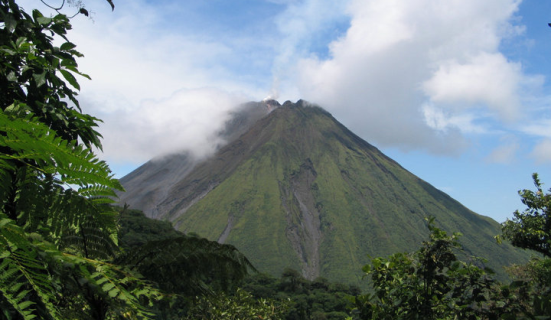
Without a doubt, however, the most popular of Costa Rica’s volcanic giants is Arenal. Located in the northern part of the country, it towers over the surrounding fertile landscape, surrounded by plantations producing the best coffee in the world. The symmetrical cone-shaped Arenal Volcano erupted in the past an average of 41 times a day. While it currently slumbers, Arenal and the surrounding area are a great base for adventure touring.
Poás Volcano

Poás Volcano is one of the most popular destinations in the Central Valley . It is one of the world’s largest active volcanoes, with sulfuric emissions, active fumaroles, and two crater lakes. The northern lake, called the Laguna Caliente (hot lagoon) is one of the world’s most acidic lakes, in direct contrast to Lake Botos, the southern, which is cold, clear, and surrounded by the beauty of the cloud forest. Poas Volcano closed back in April 2017 as the result of volcano eruptions but has since reopened.
Related Article: Poás Volcano National Park Guide
Rincón de la Vieja Volcano

Rincón de la Vieja Volcano
The largest and arguably most temperamental volcano in the Guanacaste region is the Rincón de la Vieja Volcano. Her temper trickles into the surrounding national park in a series of volcanic hot springs, waterfalls, and bubbling mud pools. Legend has it that a wise old medicine woman lived on the slopes of the mighty volcano until her death. Her presence was so strong in the region that the volcano now bears her name, literally translating to “the corner of the old lady.”
Related Article: Rincon de la Vieja National Park Guide
Irazu Volcano
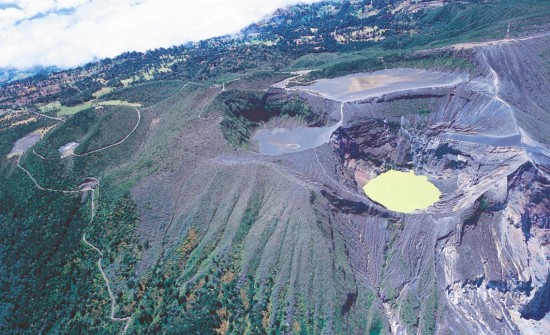
The Irazu Volcano is located in the Central Valley near the capital city of San Jose . Irazu has two main craters, one containing a green-tinted lake. The craters are easily accessible from San Jose by a road that leads straight up to the summit craters. Although the volcano’s summit is usually cloud-covered, Irazu is the tallest active volcano in Costa Rica at 11,260 feet tall. The smaller of the two craters is Diego de la Haya.
Turrialba Volcano
The Turrialba Volcano, also near San Jose , can be a little difficult to get to. The hike to the top, where motorized vehicles are not permitted, can take between 1 and 3 hours. The surrounding park sees fewer tourists than others in the country and the trails tend to be more rustic and challenging. However, the incredible views throughout the park are well worth the work!
At this time, travelers should not visit Turrialba Volcano due to volcanic activity.
Costa Rica Volcano FAQ:
You deserve a vacation planned by experts., us headquarters, costa rica office.
Barrio La California, Calles 27 & 29, Ave 2, Ed #2798 Oficina #8 San Jose, Costa Rica 10104
READ OUR REVIEWS

- DESTINATIONS
- THINGS TO DO
- PLAN YOUR TRIP
Privacy Overview
This is a necessary category.
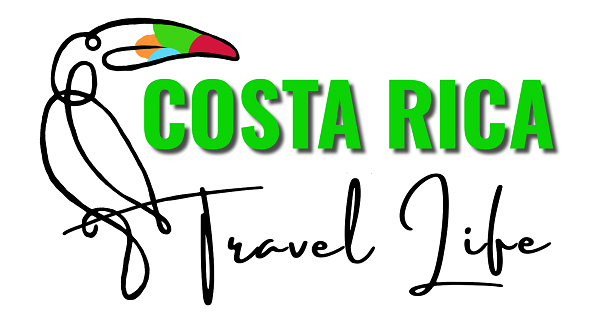
Home » Travel Planning and Inspiration » 7 MUST-VISIT Volcanoes in Costa Rica
7 MUST-VISIT Volcanoes in Costa Rica
By Author Costa Rica Travel Life
Posted on Published: June 16, 2022 - Last updated: April 4, 2024
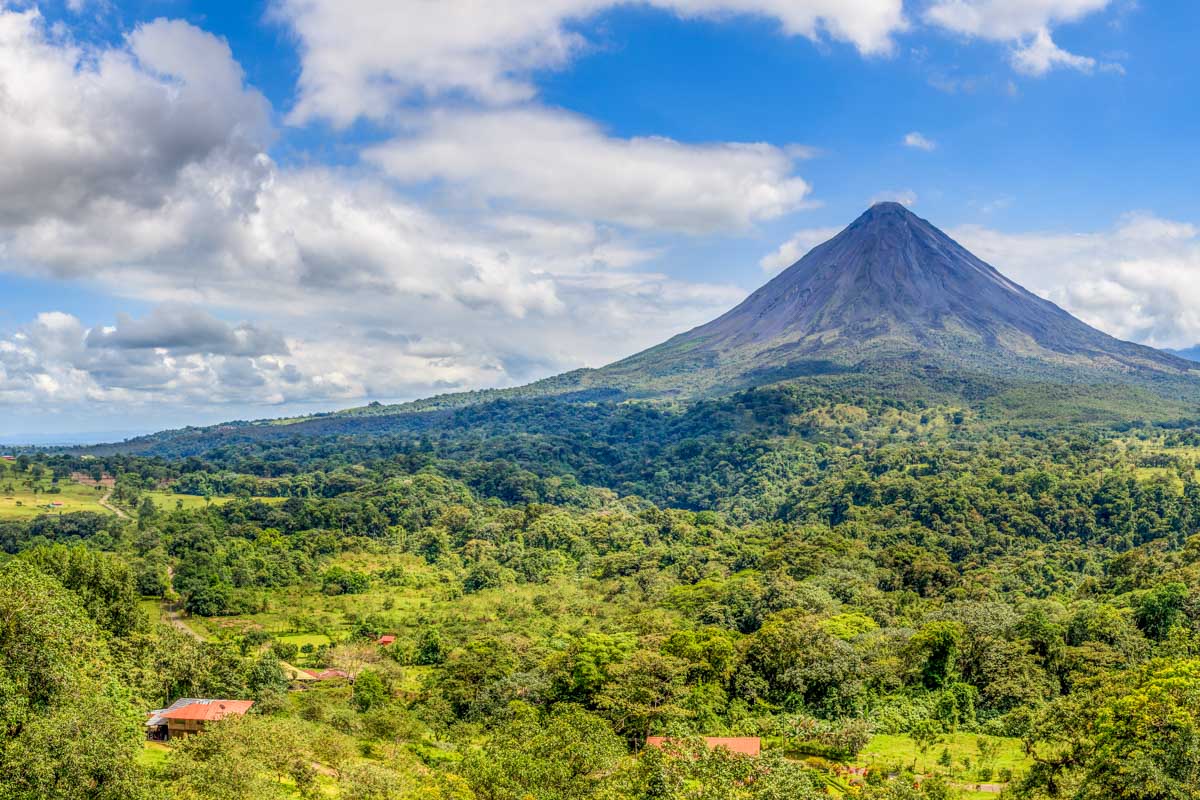
This blog may contain affiliate links. Read our disclosure policy for more info.
Costa Rica is quite the destination for volcano lovers (like myself.) In fact, there are 66 well-identified volcanoes here, five active and another 61 dormant or extinct. With that said, there are believed to be over 200 volcanic structures in the country, with many still undiscovered and hidden by dense rainforests. Pretty cool, right?
All of these volcanoes run along the center of the country, on what is known as the Central American Volcanic Arc . This area has the greatest density of volcanoes of anywhere else in the world and stretches from Mexico to Panama.
The five active volcanoes, and most popular, in Costa Rica include Poas, Arenal, Rincon de la Vieja, Irazu, and Turrialba. The sixth is Miravalles, but it’s not that popular to visit.
In this blog, I will detail the seven must-visit volcanoes in Costa Rica. I will share with you my personal opinions on why you should visit each one as well as cover how to get there, how much tickets cost, and some other helpful tips like when to go and what guided tours are the best-rated !
It’s your complete guide to Costa Rica’s best volcanoes!
Best Volcanoes in Costa Rica
1. poas volcano .
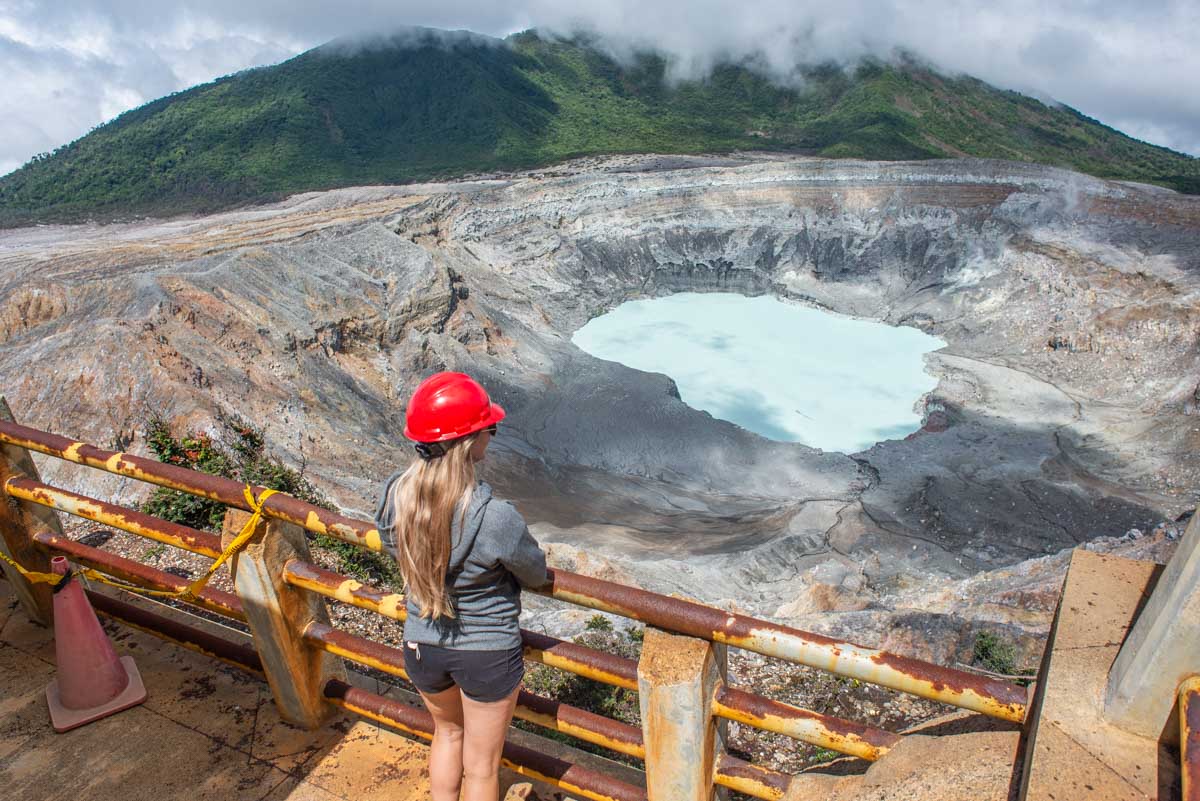
The super-active Poas Volcano is just an hour and a half drive from the center of San Jose. It towers over Parque Nacional Volcán Poás at 2,697 meters (8,848 feet)! Would you believe it’s erupted 39 times since 1828!
This volcano is most well-known for its blue acid lake, which is, in fact, one of the biggest craters in the world! It’s quite a sight to see this massive crater in person – it’s a whopping 1.5 km (0.9 miles) in diameter. It’s no wonder this is one of the top attractions in Costa Rica !
For the best view of the crater, pick a sunny day and start climbing as early as possible to avoid the clouds that tend to cover the volcano in the late afternoon. This is my top tip for Poas Volcano because I learned this the hard way – the first time climbed all the way up, only to see nothing but clouds!
After arriving at the volcano, you’ll enjoy a short brief and safety video about the volcano and what to do in an emergency. After, it’s time to hike to the volcano. The hiking trail to the observation deck over the crater is only short and mostly along an access road which takes around 15 minutes. Once at the crater, you can stare into the volcano and take a look around for about 20 minutes.
Poas Volcano National Park is open every day from 8 am to 3:30 pm, and tickets cost $15 USD for adults and $5 USD for children (there are discounts for nationals.) You MUST book your ticket online in advance via the SINAC website because not only are a limited number of tourists allowed per time slot to the crater, but they do not sell them at the entrance. During peak season, the early morning time slots book up days in advance. Note, if you book a guided tour , entrance tickets are often already included.
To get to Poas Volcano National Park, renting a car is best – especially considering it’s just a 2-hour drive from San Jose. Our favorite company to use in Costa Rica is Discover Cars . With your own car, you can take your time at the crater, go on some hikes and even visit some traditional villages close to the entrance to the park, such as Varablanca and Fraijanes.
If you love strawberries like me, then you’re in luck because this area of Costa Rica is famed for its delicious strawberries. On your drive to the volcano from San Jose, you will come across some roadside stalls selling large varieties of these berries. You can also pick up other unique delicacies from vendors like the area’s famous Palmito Cheese!
If you don’t have a car, it’s best to book a guided tour. You can check all of our recommended Poas Volcano tours here or go ahead and book this tour, which leaves San Jose at 8 am and includes your entrance fee to Poas National Park. What’s great is that if you book this particular tour, you can skip the typically long lines at the volcano.
If you want to combine two of the best attractions near San Jose into one day, then consider booking this full-day tour which visits the volcano as well as La Paz Waterfall . It departs from San Jose and is 12 hours in duration.
Related Read: Check out our top safety tips for visiting Costa Rica !
2. Arenal Volcano
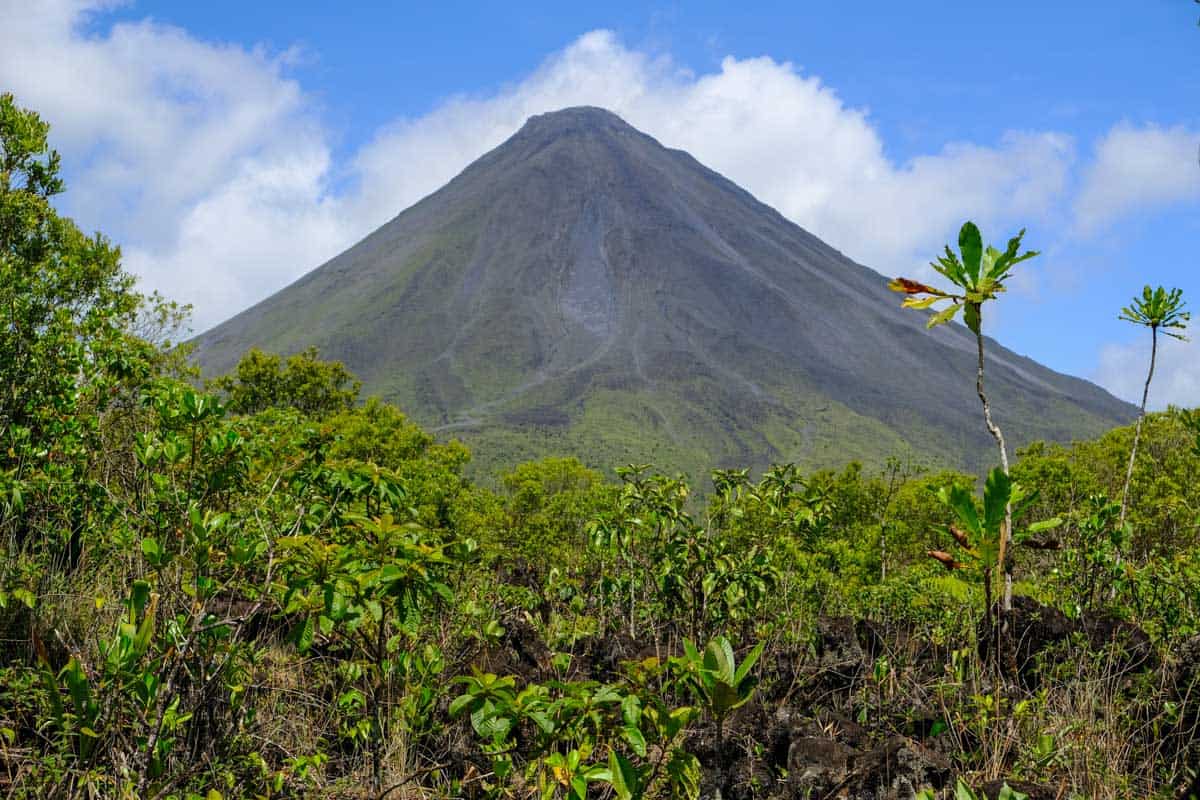
A 3-hour drive from San Jose is the 1,657-meter (5,436 feet) tall Arenal Volcano; it’s considered an active volcano and last erupted in 2010. Before this, Arenal was considered the most active volcano in Costa Rica and had a major eruption in 1968. It’s illegal to climb to the top of Arenal, but many people still make the 10 to 11-hour hike!
If you plan to drive here from San Jose, it’s best to leave early in the morning so that you can take your time. If you have time, stop at the Arenal Lagoon, which is a lovely place to relax, or tick off some of the hot springs in the La Fortuna area off your list.
With that said, the closest town to Arenal is La Fortuna, which sits only 15 minutes from the entrance to the park. La Fortuna is a popular place to visit in Costa Rica and is home to plenty of things to see and do!
Within La Fortuna town, there are plenty of vantage points of the volcano. But, as is the case with many other volcanoes on this list, clouds can often cover the summit, especially later in the day, making it invisible. It’s best to avoid the area during the rainy season, which is from May to November – if seeing Arenal is important to you, then aim to visit in February!
If you’re keen to get a good look at the volcano (or hike up it, which I don’t recommend as it’s illegal), it’s best to spend a few nights in the town of La Fortuna , which is the gateway to the National Park. Luckily, there are loads of great hotels in La Fortuna , as well as fantastic places to eat .
Exploring the park is quite an adventure, and you can explore around the volcano’s base. You can experience the park on your own and hike one of the many hiking trails there. The great thing about the trails is that there are different viewpoints of the volcano to be enjoyed along the way. There’s even a section where you can see where lava from the last major eruption flowed down its side.
I visited Arenal Volcano National Park on a guided tour simply because I love hearing all about the area from a knowledgeable guide. This specific tour is a great option as it includes all your fees, water, transport, and a guide. If you’re short on time, you should consider booking a combination tour. This full-day tour visits Arenal and La Fortuna Waterfall , a butterfly garden, Maleku Indian village, and the free hot spring river.
As mentioned, Arenal Volcano is located within Arenal Volcano National Park. The admission is $15 USD for adults and $5 USD per child, and the entrance to the park is from 8 am to 4 pm.
3. Chato Volcano

UPDATE: The last part of the hike up Chato Volcano, although accessible (the lodges will still let you access the trail for a fee), is now illegal to use. The area has been closed to try and preserve the landscape from extreme erosion. This means that hiking the trail all the way is no longer a responsible thing to do and should be avoided. You can still access the bottom part, as it is not part of the closure.
Chato Volcano (or Cerro Chato) is also located in the La Fortuna district and is 1,140 meters (3,740 feet) tall. It’s the smallest volcano by height on this list. It’s only a short drive from La Fortuna and actually sits right next to Arenal Volcano. It’s an inactive volcano and is last estimated to have erupted over 3,500 years ago!
Unlike Arenal, hiking up Chato Volcano is completely legal. This hiking trail can be rated as either moderate or difficult, depending on the weather, and leads to a breathtaking turquoise crater lake. You can swim in this 500-meter-wide lake (1640 feet), which is a great option on a hot day!
It should take most people between 3 and 4 hours to hike up and down again, but my advice is to start the hike before 10 am so that you can take your time at the top and you’re not hiking back in the dark. If it’s raining, I don’t advise hiking this trail!
There are two routes up to the top of Chato Volcano; the first is the ‘locals’ way to the top, which starts from the Green Lagoon Lodge near the La Fortuna Waterfall entrance . This is the most convenient option for those without a car, but because the trail is no longer maintained it’s not recommended in the rainy season as sections of the trail can get washed out, and it’s hard to navigate. Green Lagoon Lodge charges $10 USD to use their entrance, which also gives you pool access, shower facilities, and parking.
The second route to the top starts from Arenal Observatory Lodge . This is much further from La Fortuna town (over 30 minutes drive), but the trail is more maintained (but still in no way easy.) The lodge charges $12 USD to enter the trail, and that doesn’t include access to any facilities.
The route to the top is up to you, but personally, I took the second option. From what I have heard, it was a great choice!
4. Irazu Volcano

In the province of Cartago, you will find the Irazu Volcano . This is Costa Rica’s highest volcano at 3,432 meters (11,259 feet), and it’s still active, having last erupted in December 1994. It’s located not too far from San Jose, at an hour and 20-minute drive, which means it’s a popular day-trip option from San Jose . Irazu is, without a doubt, one of the most popular volcanoes to visit in Costa Rica !
Irazu’s summit is most well-known for having several craters, including the huge main crater and the Diego de la Haya crater.
What’s great about Irazu is that you don’t have to hike all the way to the summit; you can drive to the main parking lot at the top and access the main crater via a short and easy trail. It’s just 3 minutes each way, and you can see some unique plant and bird life along the way.
Once you reach the main crater, you will be awed – it’s a whopping 1,050 meters (3,445 feet) in diameter and over 300 meters (984 feet) deep! In the rainy season, there’s a green lake at the bottom of the crater, while in the dry season, you can see evidence of old lava flows.
To the right of the main crater, along the trail, is the smaller Diego de la Haya crater which is 690 meters (2264 feet) in diameter and is a unique bright green color.
You can take the public bus to the main parking lot at Irazu from downtown San Jose, which will take approximately an hour and 40 minutes (without traffic) and is operated by Buses Metropoli. The bus departs at 8 am and heads back to San Jose at 12:30 pm. I’ve personally not done this as I had a rental car.
At the main parking lot, there are toilet facilities and a small shop selling snacks, drinks, and some souvenirs. There are also some picnic benches here.
The entrance to the national park is $15 USD; you must reserve your tickets online on the SINAC website in advance. The opening hours are from 8 am to 4 pm.
This half-day tour to the volcano is a great option if you prefer a guided tour. It includes transportation to/from San Jose and snacks! You will have 3 hours at the volcano as part of this tour. On the way back, it will also stop to tour the Basilica de Los Angeles, in Cartago, the Costa Rican Cathedral of la “virgencita” the patron saint of Costa Rica to whom the Costa Ricans pay homage every August during its pilgrimage.
Another great option is this 7-hour guided tour which includes a few hours at the volcano and also visits the city of Cartago and the Basilica of the Angels. Lunch and pick-up from your hotel in San Jose are also included in the price.
5. Rincon de La Vieja Volcano
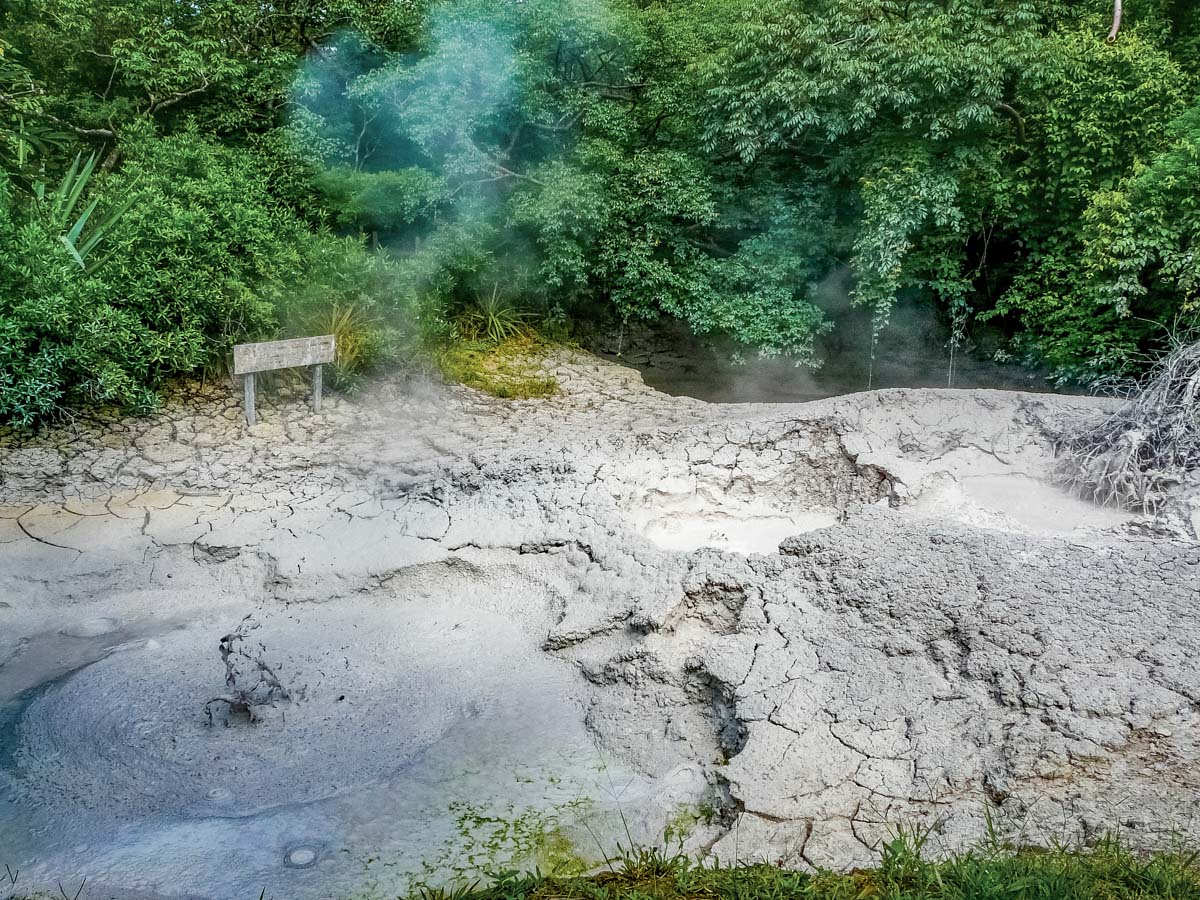
The Rincon de la Vieja Volcano is 1,916 meters (6,286 feet) tall and is one of the most-visited volcanoes in Costa Rica. It is located within the Rincon de la Vieja National Park , an hour’s drive from the city of Liberia in the province of Guanacaste . This national park is interestingly also home to another volcano, the dormant Santa Maria Volcano. The Rincon de la Vieja Volcano is indeed active, and the last large eruption here was in 1998. In fact, 1-2 small volcanic events occur here daily!
The Rincon de la Vieja National Park is a whopping 35,000 acres in size and is also home to the Rio Negro Hot Springs, waterfalls, and hiking trails. It’s undoubtedly one of the best National Parks in Costa Rica . As well as that, there’s an awesome adventure center here that offers horseback riding, ziplining, and tubing !
Directly translated from Spanish, Rincon de la Vieja means ‘the old woman’s corner’ and is named so by the native tribe who believe a witch at the top of the mountain causes it to bubble and steam (like a cauldron!)
While you can explore this volcano independently, tours are quite popular here.
There are some great hiking trails within the park; I recommend the short 20-minute trail to the Las Pailas (boiling mud pots) – a cool feature of the area where the mud is so hot it bubbles in small pools! Another good hike is the Catarata La Cangreja trail (about 3 miles/4.8 kilometers each way) which leads to a beautiful waterfall. There are also guided hiking tours, such as this tour , on offer.
As I mentioned, the closest city to the Rincon de la Vieja Volcano is Liberia (just an hour’s drive away), and booking a full-day adventure tour from the city is one of the best ways to explore the volcano. This 6 to 8 hour tour is a great option as it includes a guided hike along the Las Pailas loop trail, where you can see bubbling mud pools and spot spider monkeys and iguanas. As well as that, you will visit Oropendola waterfall and Rio Negro hot springs. Lunch in Curubande Village is also included in the price.
Rincon de la Vieja National Park is just over two hours’ drive from other popular tourist towns like Playa Flamingo and Tamarindo . This tour from both towns is highly recommended and is 8 to 10 hours in duration. This tour is less about the adventure activities on offer here and more about exploring the national park.
Rincon de la Vieja National Park is open Tuesday to Sunday (closed Mondays) and costs $17 USD for adults and $5.60 USD for kids – if you don’t have a tour booked.
6. Tenorio Volcano
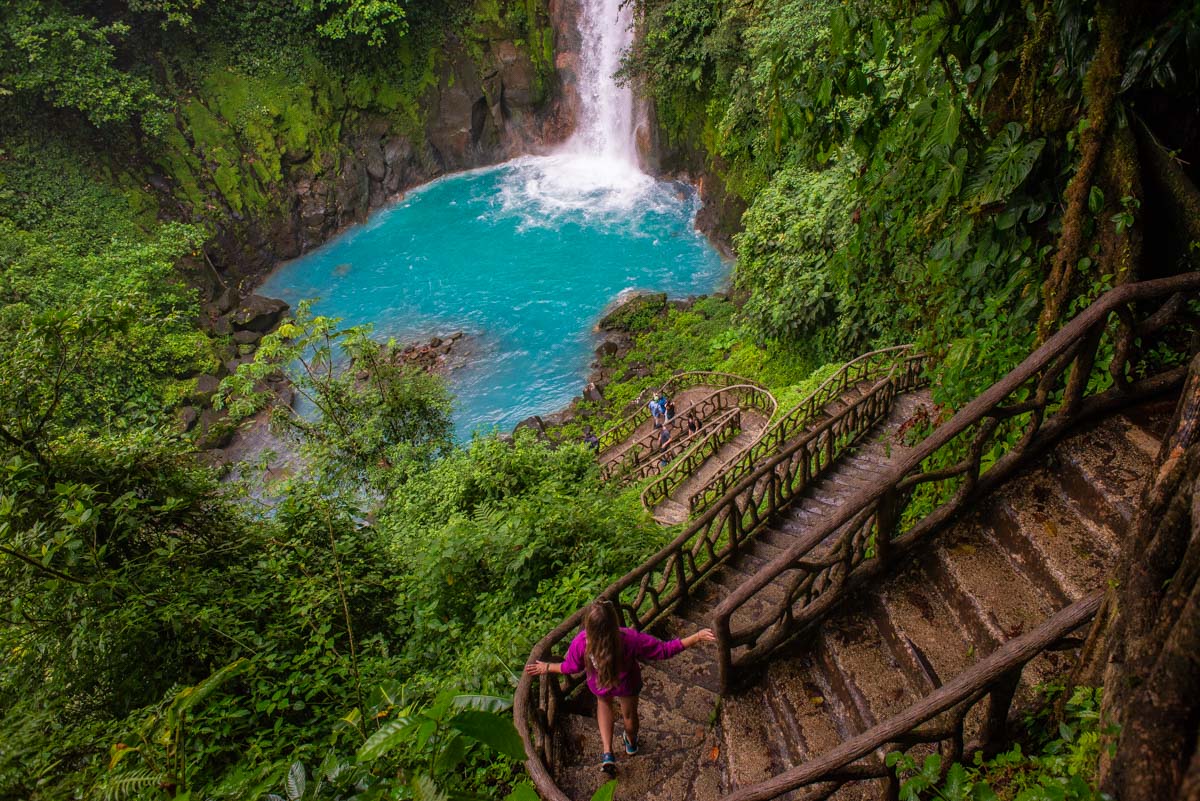
The inactive Tenorio Volcano is 1,916 meters (6,286 feet) tall and is located within the national park of the same name – the Tenorio Volcano National Park in Guanacaste Province. The national park is most well-known for being the home of the Rio Celeste waterfall – one of the best waterfalls in Costa Rica .
Visitors to the park have increased massively since 2019, and as a result, there are visitor quotas in place, meaning only a limited number of people can visit here every day. No more than 500 people are allowed in at one time, and no more than 1,000 per day. For that reason, it’s important to arrive early.
The summit of the volcano is closed to the public, but special permission can be granted to climb to the top in some circumstances. If you did go to the top, you would see a large walled crater and a lake, as well as an abundance of wildlife (most likely thanks to the lack of visitors.)
To be honest though, the reason to visit Tenorio is for Rio Celeste and not the volcano itself. In fact, the top attraction, and one of the best things to do in Costa Rica , is the highly-trafficked out and back hiking trail within the park that travels along Rio Celeste.
The trail passes by some of the most beautiful natural attractions in Costa Rica, like the aforementioned Rio Celeste Waterfall. Also to be seen along this 5.5 km (3.5 miles) trail is La Laguna Azul, a bright blue lagoon; Los Borbollones, a section of the river where you can see volcanic bubbles; and El Tenidero, the point where the two rivers that cause the blue color meet. The trail is relatively easy, besides one steep set of stairs that leads to the viewing platform of the waterfall.
Tenorio Volcano is one hour and 40 minutes from Liberia, one hour and 25 minutes from La Fortuna, and 3.5 hours from San Jose.
This 8-hour full-day trip from La Fortuna is a good option if you don’t want to make your own way to the park. It includes a guided hike where you can spy on wildlife like monkeys and birds. Lunch in the park is included in the price.
I personally visited on my own and had a fantastic time. We left La Fortuna before 7 am to get through the gates just after they opened and got to enjoy the waterfall without the crowds. I highly recommend this!
The park is open every day (including weekends and holidays) from 8 am until 4 pm. However, the last entry is at 2 pm. If you have a rental car, keep in mind that parking at any of the car parks at the entrance is $3.50 USD per car. The Tenorio Volcano National Park entrance fee for adults is $12 USD and $4 USD for children. You pay the fee on arrival with card, no cash is accepted.
There are restrooms and restaurants at the entrance to the park and fresh coconuts for when you finish the trail!
7. Turrialba Volcano

Turrialba Volcano National Park in the Cartago Province is believed to be one of the least-visited areas in Costa Rica, despite being home to one of the most active volcanoes in the country – Turrialba Volcano. Turrialba is explosively eruptive, having had two major eruptions as recently as 2016 and 2017. It’s the second tallest volcano in Costa Rica (behind Irazu) at 3,340 meters (10,958 feet)!
Increased volcanic activity in January 2022 resulted in the National System of Conservation Areas (SINAC) temporarily closing the park to the public. A reminder that although volcanoes are fun to visit, they still pose a danger to visitors.
Turrialba isn’t as developed as the other national parks on this list, and the official road into the park is only paved for the first 10 km (6.2 mi). With that said, the unpaved sections are in good condition.
A 10.5 km (6.5 mile) hiking trail (out and back) leads you to the summit, and it’s considered a moderate hike, so a reasonable level of fitness is required. It should take most people under 3 hours to complete this trail. At the top of this volcano is a world full of unique Costa Rican wildlife like giant toads, toucans, and howler monkeys within a unique cloud and rain forest. So the adventure getting here is well worth it, in my opinion. You can also spot several old lava flows on the trails here.
Turrialba Volcano is a two-hour and 15-minute drive from San Jose and only 10 km (6.2 mi) from the popular Irazu Volcano, which I mentioned earlier. The entrance to the park is $12 USD per adult and $5 USD for children. It is open from 8 am to 3:30 pm daily.
It’s important to point out that anyone wanting to hike the trail MUST be led by an accredited guide. This is why tours are very popular.
If you’ve limited time in Costa Rica, then this full-day tour which includes a visit to both Irazu and Turrialba , is ideal. This 10-12 hour tour departs from San Jose and also includes a guided coffee tour! Coffee tours in Costa Rica are a must (the coffee is world-famous!) so this is a nice add-on.
Getting Around Costa Rica
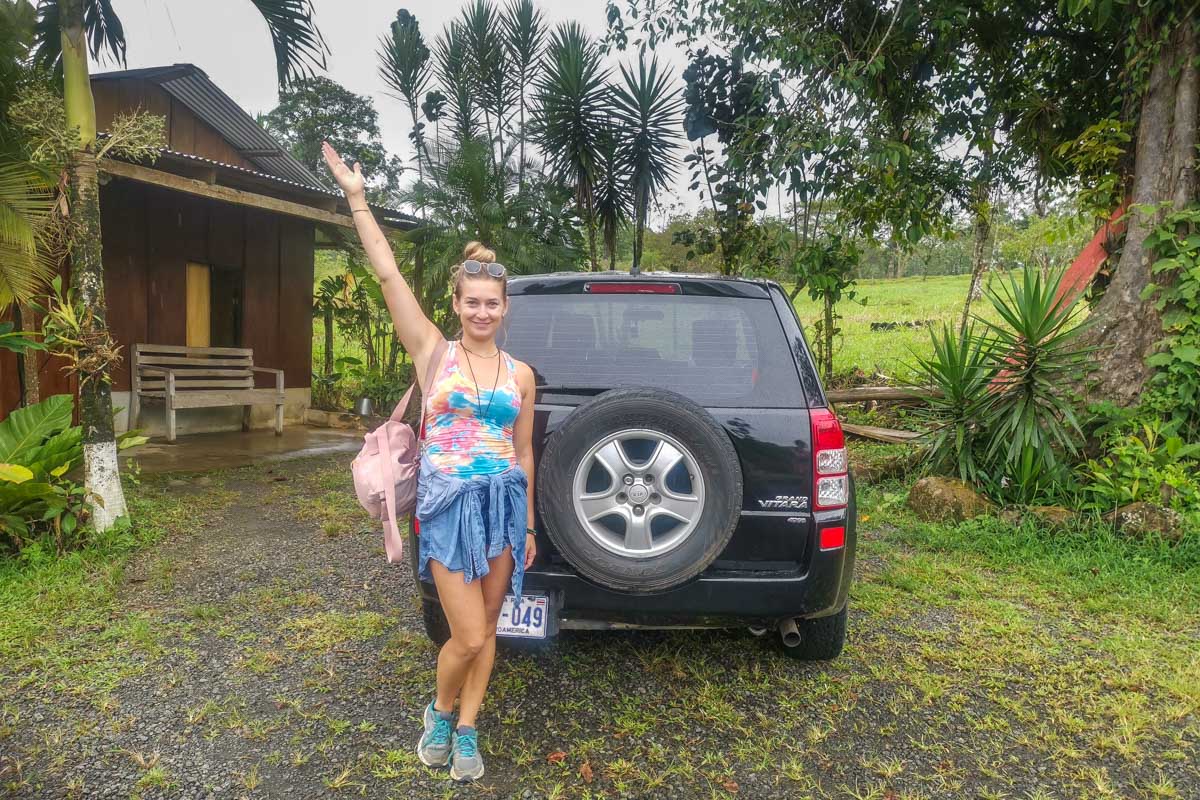
How you choose to get around Costa Rica is one of the biggest decisions you’ll make when planning your holiday here! How you do it depends on your budget, travel style, and comfort level.
Renting a Car
Without a doubt, the number one way to explore Costa Rica is in a rental car. We book rental cars on the Discover Cars website as we have had good experiences with them in the past.
One of the things you need to watch for when renting a car in Costa Rica is the mandatory insurance that the government requires you to have. There are a lot of very cheap rentals that don’t include this mandatory insurance (TPL) in the original booking price, but there are also ones that do. To avoid additional surprise charges when you pick up your rental car, be sure to rent a car that includes the mandatory insurance when you book.
Thankfully, on Discover Cars it’s easy to tell apart the companies that include the mandatory insurance and those that don’t. The trick is you can’t pick any car on their website. In the picture below, you can see this rental car, with pick up in Jaco, includes the TPL. That means the mandatory insurance is included in the price. Any cover you get above that is extra.
Of course, I still suggest getting the full coverage offered by Discover Cars, which covers you even more.
You can browse cars on Discover Cars here .

Book Shuttles
If renting a car isn’t in your budget, you don’t feel comfortable driving in Costa Rica , or you just don’t like driving, shuttles are the next best option. There are hundreds of shuttle routes available all over the country, and they are very affordable.
Shuttles in Costa Rica are specifically for tourists and often include pick up and drop off at your selected hotels and airports. The drivers also speak some English, and the vehicles have air conditioning. You’ll also be guaranteed a seat when you book a shuttle (which isn’t the case with the public bus system.)
To get the best price, use the website Bookaway . They compare all the offers and prices of shuttle companies in Costa Rica so you get the best price! Honestly, we have saved so much money using Bookaway!
You can search for shuttles online on Bookaway here.
Lastly, you can use the public bus system. On short journeys, such as from San Jose to La Fortuna or Uvita to Manuel Antonio, this system is great. However, the longer the journey the more hassle and time spent on a bus. It’s undoubtedly best to save the public bus in Costa Rica for short and straightforward trips!
The public buses are definitely the cheapest way to get around Costa Rica, but they are not always very reliable and schedules often change without notice and delays are to be expected. The buses can also be very crowded and hot – so just be prepared!
It’s also good to speak some Spanish if you plan on riding the public bus since most drivers and ticket booth operators don’t speak English.
The BEST Things to do in Costa Rica

While there are so many fun things to do in Costa Rica , a couple of specific attractions and activities stand out amongst the rest. They are:
Explore Volcanoes
There are some impressive (and beautiful!) volcanoes that you’ll want to check out while you’re here.
Poas Volcano is known for its bright blue crater lake. Poas Volcano is most commonly visited on a day trip from San Jose. This Poas Volcano tour from San Jose is one of the best you can do since it also includes a visit to the La Paz Waterfall Gardens as well as a coffee farm.
Arenal Volcano is also one of Costa Rica’s top attractions. Arenal Volcano is located closest to the town of La Fortuna. You can book this full-day tour from La Fortuna that takes you to the volcano to hike, the famous La Fortuna Waterfall and even a hanging bridge – it’s a full day of adventure!
Chase Waterfalls
La Fortuna Waterfall is one of our favorite waterfalls in all of Costa Rica. You can easily visit it on this full-day tour in La Fortuna that also visits hot springs.
Rio Celeste is another beautiful waterfall that is famous for its bright blue water. Rio Celeste is a popular attraction to visit from Guanacaste Province and this particular tour includes transport from there. Alternatively, you can book this tour from La Fortuna or this tour from San Jose .
See the wildlife
Costa Rica is the place for wildlife lovers! One of the best places to see lots of animals in their wild habitat is at Manuel Antonio National Park . With the help of a guide you will see plenty of birds, monkeys, and even sloths! This particular tour is super popular and also has amazing reviews, so you really can;t go wrong.
There are also lots of wildlife rescue centers around the country that are worth visiting. The Jaguar Rescue Center in Puerto Viejo is one of our favorites as well as Rescate Wildlife Rescue Center in San Jose where you can book this private tour.

If you’re planning a vacation to Costa Rica and just have to see a volcano, then I hope this list has helped you narrow down which ones to see. Those were 7 must-visit volcanoes in Costa Rica, but of course, there are lots more for you to explore – Costa Rica is known for its volcanoes, after all.
Thanks so much for reading. I hope you enjoyed reading our guide to the best Volcanoes in Costa Rica. If you did, then be sure to browse around and check out more of our in-depth guides, such as:
The best time to visit Costa Rica
Ultimate guide to the Nicoya Peninsula, Costa Rica
21 best beaches in Costa Rica
James Kaiser
Best Volcanoes to Visit in Costa Rica
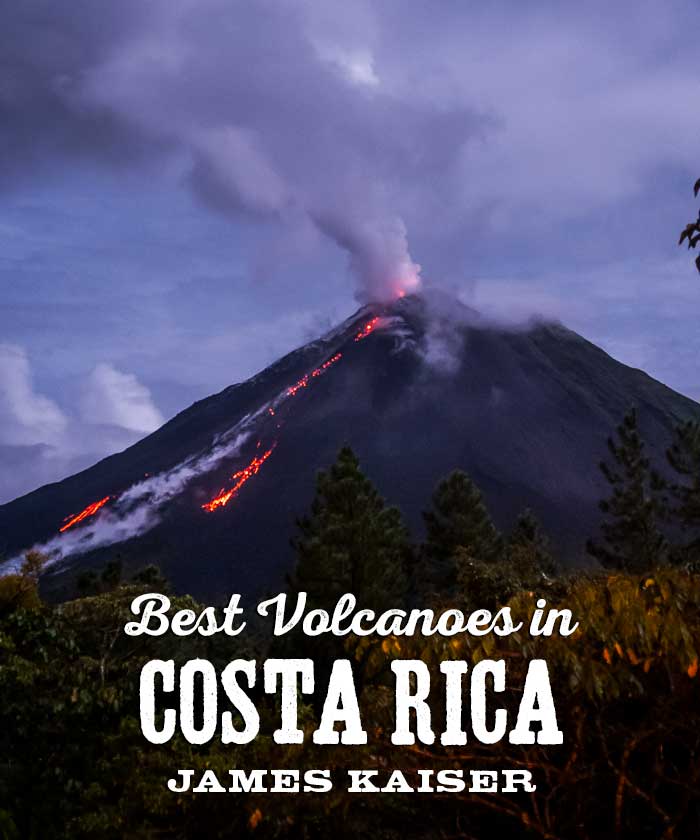
Home / Costa Rica / Volcanoes
The best volcanoes to visit in Costa Rica are:
4. Rincon de la Vieja
5. turrialba, costa rica volcanoes.
Arenal is the most famous volcano in Costa Rica. But after decades of steady eruptions, it suddenly went quiet in 2010. Arenal Volcano is now considered dormant.
At Poás and Irazú you can drive to the rim of the volcano and peer into the crater. For many people, staring into the heart of a volcano is a highlight of visiting Costa Rica .
For decades you could also visit the crater of Turrialba Volcano, but access is currently limited due to increased volcanic activity. Some volcanologists think Turrialba could be the new Arenal.
Before I tell you more about Costa Rica’s best volcanoes, let’s talk about why they formed in the first place.
Why does Costa Rica have so many volcanoes?
Costa Rica is home to over 200 volcanic features. Why is there so much volcanic activity? Because Costa Rica is part of the Central American Volcanic Arc, a 1,500-km (932-mile) chain of volcanoes that stretches from Guatemala to Panama. The arc has the greatest density of volcanoes in the world — roughly one volcano every 35 kilometers (22 miles). It is the most volcanically active region in the Western Hemisphere.
The Central American Volcanic arc formed due to plate tectonics. Specifically, the Cocos Plate, which underlies the Pacific Ocean west of Central America, is slowly slipping under the Caribbean Plate, which underlies Central America and much of the Caribbean.
This process, called subduction, is responsible for the region’s frequent earthquakes and regular volcanic activity. As the edge of the Cocos Plate pushes deep underground it melts, sending giant plumes of magma rising under Central America. When these magma plumes break the surface, they form volcanoes.
Of Costa Rica’s four mountain ranges, two — the Central Mountain Range and the Guanacaste Mountain Range — are volcanic in origin.
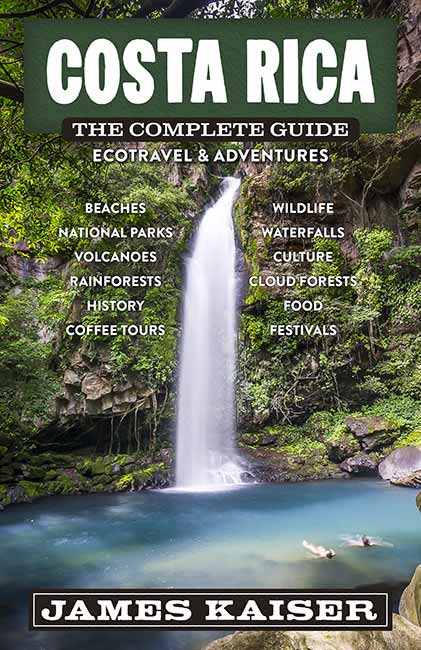
Discover the best of Costa Rica
The #1 Costa Rica guidebook.
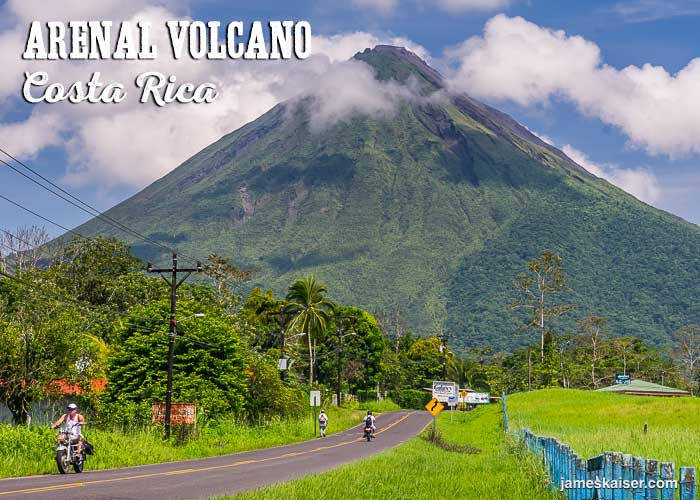
1. Arenal Volcano
Arenal is the most famous volcano in Costa Rica. That’s because, between 1968 and 2010, it ejected a steady stream of lava and hot rocks. This delighted visitors, who watched the glowing eruptions safely from afar, then relaxed in natural hot springs nearby. Between the nightly fireworks and the soothing hot springs, tourism boomed. By the mid-2000s dozens of hotels surrounded Arenal Volcano. Then, in 2010, the eruptions suddenly stopped. Arenal went dormant, and it has remained dormant ever since.
Is the party over? Not necessarily. Arenal could rumble back to life at any moment. In the meantime, however, it remains a terrific destination. The massive volcano, which towers above the nearby town of La Fortuna, remains a breathtaking sight. And the area around Arenal is filled with outdoor adventures. There are waterfalls, swimming holes, hiking trails, whitewater rafting trips, zip lines — and don’t forget those terrific hot springs. You can also visit Arenal Volcano National Park, which protects the blackened remains of historic lava flows.
Learn more about visiting Arenal Volcano .
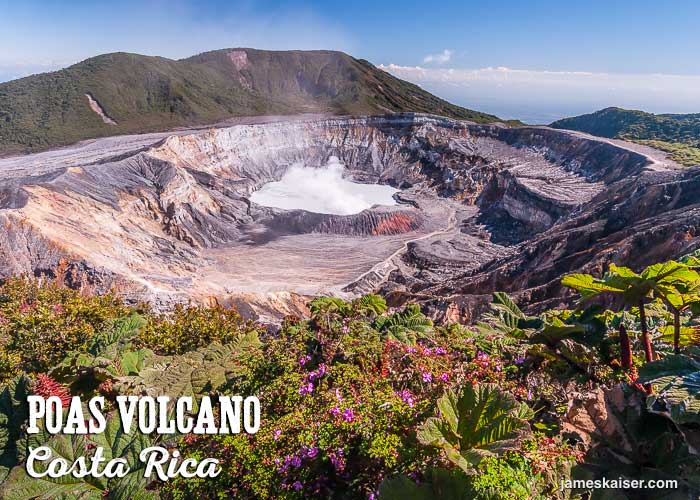
2. Poás Volcano
This dramatic volcano towers above Costa Rica’s densely populated Central Valley. Both its massive, lake-filled crater and the surrounding cloud forest are protected as Poás Volcano National Park. Due to its proximity to San José — just 45 km (28 miles) from downtown — Poás is the most visited national park in Costa Rica. Over 300,000 people visit each year. If you’re looking to escape the gritty, urban sprawl of the Central Valley, Poás makes a great day trip.
You can drive to the top of Poás, which rises 2,708 meters (8,885 feet) above sea level and is often covered in clouds. The peak is surrounded by cloud forest, but the main attraction is the volcano’s massive crater, which measures 1,320 meters (4,331 feet) across and 300 meters (984 feet) deep. The crater’s barren lunar landscape is a stark contrast to the lush vegetation surrounding it.
It’s often claimed — falsely — that Poás is one of the largest volcanic craters in the world. Poás does, however, contain one of the world’s most acidic crater lakes. The lake rests upon a cooled column of magma roughly 500 meters (1,640 feet) deep. This, in turn, rests upon a chamber of molten and semi-molten magma. Both the depth of the lake and its color vary due to rainfall and volcanic conditions.
Learn more about visiting Poás Volcano in my guidebook Costa Rica: The Complete Guide
Poás Volcano Eruptions
Over the past two centuries, Poás Volcano has erupted several times. A small museum near the park entrance displays photos of recent rumblings. A 1910 eruption produced an ash cloud 8 kilometers (5 miles) high that deposited roughly 640,000 tons of ash over the Central Valley. The last major eruption, in 1953, produced an ash cloud 7 kilometers (4.3 miles) high. It also sculpted the current crater. Minor eruptions are far more common. On Christmas Day 2009, a minor eruption launched a mixture of ash and water 550 meters (1,800 feet) in the air.
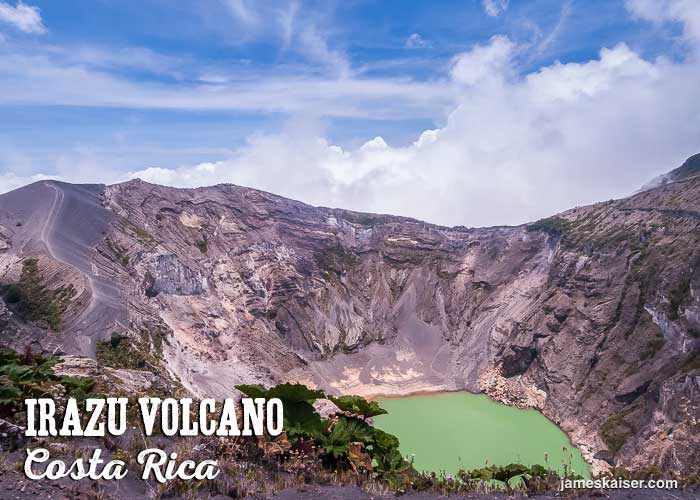
3. Irazú Volcano
Irazú is the tallest volcano in Costa Rica, towering 3,432 meters (11,260 feet) above sea level. Although the origin of the name Irazú is unknown, it is most likely derived from indigenous words that mean “earthquake” and “thunder.”
Irazú National Park lies 14 km (8.7 miles) northeast of Cartago. A paved road heads 27 km (17 miles) from downtown Cartago and climbs 2,000 meters (6,562 feet) to the rim of the volcano. From downtown Cartago, the drive takes about 45 minutes. On clear days, as you drive up Irazú Volcano, you’ll enjoy spectacular views of the valley below.
From the park entrance, a path heads to a viewpoint where you can peer into the depths of the lake-filled crater, which measures 1,050 meters (3,445 feet) across and 300 meters (984 feet) deep. On clear days it’s possible to see both the Caribbean and Pacific from the top of Irazú, but on most days thick clouds cover the volcano by 10am. Needless to say, it’s best to arrive early.
Irazú Volcano Eruptions
Over the past 300 years, Irazú has erupted over 20 times. The most recent eruption occurred on March 19, 1963. This date coincided with the arrival of U.S. President John F. Kennedy. As crowds of adoring Costa Ricans mobbed the Catholic Kennedy in San José, ash ejected by Irazú rained down over the Central Valley. In places, the ash layers were 0.5 meters (1.6 feet) thick. Some ash even drifted as far away as Tamarindo, over 200 km (124 miles) distant. Since that fateful eruption, Irazú has mellowed out considerably. Gently smoking fumaroles are the most exciting volcanic activity these days.
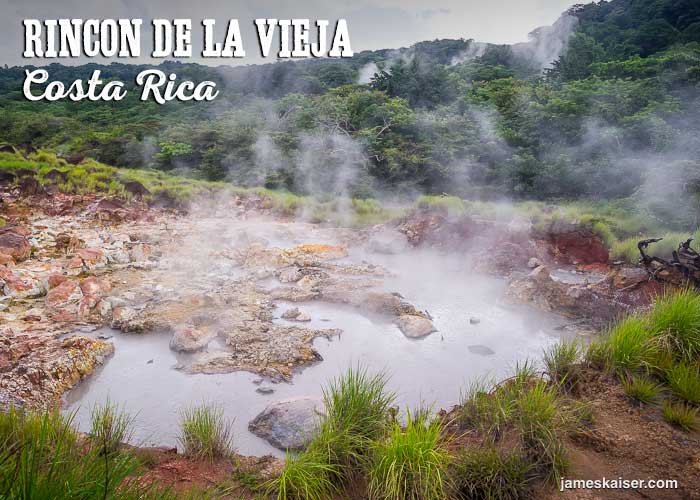
4. Rincón de la Vieja Volcano
Rincón de la Vieja Volcano rises 1,916 meters (6,286 feet) feet above sea level in dry, dusty northwest Costa Rica. Located 25 kilometers (15.5 miles) from the town of Liberia, the volcano is protected by 34,000-acre Rincón de la Vieja National Park.
The literal translation of Rincón de la Vieja is “Old Woman’s Corner.” In this case, however, it’s best translated as “Witch’s Hideout.” After spending some time in the park, you’ll understand why. A wide range of unusual volcanic features — bubbling mud pots, sulfurous hot springs, steamy pits — give the park an eerie, haunted feel. This is Costa Rica’s version of Yellowstone, providing an unusual glimpse of earth’s inner workings.
Over 40 km (25 miles) of hiking trails crisscross the southern half of the park, providing access to geological oddities, beautiful waterfalls and the crater of the park’s namesake volcano, which rises 1,916 meters (6,286 feet) above sea level. Private tour operators offer a range of outdoor adventures such as canopy tours, horseback riding, and whitewater inner tubing. However you choose to wear yourself out, you can finish the day at one of the soothing thermal pools located just outside the park.
The most challenging trail in the park heads to the lake-filled crater of Rincón de la Vieja volcano. The trail is 8 kms (5 miles) long, rises roughly 1,000 meters (3,281 feet), and takes about eight hours round-trip. As of this writing, however, the trail was closed due to volcanic activity. If the trail is open, I highly recommend going with a guide who can safely lead you to the top.
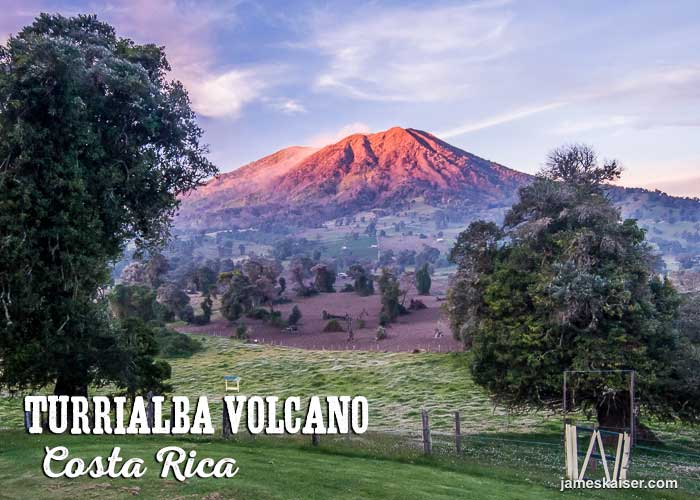
5. Turrialba Volcano
Turrialba is one of the least visited volcanoes in Costa Rica — despite its location just 10 kilometers (6.2 miles) from popular Irazú Volcano. Reached via a series of bumpy dirt roads, Turrialba rises 3,340 meters (10,958 feet) above sea level. Its slopes are surrounded by cool cloud forests and dairy farms, which produce the region’s famous Turrialba cheese. If you’re looking for a rugged, rustic mountain destination with beautiful scenery and zero crowds, Turrialba is hard to beat. From Cartago it’s a roughly 1.5-hour drive.
If you’d like to see Turrialba Volcano, the best way is to visit the Turrialba Lodge, a working cattle farm with impressive views of the volcano. This is the only hotel anywhere near the park. It offers a variety of guided tours, but bring warm clothes. Temperatures near Turrialba often drop below freezing at night.
Turrialba Volcano Eruptions
Turrialba Volcano erupted in 1864, and over the next four years it ejected massive amounts of ash over Costa Rica. Then the volcano went quiet for roughly 140 years. Not long ago, you could drive up a steep, rugged road on the side of the volcano and hike to the rim. From there you could gaze into the 50-meter (154-foot) deep crater, which is filled with smoking fumaroles.
Then, in 2009, Turrialba rumbled back to life, belching thick clouds of ash and vapor. In response the government closed Turrialba National Park, and for the most part it has remained closed since then. In September 2016 Turrialba erupted , launching rocks 4 kilometers (2.5 miles) high. Ash blanketed San José and the Central Valley, forcing Juan Santamaria International Airport to temporarily shut down.
Interestingly, Turrialba Volcano has been active over roughly the same time period that Arenal Volcano has been inactive . Are the two events correlated? Scientists don’t know. In 2017, however, volcanologist Eliecer Duarte suggested that Turrialba might be the “new Arenal.” Duarte noted that recently there has been an increase in luminous materials near the peak, and this activity poses no danger to visitors watching safely from afar.
Click here to see more results

FOR YOU, FOR FREE: 17 years' worth of firsthand Costa Rica trip planning and travel advice compiled into hundreds of articles, plus exclusive discounts. Created by a Costa Rican and a four-time published Costa Rica guidebook author. Welcome, amigos, and as we say in Costa Rica, pura vida!
Our 2023 Moon Costa Rica guidebook (third edition)
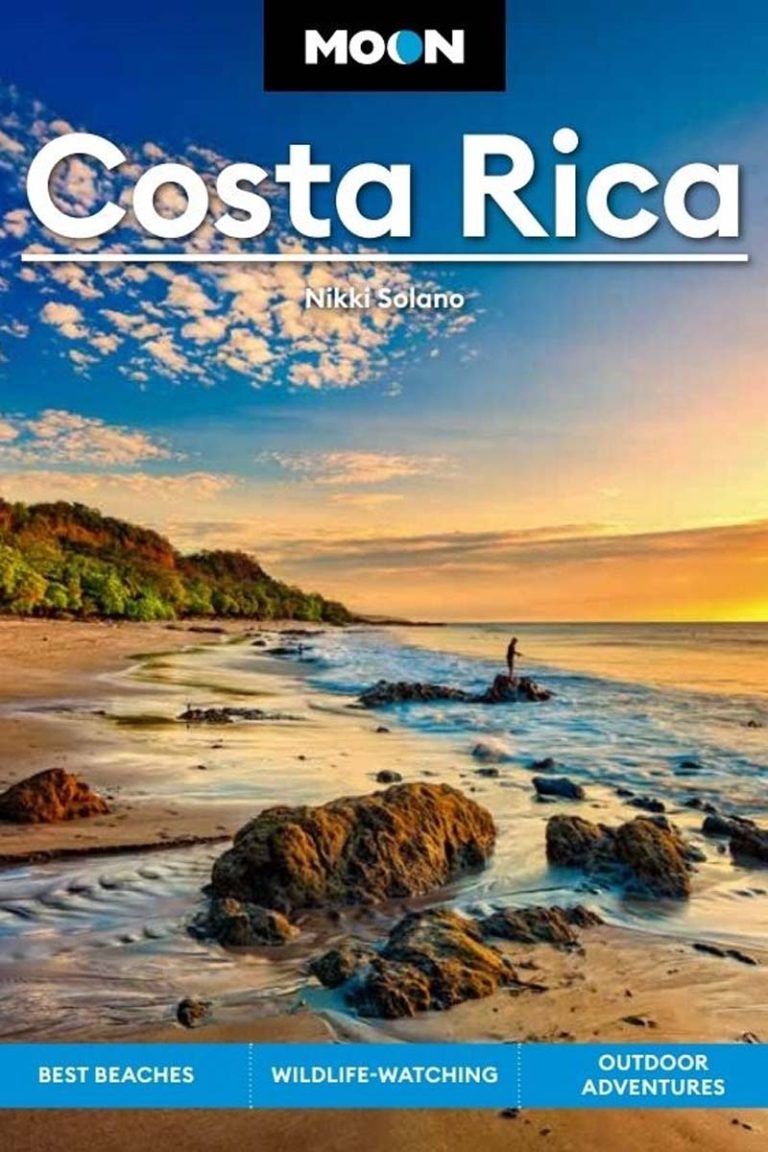
Our 2022 Moon Best of Costa Rica guidebook (first edition)
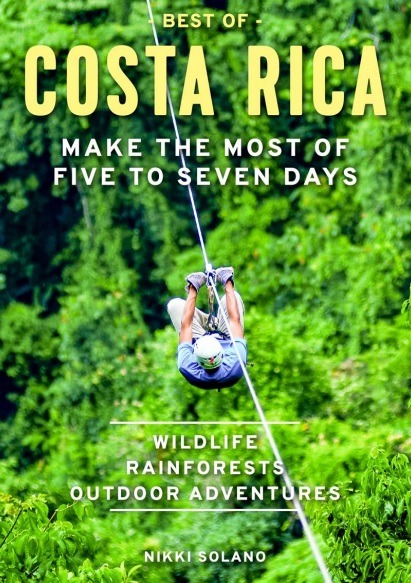
Our 2021 Moon Costa Rica guidebook (second edition)

Our 2019 Moon Costa Rica guidebook (first edition)
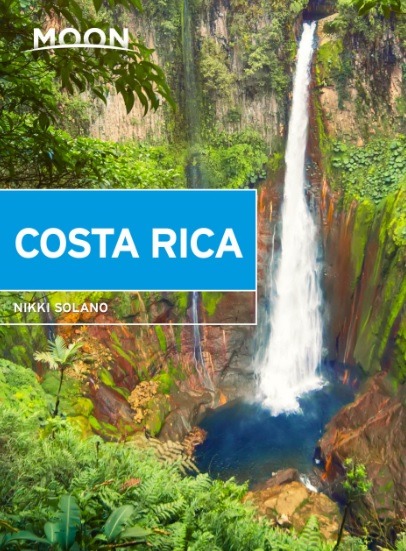
- Moon Travel Guides
- FREE DIY COSTA RICA ACCESS! Details here.
Our company is inclusive. Read our Anti-Hate, Anti-Racism, Anti-Xenophobia, Anti-Inequality, Anti-Discrimination Statement here.
NEW! Our awesome Costa Rica Destination Tool filters 66 destinations by nearly 150 criteria to help you quickly and easily decide where to go in Costa Rica according to your unique preferences, wants, and needs. Learn more and access the tool on our sister site, DIY Costa Rica, here.
How To Experience The Best Costa Rica Volcanoes: Arenal, Poas, Rincon De La Vieja, Irazu, And Turrialba
Home » What To Do In Costa Rica » Volcanoes » How To Experience The Best Costa Rica Volcanoes: Arenal, Poas, Rincon De La Vieja, Irazu, And Turrialba

Last updated on November 7th, 2023 at 02:57 pm GMT-6 (Costa Rica time)

Written by Nikki Solano
Want to know our pick for the BEST VOLCANO TO VISIT in Costa Rica? It is featured on DIY Costa Rica !
Want to save money in costa rica, our sister site, pura vida eh inc., has volcano tour discounts. con mucho gusto (you’re welcome) and pura vida.
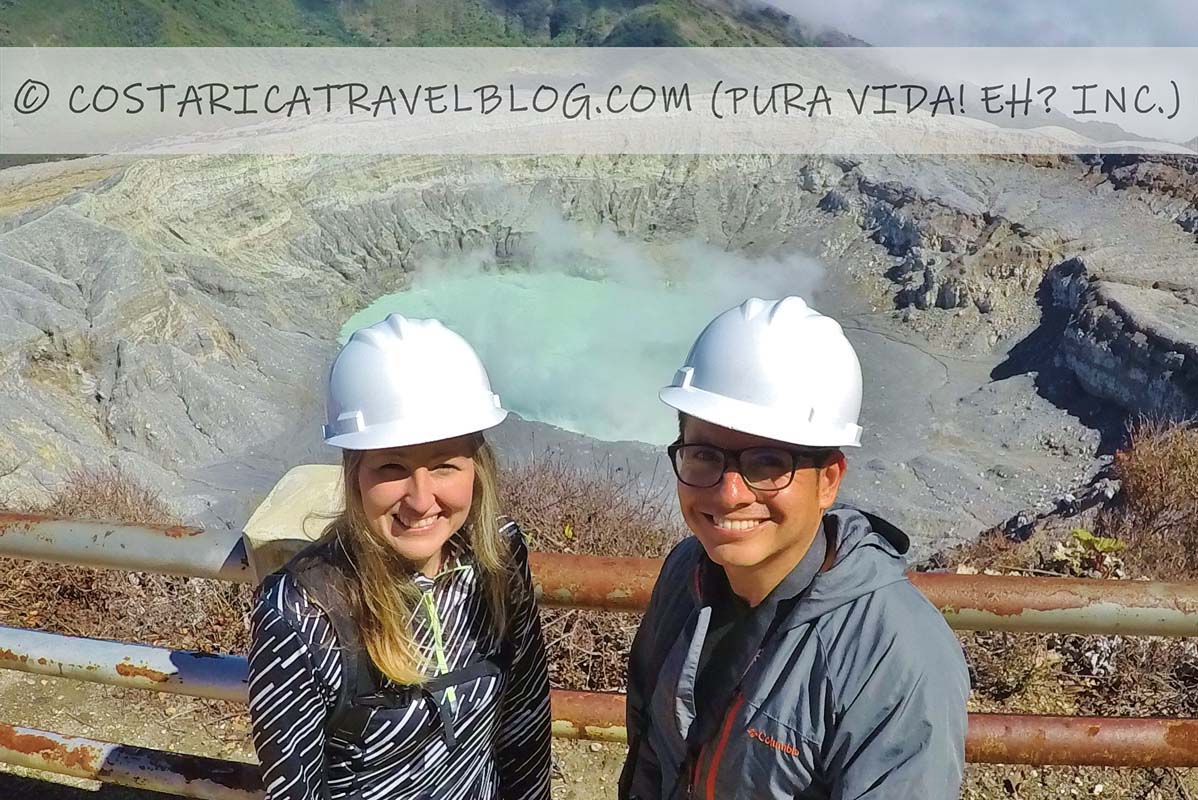
Get the Costa Rica info you need by browsing our article's TABLE OF CONTENTS:
Costa Rica’s active volcanoes: Know this first
Costa rica volcano national parks, map of volcanoes in costa rica, ways to experience the arenal volcano, what’s not permitted at the arenal volcano, a rundown of the arenal volcano national park, ways to experience the poas volcano, what’s not permitted at the poas volcano, a rundown of the poas volcano national park, what’s not permitted at the rincon de la vieja volcano, a rundown of the rincon de la vieja national park, ways to experience the irazu volcano, a rundown of the irazu volcano national park, costa rica volcanoes: the turrialba volcano, which costa rica volcano is the best to visit.
First things first: rugged Costa Rica is ridden with volcanoes. Most don’t take the iconic shape of a cone, and none spew red-hot lava, so unsurprisingly, the majority are mistaken for mountains.
Even if you don’t realize it at the time, no matter where you travel in Costa Rica, you’ll likely drive around or be within eyeshot of a volcano during your trip. This anticlimactic experience probably isn’t enough to wow you, but don’t fret; there are Costa Rica volcano experiences that will. Continue reading below to learn about these experiences, specifically, ways to discover Costa Rica’s top five volcanoes—Arenal, Poas, Rincon de la Vieja, Irazu, and Turrialba —each of which is currently active.
Each of the five Costa Rica volcanoes detailed below is located inside its eponymous national park: the Arenal Volcano National Park , the Poas Volcano National Park , the Rincon de la Vieja National Park , the Irazu Volcano National Park , and the Turrialba Volcano National Park . Each national park welcomes visitors, although the Turrialba Volcano National Park is often closed due to volcanic activity (see below for details). One of the national parks, the Poas Volcano National Park, requires visitors to have a reservation. While participation in volcano tours that take place at the various national parks is encouraged, some activities inside the parks (including hikes to the craters of the Arenal Volcano and the Rincon de la Vieja Volcano) are prohibited.
Without further ado, here’s what you should know about Costa Rica’s top five active volcanoes: the Arenal Volcano , the Poas Volcano , the Rincon De La Vieja Volcano , the Irazu Volcano , and the Turrialba Volcano .
We created the above map to showcase where each active Costa Rica volcano is located. Included on the map are the following sites (each of which we detail in this blog post):
- Arenal Volcano (marked by a mountain icon)
- Irazu Volcano (marked by a mountain icon)
- Poas Volcano (marked by a mountain icon)
- Rincon de la Vieja Volcano (marked by a mountain icon)
- Turrialba Volcano (marked by a mountain icon)
Costa Rica Volcanoes: The Arenal Volcano

For our full article about the Arenal Volcano National Park, don’t miss our related blog post: Why You Should (And Shouldn’t) Visit The Arenal Volcano National Park
The most visited and recognizable Costa Rica volcano is the Arenal Volcano. Though we were lucky enough to spend several years living at the base of this volcano back when it used to erupt on the regular (see our blog post Why You Should (And Shouldn’t) Visit The Arenal Volcano National Park for an account of what that was like), nowadays, only faint puffs of smoke escape its crater. Smack dab in the heart of Costa Rica’s epicenter of adventure (the town of La Fortuna; see our blog post Must-Know Info About La Fortuna Costa Rica From Longtime Residents for our La Fortuna city guide), the Arenal Volcano is the showstopping centerpiece atop the table of Costa Rica tourism. It’s also the best Costa Rica volcano to visit if you want to see and/or snap photos of an iconic, cone-shaped volcano. Though the most straightforward way to experience this particular Costa Rica volcano is to hike around its national park, there are actually countless ways you can experience the Arenal Volcano during time spent in touristy La Fortuna. Here are a few suggestions.
You can view the Arenal Volcano at a distance while:
- Touring hanging bridges
- Riding an aerial tram
- Soaking in hot springs
- Horseback riding
- Bird-watching
- Mountain biking
- Riding an ATV
- Kayaking or stand-up paddling on Arenal Lake
- Strolling around downtown La Fortuna
- Staying at an accommodation in the La Fortuna/Arenal area that provides volcano views
- Crossing Arenal Lake (coming to or from Monteverde)
You can hike trails around the foothills of the Arenal Volcano at:
- the Arenal Volcano National Park
- Arenal 1968
- El Silencio Mirador y Senderos
- The Arenal Observatory Lodge
You can combine a guided volcano tour (i.e., a hiking tour around the foothills of the volcano) with the following guided experiences:
- Waterfall visits
- Hot spring visits
- Zip-line tours
- Hanging bridge tours
- Horseback riding tours
- Mountain biking tours
- Safari float tours
Apart from the inclined trails that you’re welcome to hike around the volcano’s base, hikes on other trails that lead up the steep slopes of the Arenal Volcano are strictly prohibited. This means that it is not possible to arrive at and/or see the crater of the Arenal Volcano.
- Experience type provided: volcano visit, educational walking/hiking tour
- Location: west of downtown La Fortuna, on the road to the community of El Castillo
- Sectors that are open to the public: two; the Main Sector and the Arenal Peninsula Sector
- Operating hours: 8:00am to 4:00pm daily
- Visit recommended for: individuals of all ages
- Parking: free parking on-site
- Bathrooms: free bathrooms on-site
- Degree of physicality required to visit: low to moderate, depending on the trails that are hiked
- Wheelchair access/suitable for the mobility impaired: no, but there’s a volcano viewpoint that can be accessed by car (no hike required)
- On-site attractions: great bird-watching, multiple volcano viewpoints, Arenal Lake viewpoints, an observation tower, an opportunity to climb over lava rocks, an opportunity to view a giant Ceiba tree
The average Arenal Volcano experience: Since it isn’t possible to reach the crater of the Arenal Volcano, most Arenal Volcano tours stick to the volcano’s foothills where flat and hilly trails weave through forest and decades-old lava rocks roughen the landscape.
Costa Rica Volcanoes: The Poas Volcano
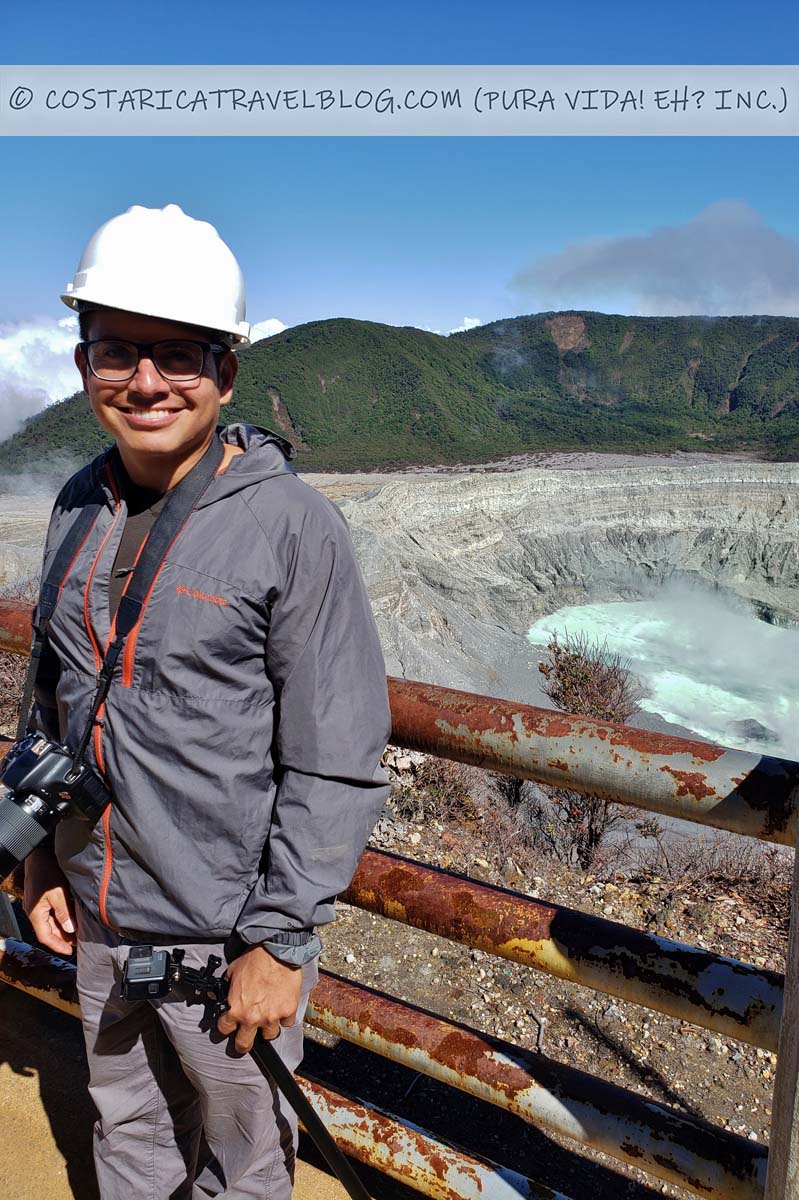
For information about planning a visit to the Poas Volcano National Park , don’t miss our related blog post: How To Reserve The Poas Volcano National Park (Screenshots)
The Poas Volcano has long been one of the most popular Costa Rica volcanoes to visit, thanks in part to its proximity to the Juan Santamaria International Airport (SJO) (a one-hour drive). What makes visits to this particular volcano tricky to coordinate, though, is the fact that reservations for the date and exact time you plan to visit are required (see our related blog post How To Reserve The Poas Volcano National Park (Screenshots) for information about the reservations process). If you aren’t opposed to following the reservation process and committing to an exact date and time for your visit, you’ll be able to experience the one and only way to currently visit the Poas Volcano, which is to walk the short, wheelchair-accessible trail that leads directly to the volcano’s active crater from just beyond the parking lot. If you do that, you’ll be rewarded with an opportunity to stand at the edge of the crater —a pretty incredible experience on clear, sunny days when the crater’s beautiful blue pool is visible.
Unfortunately, hiking trails inside the Poas Volcano National Park other than the main trail that leads to the main crater, including the forest trail to Lake Botos that we used to love to explore, are closed to the public.
- Experience type provided: volcano visit, educational walking tour
- Location: north of downtown Alajuela, near Poasito
- Sectors that are open to the public: one; the Main Sector
- Operating hours: 7:00am to 2:00pm daily
- Visit recommended for: individuals of all ages, especially young children, seniors, and others who would prefer an easy walk
- Parking: paid parking on-site
- Bathrooms: free bathrooms on-site
- Degree of physicality required to visit: low
- Wheelchair access/suitable for the mobility impaired: yes
- On-site attractions: crater viewpoint, the educational display about volcanoes inside the park office
The average Poas Volcano experience: The accessible crater atop the Poas Volcano draws in crowds of sightseers. Poas Volcano tours involve driving up the volcano’s slopes and walking the short, paved trail that connects the parking lot and the crater.
Costa Rica Volcanoes: The Rincon de la Vieja Volcano
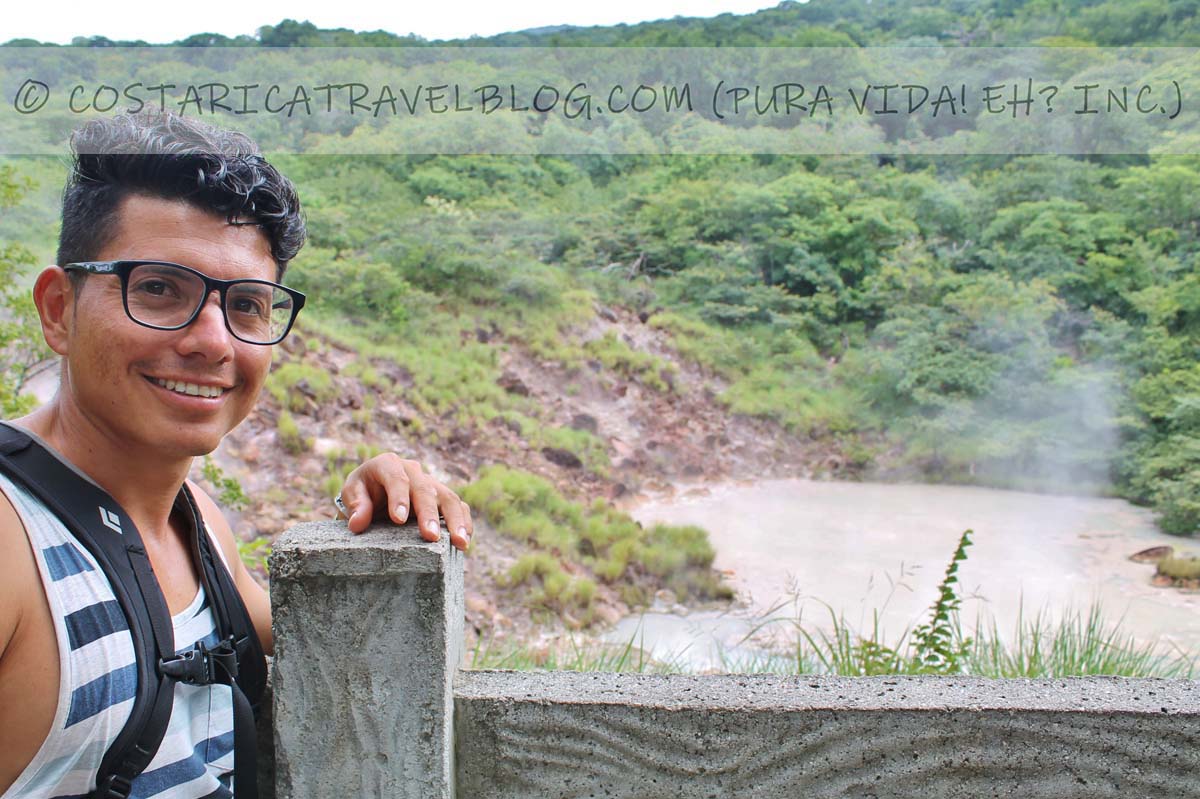
With each passing year, interest in visiting the Rincon de la Vieja Volcano increases, mirroring the growth in popularity of the adventure centers that dot the volcano’s foothills. Fortunately, this volcano still feels off the beaten path despite its path becoming more trodden, mainly because it sits at the end of a long road that cuts through a rural area, and is a 45-minute drive from the nearest city. Because tourism in the Rincon de la Vieja area is understated, this is the best Costa Rica volcano to visit if you want to couple your visit to a volcano with other adventure or nature tours but you’d rather not travel to a busy, highly sought-after destination like La Fortuna. Like visits to the Arenal Volcano near La Fortuna, though, the Rincon de la Vieja Volcano can be experienced in a few different ways. Here are some suggestions:
You can view the Rincon de la Vieja at a distance while:
- Participating in adventure or nature tours run by adventure centers like Hacienda Guachipelin and Buena Vista del Rincon
- Staying at an accommodation in the Rincon de la Vieja area that provides volcano views
- Driving Highway 1 around the city of Liberia
You can hike trails around the foothills of the Rincon de la Vieja Volcano at:
- the Rincon de la Vieja National Park
- Adventure centers like Hacienda Guachipelin and Buena Vista del Rincon
You can combine a guided tour of the Rincon de la Vieja National Park with the following guided experiences:
- River tubing tours
- Canyoning tours
The Rincon de la Vieja Volcano contains plenty of hidden treasures, including bubbling hot springs and mud pots, and smoking fumaroles . These attractions can be dangerous if you get too close, so you must stay behind the park’s guardrails and not go near the hazards. (Swimming in the hot springs is not permitted.). Also, although years ago it was permitted to hike to the top of the Rincon de la Vieja volcano, the trails that lead the way are currently closed to the public; access is strictly prohibited. This means that it is not currently possible to arrive at and/or see the crater of the Rincon de la Vieja Volcano.
- Location: northeast of Liberia, in a remote location
- Sectors that are open to the public: two; the Pailas Sector and the Santa Maria Sector
- Operating hours: 7:30am to 5:00pm Tuesday to Sunday (the Rincon de la Vieja National Park is closed on Mondays)
- Wheelchair access/suitable for the mobility impaired: only the first few meters of the principal trail in the Pailas Sector are paved
- On-site attractions: waterfalls, good wildlife-watching; an opportunity to see a mini volcano (named Volcancito), hot springs, fumaroles, and mud pots
The average Rincon de la Vieja Volcano experience: Since it isn’t possible to reach the crater of the Rincon de la Vieja Volcano, most Rincon de la Vieja Volcano tours stick to the volcano’s foothills where flat and hilly trails pass through forest and lead to fascinating attractions and a handful of waterfalls.
Costa Rica Volcanoes: The Irazu Volcano
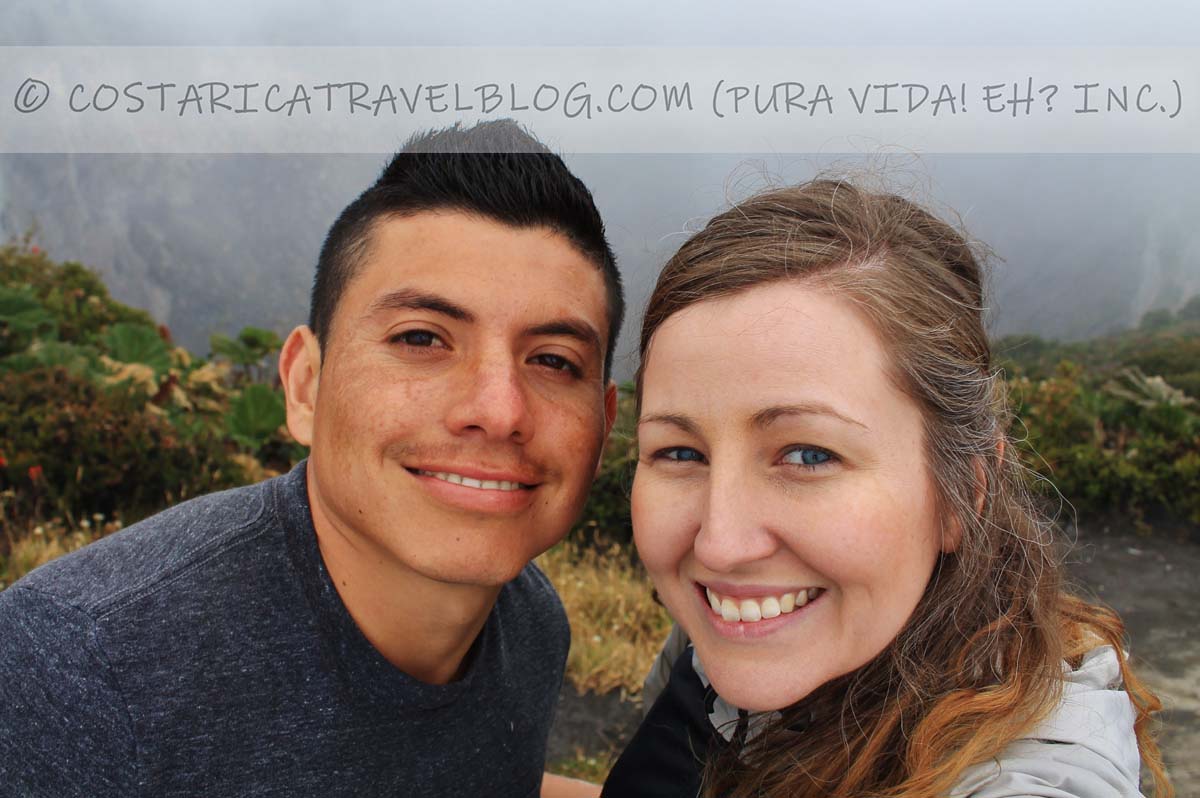
The Irazu Volcano is one of only two Costa Rica volcanoes that permit visitors to stand at the edge of a crater. (The other is the Poas Volcano.) This is the main reason to visit the Irazu Volcano— Costa Rica’s tallest volcano, which sits 11,000+ feet above sea level (more than double the height of the majestic Arenal Volcano)—to peer into its deep, daunting crater. Fortunately, unlike visits to the Poas Volcano, visits to the Irazu Volcano don’t require a reservation , making this volcano the best Costa Rica volcano to visit if you want to lay your eyes on a crater in a hassle-free way. Though there’s only one way to see the Irazu Volcano’s crater, there are actually two ways you can experience this volcano:
- You can walk the short, wheelchair-accessible trail that leads directly to the volcano’s active crater from just beyond the parking lot
- You can hike less-traveled nature trails elsewhere in the park, though you’ll need to drive to the off-site Prusia Sector for that
- Location: north of downtown Cartago, near Tierra Blanca
- Sectors that are open to the public: two; the Main Sector and the Prusia Sector
- Operating hours: 8:00am to 3:30pm daily
- Parking: free parking on-site
- On-site attractions: crater viewpoint, nature trails
The average Irazu Volcano experience: The accessible crater atop the Irazu Volcano is the attraction’s best feature. Irazu Volcano tours involve driving up the volcano’s slopes and walking the short, paved trail that connects the parking lot and the crater.

GREAT NEWS! The Turrialba Volcano National Park has reopened following its closure due to volcanic activity. To avoid providing outdated information about the Turrialba Volcano National Park from visits before it closed and reopened, we’ve removed the majority of content from this section. We will be visiting the Turrialba Volcano National Park in the coming months to conduct new research, and after we do, we’ll update this section to share our findings. Pura vida, amigos! 🙂
When deciding for yourself which Costa Rica volcano is the best to visit, consider our answers below.
- Which Costa Rica volcano is the closest to San Jose/Alajuela/the SJO Airport? The Poas Volcano, followed by the Irazu Volcano.
- Which Costa Rica volcano is the closest to the La Fortuna/Arenal area? The Arenal Volcano.
- Which Costa Rica volcano is the closest to the northern Pacific coast/Guanacaste/Liberia/LIR Airport? The Rincon de la Vieja Volcano, followed by the Arenal Volcano.
- Which Costa Rica volcano provides the best volcano-viewing experience? The Arenal Volcano, if you want to see a cone-shaped volcano, or else the Poas Volcano or the Irazu Volcano, if you want to see a volcano’s crater.
- Which Costa Rica volcanoes provide the best crater-viewing experiences? The Poas Volcano and the Irazu Volcano.
- Which Costa Rica volcano provides the best hiking experience? The Arenal Volcano, followed by the Rincon de la Vieja Volcano.
- Which Costa Rica volcano provides the most rugged, off-the-beaten-path hiking experience? The Turrialba Volcano, when open to the public.
- Which Costa Rica volcanoes are the easiest to walk/hike? The Poas Volcano and the Irazu Volcano have flat, paved trails. The Arenal Volcano and the Rincon de la Vieja Volcano have some easy forest trails in addition to moderate forest trails.
- Which Costa Rica volcanoes provide challenging treks for more experienced hikers? The Rincon de la Vieja Volcano and the Arenal Volcano.
- Which Costa Rica volcanoes are wheelchair accessible/best for the mobility-impaired? The Poas Volcano and the Irazu Volcano.
- Which Costa Rica volcano has hot springs within its national park? The Rincon de la Vieja Volcano. (Swimming in the park’s hot springs is not permitted.)
- Which Costa Rica volcanoes feed hot springs that sit off national park property but can be visited by members of the public for swimming/soaking purposes? The Arenal Volcano and the Rincon de la Vieja Volcano.
- Which Costa Rica volcanoes are most often visited in combination with visits to nearby attractions? The Arenal Volcano, followed by the Rincon de la Vieja Volcano. Truly, though, visits to any of the five volcanoes described in this article can be combined with visits to nearby attractions.
- Which Costa Rica volcano provides an opportunity to view lava? Currently, no Costa Rica volcanoes emit lava.
QUESTION TO COMMENT ON: Have you visited one of the above-mentioned Costa Rica volcanoes? Which one did you pick, and why?

Hey, Costa Rica Travel Blog reader, thank you for visiting and reading our blog! We're truly grateful for your time and preference.
Do you know that your spam-free reading experience is most important to us? Unlike some other Costa Rica blogs, we do not to sell your personal information, and we choose not to display ads, sponsored content, or affiliate marketing on our blog so we can keep your visit as distraction- and junk-free as possible. Because we prioritize your privacy, we don't earn money when you visit us, when you sign up for our e-course, or when you click on our links, which means the time and work we put into this blog—including its 300+ articles—is entirely voluntary! If you find our content valuable, and you'd like to thank us for making the trip-planning process easier and your Costa Rica vacation more enjoyable , please consider making a small donation ($1, $2, $3, or an amount of your choosing) to our blog. Doing so is a great way to pat us on the back if you feel we deserve it . 😊 Pura vida, amigos!

Click on the button above to donate through PayPal. (If you cannot see the PayPal button above, click here .) A PayPal account is not required to make a donation; credit and debit cards are also accepted. PayPal donations are confidential; we never see your payment details.

Tagged: adventure , alajuela , arenal , arenal volcano , cartago , costa rica , costa rica travel , costa rica travel tips , costa rica vacation , guanacaste , irazu volcano , la fortuna , poas volcano , rincon de la vieja , rincon de la vieja volcano , tourism , travel , travel tips , turrialba , turrialba volcano , vacation , volcano
- Author Posts
The comment section of this article has moved! If you have a question or comment about our article above or Costa Rica travel in general, please post it in our Questions and Answers Forum on DIY Costa Rica , our sister website, where you can also access our private Costa Rica recommendations, our Costa Rica Destination Tool, and our Costa Rica Recommendations Map. See you there, amigos! 🙂
Great overview. I’ve only seen Poas and Irazu so far but I enjoyed both for different reasons
Hi mybeardandmypenguin!
Thanks so much! Poas and Irazu are the only two volcanoes (of the five discussed in our article) that welcome visitors to stand at their craters. The views are incredible! It’s great that you’ve had a chance to see both.
Pura vida! 🙂
Great and thorough review! My mother and I are visiting Costa Rica in late May of this year, but we will be staying in La Fortuna. We are staying for seven days, so five full days and two half days. Do you think it’s possible to visit Arena, Poas, Irazu as well as the Paz Waterfall, Orosi Valley, and Lankester Gardens? Our biggest issue is we can’t find a tour company that will pickup from La Fortuna near the Arenal and go to these destinations.
Hi goddivaldi!
Quick question: Will you be flying into San Jose? If so, I’d recommend giving yourself a day at the start of your trip to tour the Irazu Volcano and the Orosi Valley. If you don’t mind departing from San Jose to Arenal the next day, you can combine that journey so you see the Poas Volcano and the La Paz Waterfall Gardens along the way. This means you’d spend the first day in the San Jose vicinity (touring Irazu and Orosi), spend the second day traveling from San Jose to La Fortuna (touring Poas and La Paz along the way), and then spend the next few days exploring in La Fortuna.
Hello, I was that Volcán Rincón de la Vieja is closed due the activity, so it’s imposible to hiking. Do you know something about that? And the hikking to Turrialba there is any agency that could find the information or guide the hike?
Yes! The trails that lead to the craters at the Rincon de la Vieja Volcano are currently closed. But other trails inside the Rincon de la Vieja National Park are open and worth hiking. As for the Turrialba Volcano, this volcano’s national park keeps closing and opening, closing and opening, due to volcanic activity. It is currently closed to the public.
- The forum ‘Costa Rica Travel Blog Forum’ is closed to new topics and replies.
- Kale by LyraThemes.com.
We're Nikki and Ricky, and we're human!
Sadly, ai-generated costa rica blogs and guides are taking over the internet. thank you for choosing our authentic website and resources over others, for trusting our firsthand experience, and for preferring our human-backed recommendations 😀 other ways we are unique:.
✓ We choose not to display ads, sponsored content, or affiliate marketing on our blog. Because we prioritize your privacy, we don't earn money when you visit us, when you sign up for our e-course, or when you click on our links, which means the time and work we put into this blog is entirely voluntary. ✓ Ricky is a born-and-raised Costa Rican and Nikki (married to Ricky) has explored Costa Rica since the mid-2000s . ✓ We've operated our Costa Rica-based business, Pura Vida! eh? Inc. , for 16 years (and counting!) . ✓ Our Costa Rica guidebooks are published by the prestigious Moon Travel Guides brand . ✓ We only ever write about experiences we know firsthand , and we never stuff our blog with general information about Costa Rica that is widely available elsewhere . ✓ We never copy or plagiarize other writers' content . How we wish other writers would show us the same respect! ✓ Unless stated otherwise, every photo displayed on our blog was taken by us, and with our own two hands. (Unlike some other bloggers, who rely on drones to travel and conduct research for them, we actually visit and explore the places we write about .)👍🏽 ✓ We're active in promoting Costa Rica around the world . We've written about Costa Rica for Wanderlust Magazine (UK), presented Costa Rica on Rick Steves' Monday Night Travel Show and podcast/radio show (US), and served as a Costa Rica Destination Editor for Essentialist (Spain). ✓ Our work is backed by hundreds of positive reviews and testimonials ( read some here ) ✓ We are not overly active on social media . Instead of fixating on our own popularity, we spend the majority of our time exploring and researching Costa Rica, updating our various Costa Rica resources, and working with travelers one-on-one. We're focused on the quality of your travel experience , not the quantity of our followers. ❤️
We hope you enjoy your visit to our junk-free blog as much as your time in Costa Rica. 😊

- Privacy Policy Overview
- Remember my preference
This website uses cookies to operate and provide you with the best user experience possible. To ensure you're aware of and okay with this and our other privacy-related practices, please review our Privacy Policy, then click the button below to accept it.
If you do not accept the policy, we respect your choice 100%. Unfortunately, several of our website’s features, including our Questions and Answers Forum, rely on cookies to operate. Most are also run by themes, plugins, and other add-ons to our website that we do not and cannot control, which means the cookies you receive are mainly provided by third parties. Because simple actions like reading our articles, asking a question, and even visiting our website’s homepage require the use of cookies, it is not possible to explore or use our website without them. If you would prefer not to receive cookies, we kindly (and sadly) ask that you do not visit our website. (Alternatively, you can try setting your browser to remove or reject browser cookies before visiting our website, but you may find that our website doesn’t function properly without them.) By visiting or submitting information through our website, you acknowledge and accept our use of cookies, and the use of third-party cookies. For more information, please see our Privacy Policy.
Thank you for understanding!
In order for our site to remember that you accept our policy, please enable the Strictly Necessary Cookie.
If you leave the Strictly Necessary Cookie disabled, we will not be able to save your preference. This means that every time you visit this website you will need to accept the policy again.

Top 5 Most Active Volcanoes to Visit in Costa Rica & What To Know About Them
You’ve certainly heard that Costa Rica is a country with lovely beaches, stunning jungles, and a vast wealth of flora and fauna, but did you know that it also has plenty of volcanoes? In addition to the five still active, the nation is home to over 100 other mountains considered dormant or extinct.
There are numerous activities, all based on their towering and majestic heights, for tourists to enjoy. For instance, hot springs with mineral-rich water are a magnet for spa fans due to the heat from the volcano’s magma close to the surface. The small elevation fluctuations produce a hub of biodiversity unmatched anywhere else in the globe, attracting both scientists and tourists.
This article will also provide essential information to let you know what is the most active visited volcano in Costa Rica and the top volcanoes to visit for the greatest thrill if you’re planning a trip to this beautiful country.
The 5 Active Volcanoes of Costa Rica

Arenal Volcano
Arenal, at 1,670 meters above sea level, is undoubtedly the most well-known of Costa Rica’s volcanic giants since it is one of the world’s top ten most active volcanoes. It is in the nation’s northern region and towers above the lush surroundings, where the best coffee globally is grown on plantations.
Arenal and its surroundings make a fantastic base for adventurous travel. Therefore, you won’t be let down by the awe of its splendor as you watch the vapor fumaroles flow continuously. The best thing is that you may enjoy this stunning scene while relaxing in naturally heated hot springs that the volcano has warmed.
In addition to being a magnificent conical volcano to admire, it is also home to some of the best hikes in the area and a wonderful zip-lining canopy tour. La Fortuna is a small rural community that has managed to hold on to its Costa Rican customs. Here, you may sample regional cuisine, travel to nearby natural attractions, and enjoy an incredible view of the Arenal Volcano.

Poás Volcano
This volcano is also among the most well-known places to visit in Costa Rica. Two crater lakes, active fumaroles, and sulfuric emissions make it one of the biggest active volcanoes in the world.
The northern lake, known as the Laguna Caliente or a hot lagoon, is among the world’s most acidic water bodies, in stark contrast to the Botos Lake, which is cool, clear, and encircled by the grandeur of the tropical cloud forest.
For the best views of the crater before the clouds roll in, get there as soon as the Poás Volcano National Park opens at 8 am. Another quick 30-minute hike will lead you to a lovely picnic location on the lake, which is well worth the effort.
The location also has a cafe, a small but highly educational museum with fascinating information about the volcano, and a gift store. You can also visit the La Paz Waterfall Gardens if you have the entire day to spare. That’s what I did!

Irazú Volcano
The Irazu is Costa Rica’s tallest volcano, rising beyond 11,000 feet. In fact, you can see the Pacific and the Caribbean if you’re fortunate enough to reach the peak on a clear day. However, keep in mind that it gets a little chilly up there, so dress warmly.
Despite being a little over an hour’s drive to the east, the Irazú Volcano National Park is not as popular with tourists as the Poas Volcano despite being the nearest to San José. The main crater is 1050 meters in diameter and offers breathtaking views.
The hiking routes surrounding the Irazú Volcano are mostly level, similar to Poas, making them accessible to almost everyone. The sole distinction is that they are not paved, making them less accessible for visitors on wheelchairs.
There are fantastic half-day volcanic tours starting from San Jose for those with limited time. There are also full-day tours that include a luncheon with views of the Orosi Valley and a visit to Lankester Gardens.

Rincón de la Vieja Volcano
The name “ Rincón De La Vieja ” means “corner of the old lady,” which is how the locals refer to it. This volcano, which is Costa Rica’s third-most active, is surrounded by a freshwater lake, geysers, waterfalls, hot springs, and boiling mud pools.
The Rincón de la Vieja Volcano National Park has a vast network of paths that range in length from brief excursions to all-day hikes. Sadly, climbing the crater is no longer possible because of the most recent volcanic activity. However, there are still plenty of mud pits, hot springs, waterfalls, fumaroles, and crater lakes to explore.
You can choose the ideal trail out of the 7 available options, all of which range in complexity. The Las Pailas portion, which has easy hiking trails suitable for people of different physical abilities, receives the most visitors.
As part of a vacation package that includes several of Costa Rica’s well-known eco-adventure parks, experience the thrill of zip-lining, unwinding in natural hot springs, or riding a horse through some of Rincón de la Vieja’s most breathtaking scenery.

Turrialba Volcano
Although Turrialba Volcano is one of the least frequented of our top 5, it is now receiving worldwide attention. This attention is impacting some travelers’ plans for their Costa Rica vacations due to the recent rise in volcanic activity.
It has one of the most scenic roads in the nation since the access route features lovely ranches, coffee plantations, rivers, and authentic displays of rural country life. It is the second-highest volcano in Costa Rica, rising 3,340 meters above sea level. The mountain lies in a cloud forest, so the temperature is fairly cool there—around 55 degrees.
This volcano is well-known for its ongoing release of ash and white smoke. It is also home to remarkable fauna, including gigantic toads, agoutis, toucans, armadillos, howler monkeys , and long-tailed hermits. It also boasts of having a wide diversity of natural vegetation splendor.
Turrialba Volcano is about 50 kilometers from San Jose. Since there are no tarmacked roads leading to the destination, the nature resorts surrounding it provide horseback trips to take you up to the summit.
Frequently Asked Questions About Costa Rica’s Volcanoes
How many volcanoes are there in costa rica.
Over 75 million years ago, a volcanic movement created the geography of present-day Costa Rica. Therefore, the country is home to some of the most stunning active volcanoes in the world. The nation is home to approximately 120 volcanic sites, but only five (listed above) are active. Most of Costa Rica’s volcanoes are now protected zones or national parks.
What Is The Most Visited Volcano In Costa Rica?
The Arenal and Poás Volcanoes are currently the most popular and highly visited volcanoes in Costa Rica. The Arenal is endowed with plenty of beautiful natural sceneries to captivate all who visit it. On the other hand, Poás’ location makes it a highly attractive option to visitors since it is a little over an hour from the San José International Airport in the stunning Central Valley.
What Is Costa Rica’s Most Active Volcano, And When Did It Last Erupt?
Currently, the most active volcano is the Turrialba Volcano in central Costa Rica , as it has experienced frequent explosive eruptions from 2016, as well as in January, March, and April of 2017.
Before 2014–17, visitors could climb into the main crater, but an increased volcanic activity that produced thick clouds of volcanic ash forced the closure of Turrialba Volcano National Park. The park and volcano, however, reopened on December 4, 2020, after the eruptions stopped.

Which Volcano Is Better In Costa Rica?
The Arenal Volcano is the most popular and well-known volcano in Costa Rica due to often being considered the best volcano site in the country. It is also Costa Rica’s tourism industry’s show-stopping centerpiece, providing plenty of cool activities visitors can engage in and enjoy.
Some of the most popular ones include; the Arenal hot springs, trekking through the Arenal Volcano National Park’s canyons, kayaking on Lake Arenal, and zip-lining. Additionally, if you want to view and take pictures of a famous, cone-shaped volcano, it’s the best volcano in Costa Rica to go to. I personally found it quite impressive as seen from Lake Arenal.
Which Volcano Is The Biggest Threat To San José, Costa Rica?
The Turrialba volcano is 30 kilometers from the western Central Valley, with approximately 2.1 million residents as of 2010 on the easternmost edge of Costa Rica’s Central Volcanic Range. Since San José is located directly downwind from Turrialba and receives most of the Caribbean’s E-W winds, it could be in danger.
In 1864–1866, an eruption seriously damaged an area 3 km in diameter surrounding the volcano and sent ash over San José city and 130 km down to the Pacific coast . A small, recently opened fumarolic vent produced lithic ash on January 5 and 6, 2010, due to intense fumarolic-phreatic activity (T>500°C).
According to earlier predictions, the very fine ashes dispersed to the southwest and west and eventually reached San José’s eastern suburbs (35 km away). Phreatic or magmatic eruptions in the future (months to decades away) pose a serious hazard to homes and farms within 5 km of the volcano, as well as to agriculture, pastures, and telecommunications on the volcano’s western flank.
Due to the location of the main international airport in Costa Rica, which is on the ash dispersal trajectory, the “worst-scenario” eruption might harm up to 1.5 million people and hinder air travel.
Can You Hike To The Top Of Arenal Volcano?
This enormous mountain (Arenal Volcano) reaches an astonishing 1,657 meters tall, but it does not deter tourists from setting out on expeditions to reach its lava-filled terrain in La Fortuna.
Numerous treks in Arenal Volcano National Park allow you to stroll around the base of the volcano, along the old lava fields, and through the jungle, even though climbing to the top of the Arenal Volcano is not permitted.
The best time to use the trails is by visiting the park between February and April when the place is experiencing dry weather. The routes usually become hazardous and impassable during other times of the year due to heavy rain present in the region.

Is Costa Rica Part Of The Ring Of Fire?
There are more than 250 known volcanic formations in Costa Rica, which is a part of the magnificent Pacific Ring of Fire and has been home to volcanoes for more than 75 million years. However, there are currently only over 100 sites that exhibit volcanic activity.
Three volcanic mountain ranges cut through Costa Rica’s “land of fire”: the Guanacaste Region, which includes significant volcanoes like Rincón De La Vieja and Arenal; the Central Volcanic Zone, which consists of the magnificent volcanoes Turrialba, Barva, and Poás, and; finally, the Cordillera de Tilarán, which includes El Chato.
Last Thoughts
Every year, many people travel to Costa Rica to see the volcanoes since being in the vicinity of such a majestic force of nature is truly captivating. Fortunately, there are many other thrilling activities that you can partake in around the volcanoes.
For instance, many volcano national parks pair well with activities like white water rafting, kayaking, horseback riding, bird-watching, zip lining, volcanic mud bathing, and mountain biking.
Julien is an exploration-minded, curiosity-driven traveler and blogger. On a mission to witness the planet's natural beauty and diversity, he shares his experiences on this website through articles, videos, and photography, including interactive virtual tours.
Fascinated by animals and plants since young, he is also fond of outdoor and so-called extreme sports, often discovered while traveling and practiced back at home where he focuses on improving his knowledge and skills - so he can explore further on the next trip!
More About Me
You May Also Like

Discover Costa Rica’s National Tree: The Guanacaste

All About Costa Rica’s National Flower: The Guaria Morada

Which side of Costa Rica is Better? Pacific Coast or Caribbean Coast?

Meet The National Animal of Costa Rica, The Sloth

What Species of Monkeys Are in Costa Rica and Where to See Them?

All About Costa Rica’s National Fruit: The Guanábana
Leave a comment cancel reply.
Notify me of follow-up comments by email.
Notify me of new posts by email.
Active Volcanoes in Costa Rica and Where to Find Them

Production Assistant
The spine of Costa Rica dates back more than 65m years and rests along the Pacific Ring of Fire. This dramatic landscape contains at least 200 volcanic formations yet, of these, just a handful are classified as active volcanoes.
Did you know – Culture Trip now does bookable, small-group trips? Pick from authentic, immersive Epic Trips , compact and action-packed Mini Trips and sparkling, expansive Sailing Trips .
Given these forces of nature can lay dormant for millennia, a volcano is not actually considered active unless it has erupted in the past 11,000 years. Local agitations, such as unusual earthquake activity and emissions of gas, are telltale signs that something stirs beneath the precipice. So, which is the best active volcano to see in Costa Rica for an awe-inspiring – but safe – experience?
Arenal Volcano

Become a Culture Tripper!
Sign up to our newsletter to save up to 500$ on our unique trips..
See privacy policy .
For an expansive trip that takes in the best of Arenal, book onto our exclusive nine-day adventure .
Irazú Volcano

Although the highest active volcano in Costa Rica, at 11,260ft (3,432m), Irazú is one of the easiest to visit, sitting within proximity of the capital, San José . It even has a road leading right up to the summit traversed by a weekly bus service. Between 1963 and 1965, a major eruption showered the nearby capital with ash and besieged the countryside with floods, landslides and mudflows. This historic penchant for catastrophe has earned Irazú the nickname El Coloso (the Colossus). On a rare cloud-free day (there’s only three or four per year), you’ll be able to see both the Pacific and the Caribbean Sea from its peak. Irazú is at least 850,000 years old.
Tenorio Volcano

Comprising four volcanic peaks and two craters, the summit of Volcán Tenorio is sadly off-limits to the public without special permission. The wider Tenorio Volcano National Park, however, makes this destination more than worthwhile. You’ll tread through the savannah, rainforest and elfin cloud forest before you happen upon the surreal blue of the Rio Celeste . The volcanic earth produces thermal springs and small geysers; look out for tapirs and even pumas in the undergrowth. Since 2019, the park has imposed limits on visitor numbers to avoid overcrowding, so you can be sure your visit here will be a relaxing one.
Barva Volcano

Barva is the quietest volcano on this list, with the last confirmed eruption dating back over 8,000 years. But don’t take this as a reason not to visit. Close to San José, Barva is rooted in the luscious greenery of Braulio Carrillo National Park , making it an ideal day trip. You can hike the many trails that traipse through this region, carrying you to parasitic cones sown into mountain flanks and to multiple lagoons – including the emerald Laguna de Barva, which dwells in what was the volcanic crater. When viewed from the Central Valley, Barva has three principal summits, earning it the local nickname of Las Tres Marías (the Three Marys).
Rincón de la Vieja Volcano

This volcano, with a name that translates to Old Woman’s Corner, has nine volcanic craters. Its name is a reference to a local legend: the lover of Princess Curabanda, who was from an enemy tribe, was thrown into a crater by her angered father. In grief, she became a recluse on the mountainside, credited with healing powers in older age. Gaining access to the tempestuous crater hasn’t been possible since 2011, but the surrounding forest, hot springs and gushing falls of Rincón de la Vieja National Park make this a worthwhile trip.
Poás Volcano

The most explosive volcano on this list, Poás has erupted 40 times in the past 200 years. In 2017, an eruption led to an evacuation and closure of the Poás Volcano National Park; it was reopened to visitors with limited access to the crater in 2018. You’ll find two crater lakes near the summit. Laguna Caliente is one of the most acidic lakes in the world and supports no aquatic life, and Lake Botos is filled with cold, green water and sits in an inactive crater that last erupted in 7500BCE. The park also contains coffee plantations, so be sure to combine your sightseeing with a local brew.
Turrialba Volcano

Another erratic stack, the towering Turrialba measures 10,960ft (3,341m) and has had at least five meteoric eruptions in the past 3,500 years, with minor ones right into 2021. Its home, the Turrialba Volcano National Park, reopened to the public in December 2020 after an eight-year closure. Unlike the days in which hikers were able to journey down inside the main crater, a 1m (2km) safety perimeter is now in place. Like its neighbor Irazú, you can see the Pacific and Caribbean coasts on the all-too-rare clear days at this dizzying altitude.

KEEN TO EXPLORE THE WORLD?
Connect with like-minded people on our premium trips curated by local insiders and with care for the world

Since you are here, we would like to share our vision for the future of travel - and the direction Culture Trip is moving in.
Culture Trip launched in 2011 with a simple yet passionate mission: to inspire people to go beyond their boundaries and experience what makes a place, its people and its culture special and meaningful — and this is still in our DNA today. We are proud that, for more than a decade, millions like you have trusted our award-winning recommendations by people who deeply understand what makes certain places and communities so special.
Increasingly we believe the world needs more meaningful, real-life connections between curious travellers keen to explore the world in a more responsible way. That is why we have intensively curated a collection of premium small-group trips as an invitation to meet and connect with new, like-minded people for once-in-a-lifetime experiences in three categories: Culture Trips, Rail Trips and Private Trips. Our Trips are suitable for both solo travelers, couples and friends who want to explore the world together.
Culture Trips are deeply immersive 5 to 16 days itineraries, that combine authentic local experiences, exciting activities and 4-5* accommodation to look forward to at the end of each day. Our Rail Trips are our most planet-friendly itineraries that invite you to take the scenic route, relax whilst getting under the skin of a destination. Our Private Trips are fully tailored itineraries, curated by our Travel Experts specifically for you, your friends or your family.
We know that many of you worry about the environmental impact of travel and are looking for ways of expanding horizons in ways that do minimal harm - and may even bring benefits. We are committed to go as far as possible in curating our trips with care for the planet. That is why all of our trips are flightless in destination, fully carbon offset - and we have ambitious plans to be net zero in the very near future.

Guides & Tips
Top tips for travelling in costa rica.

Why You Should Visit Costa Rica in 2023

How to Roll All the Best Parts of Costa Rica Into One Eco-Adventure Week

‘Costa Rica is at the forefront of eco-tourism in Latin America’: Why you don’t need to fear travel greenwashing here

Places to Stay
The best solar-powered stays in costa rica for sustainable travelers.

See & Do
Five best eco-tourism activities in costa rica.

Top Trips for Disappearing into the Jungle

The Best Bed and Breakfasts to Book in Costa Rica

Monteverde Cloud Forest: A Guide to Costa Rica's Wildlife Paradise

The Best Hotels to Book in Samara, Costa Rica

Why Costa Rica Is the Ultimate Food Lover's Destination

The Secret of Costa Rica’s Hidden Cloud Forests
- Post ID: 1000093535
- Sponsored? No
- View Payload

- Weather Forecast
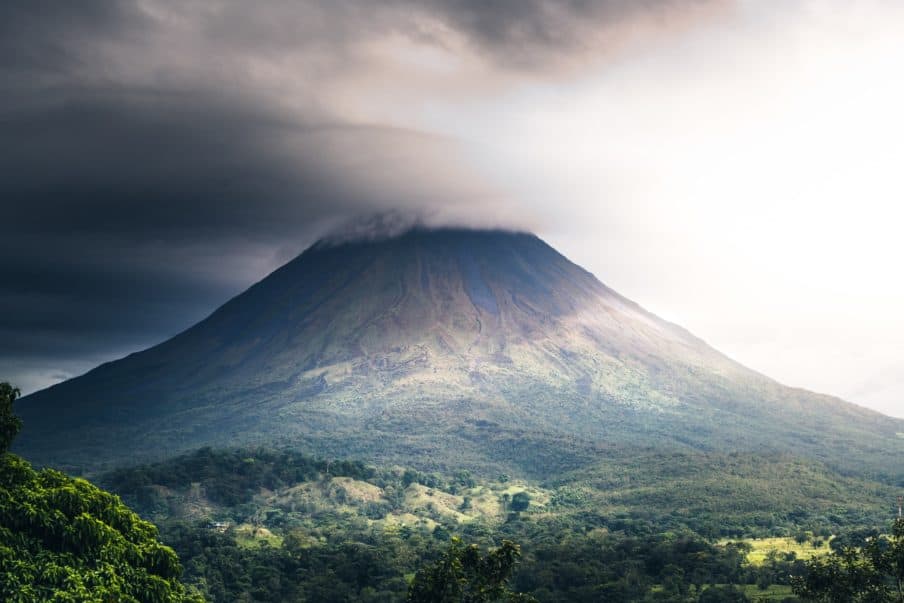
The 7 Best Must See Volcanoes in Costa Rica
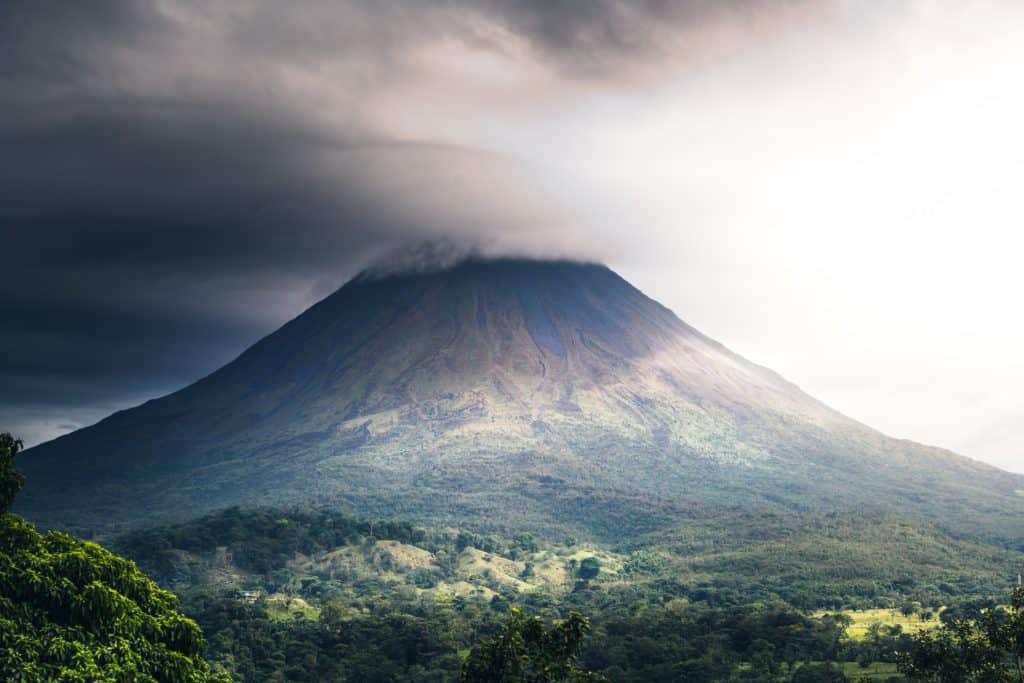
Costa Rica is home to several active volcanoes bur the seven volcanoes you must see in Costa Ricar are:
- Irazu – Volcano known for its large crater and several vents and is the highest in Costa Rica.
- Poas – Volcano known for its active crater that holds a beautiful, turquoise-colored lake and its eruptions of ash and steam.
- Rincon de la Vieja – Volcano in Guanacaste known for its fumaroles, mudpots, and hot springs.
- Barva – An inactive volcano located in the Central Valley of Costa Rica, and part of the Braulio Carrillo National Park
- Tenorio – An inactive volcano located in the Guanacaste and is part of the Rincon de la Vieja National Park.
- Turrialba – Active volcano known for its ash eruptions and occasional explosive activity
- Arenal – located in the north-central and known for its almost perfect conical shape.
These volcanoes offer many opportunities for hiking, birdwatching, and wildlife viewing. Visitors can also take guided tours to see the volcano’s activity, including night-time lava flows and ash eruptions.
Did you know that there are well over 175 identifiable volcanic formations, some of which have a measure of volcanic activity but are not considered active? You may be surprised to find that there’s a lot more about visiting a volcano in Costa Rica than you first imagined.
The excitement of seeing a volcano happens when the mist clears and you get your first glimpse of a conical shape volcano like Arenal Volcano the deep crater of the Poas Volcano. Once you see it, it will not be something you or your kids will not soon forget.
The experience of seeing a volcano may not be like the one you saw on TV or the ones you see on Facebook and Instagram. But, that’s okay! The effect will be different for both you and your kids.
Let’s go into more detail on each one of these volcanoes!
The 7 Best Volcanoes to See in Costa Rica
1. irazu volcano.
Volcan Irazu, or simply Irazu, is an active volcano located on the Cordillera mountain range in central Costa Rica, near the city of Cartago. Its name is thought to have been a combination of “ara”, or point, and “tzu”, or thunder. Others believe the name came from an indigenous village located close to the volcano, which is named Iztaru. Whatever the origins of its name were, Irazu is more popularly known by the locals for its other name, “El Coloso”, which means “The Colossus”.
It was given the nickname due to the catastrophic eruptions it was known for in the past. It was also given that name due to its immense size, with a summit 11,260 feet above sea level. This makes Irazu the tallest active volcano in Costa Rica. In fact, if you stand at the summit, it’s possible to see both the Atlantic Ocean and the Pacific Ocean on a clear day.
Irazu is known to have multiple craters on its surface, with the more popular one being Diego de la Haya, which is a crater lake known for its green waters. The lake itself is a popular tourist spot.
Irazu Volcano is an active volcano that has been known to erupt frequently in the past. In fact, since it was first recorded in history in 1723, it has erupted at least 23 times. The most recent eruption occurred on December 8, 1994.
2. Poas Volcano
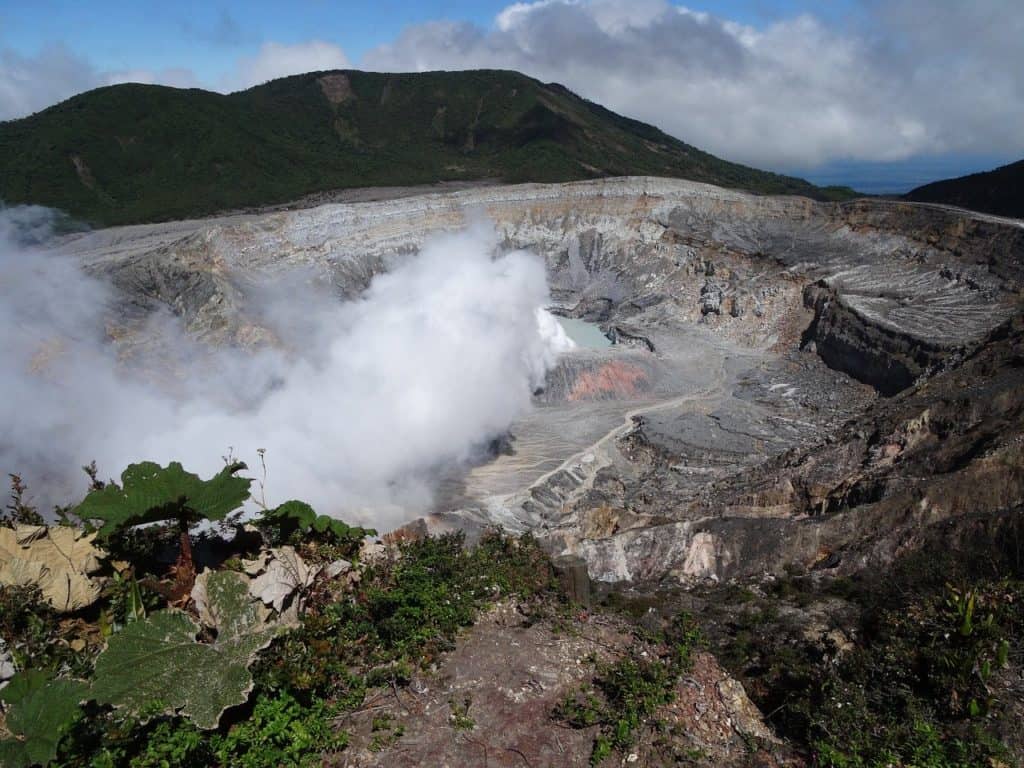
Another volcano located in Central Costa Rica and on the same mountain range as Irazu, is Poas Volcano. Much like Irazu, Poas is a very active volcano, having erupted 40 times since it was first recorded in 1828, with the most recent volcanic activity occurring in September 2019.
Poas has its own crater lakes, both of which are close to the summit. Laguna Caliente, which means Hot Lake, located on its norther side, and Lake Botos, located on its southern side. Laguna Caliente is known to be very acidic. In fact, at almost 0 pH levels, it is known to be one of the most acidic lakes in the entire world. So much so, that there is little to no aquatic life in it.
In contrast, Lake Botos, which is a crater that hasn’t erupted in more than 9,000 years, is clear and cool, capable of supporting at least 23 species of algae. In fact, visitors to the Poas Volcano National Park can pretty much walk up to it safely from the trail and take pictures.
3. Rincon De La Vieja Volcano
Rincon De La Vieja, whose name means “Old Woman’s Corner”, is located in northwestern Costa Rica, in the province of Guanacaste, near the city of Liberia. It’s an active volcano steeped in legend, with its very name being associated with a local legend involving the love affair of a princess named Curabanda and Mixcoac, her lover who was a member of an enemy tribe. Curabanda’s father eventually found out about the relationship and had Mixcoac executed by throwing him into the volcano’s crater. Heartbroken, the princess spent the rest of her days on the side of the volcano, becoming a reclusive old lady.
Legends aside, Rincon De La Vieja is also known to be a geologically active location, producing a significant amount of geothermal energy. Potentially, the volcano is capable of producing 140 megawatts of power for Costa Rica. Unfortunately, since the volcano itself is located inside a national park, geothermal energy plants aren’t allowed to be built there.
This geothermal energy also takes the form of hot springs, of which the areas surrounding the volcano is dotted with. A tourism industry has pretty much grown from the national park surrounding the volcano, with many hotels, resorts, walking trails and tours located around the volcano.
4. Barva Volcano
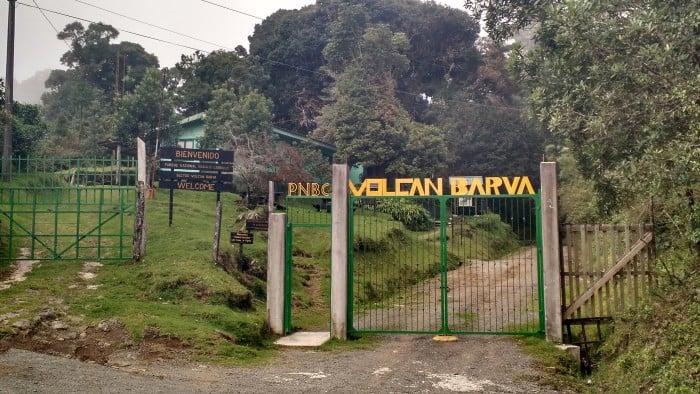
Barva Volcano is a dormant volcano located in central Costa Rica, just north of the capital, San Jose. There is currently a lake where the volcano’s crater used to be, which is called Laguna de Brava, or Brava Lake. Another distinguishing feature are the three hills on the volcano’s western side. The hills are named Las Tres Marias, or “The Three Marys”.
Barva is no longer active, with its most recent eruption being 8,000 years ago. There have been reports that the volcano had erupted in the 1760’s, as well as on 1867, but the lack of evidence means that these reports remain unverified. Since the volcano hasn’t been known to be active, a small agricultural town called Sacramento has popped up here. The town itself has recently become a popular weekend spot and staging ground for many local and international tourists looking to explore the national park at Barva Volcano’s base.
5. Tenorio Volcano
Located in northwestern Costa Rica, in the border of Alajuela and Guanacaste provinces, Tenorio Volcano is an inactive volcano, which is part of the Tenorio Volcano National Park. The volcano itself is composed of four peaks, with two craters. One of these craters is sometimes referred to as Montezuma Volcano, though many volcanologists believe it’s a part of Tenorio, and not a separate volcano.
Tenorio is about 6,200 feet tall, surrounded by lush rainforest and cloud forests closer to the summit, all of which are home to tapirs and the rare Puma. Three rivers, namely the Tenorio, the Tenorito and the Martirio, have their sources within Tenorio Volcano.
6. Turrialba Volcano
The Turrialba Volcano is an active volcano located in central Costa Rica, within the Cordillera mountain range. It is the easternmost of Costa Rica’s active volcanos, and is adjacent to Irazu Volcano, which is also a very active volcano. The volcano itself has erupted multiple times in the past, with the most recent being in April 2017. Turrialba Volcano is known for its violently explosive eruptions, with some eruptions being recorded to send volcanic material to towns 40 km away. Despite its highly active nature, however, there is a thriving montane forest along the face of the volcano, home to many species of ferns, mosses and bromeliads.
Alongside its neighbor, Irazu, Turrialba is one of the tallest volcanos of Costa Rica, towering at a whopping 10,958 feet tall. Much like Irazu, it’s also possible to see the Atlantic and the Pacific Oceans from the summit, provided it’s not cloudy.
The name Turrialba itself is shrouded in mystery, with experts not being able to agree on its origins. It could be from Torrealba, a district in Aragon, Spain, or from the Latin phrase Turris Alba, meaning white tower. Some experts even argue that the word might even have roots in the native Huetar language.
7. Arenal Volcano
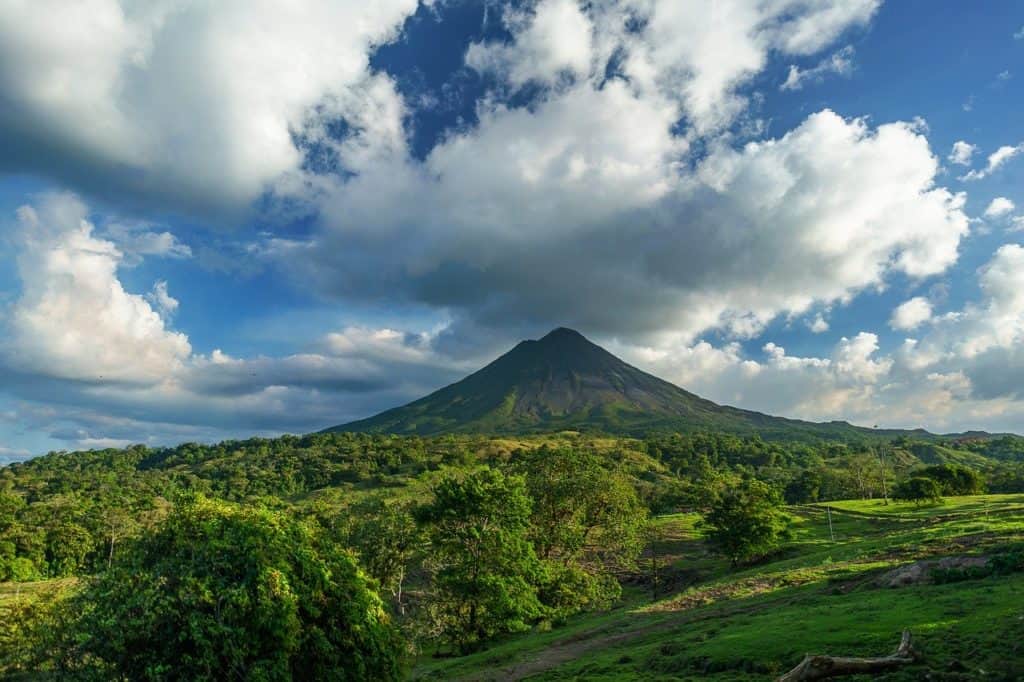
The Arenal Volcano is one of many active volcanos in the country, located in Northwest Costa Rica. It’s located about 90 km from the capital San Jose and is considered to be the youngest volcano in Costa Rica, in geological terms, being only 7,500 years old. It is Costa Rica’s most infamous volcano and is known by many names, including Canaste, Pan de Azucar, Volcan Costa Rica and Guastusos Peak. For most of its known history, it has been a dormant volcano, but an unexpected eruption in 1968 quickly changed that designation. The 1968 eruption itself destroyed the neighboring town of Tabacon.
After 1968, Arenal has become a very active volcano, erupting 8 times since then, with 5 of those eruptions occurring within a 5-year span from 1993 to 1998. It culminated into the May 7, 1998 eruption, where 23 eruptions were recorded in a 6-hour period, destroying a 2km area of forest around the volcano, and creating a large fissure at its base. After these volcanic activities, Arenal suddenly calmed down in the 2000’s, and by the 2010’s, it seemed to have entered dormancy.
Despite the dangers Arenal Volcano poses, the surrounding area is a known tourist destination, with many hot spring resorts dotting the area. The national park is also home to a diverse collection of species.
Final Thoughts
Costa Rica is a country full of natural beauty. You might know it as the destination where you can find lots of beautiful beaches and amazing wildlife.
However one natural phenomena that stands out worth visiting when in Costa Rica are the Volcanoes and seeing 1 if not all of them can be the highlight of any trip to Costa Rica.

Costa Rica Guide
Travel information and maps, volcanoes in costa rica.

Arenal, Poás (partially re-opened), Turrialba, Chato, Tenorio (re-opened!), Miravalles (re-opened!), Rincón, Von Seebach, and Santa Maria Volcanoes have all been impacted by increases or decreases in volcanic activity, weather, earthquakes and even bureaucracy.
Volcano Live Cameras
On the positive side the increase in gas venting, rock and ash ejection and even lava activity closing visitor centers, access roads and hiking trails also creates a dramatic backdrop for nearby attractions that remain open . There are also a few volcanoes where access remains unaffected ( see below ).
Volcano Closures in Costa Rica
Tenorio Volcano & Rio Celeste Re-Opened January 2018 – Tenorio National park and most notably the trail to the Celeste Waterfall were closed briefly on January 12, 2018 after a “swarm” of seismic events (several small localized earthquakes within a few hours).
During the shakeup the famous waterfall turned a muddy brown and there was online hysteria predicting the attraction was forever altered but it seemed more likely to us that it was just mud from small quake triggered upstream landslides.
The park re-opened two days later and the river and Celeste waterfall regained their eponymous coloration.
Chato – OFF LIMITS through at least 2020 – Cerro Chato has been inactive for thousands of years. The clear cold lake in the bottom of the crater and the spectacular views of Arenal a mere mile north from the rim made this the most popular volcano hike in Costa Rica. Unfortunately the trail was declared off limits in February of 2017 because guides were using it to stage climbs up the back side of Arenal.
We’ve been told that there is insufficient manpower to enforce the Lago Chato closure. Only the official guided hikes are being cancelled and many people are ignoring the ban and hiking anyway.
Miravalles – Re-Opened May 2017 – the trails from the outskirts of Bijagua to the waterfalls in Miravalles National Park were wiped out by Hurricane Otto in November 2016 but have been re-built and are open as of May 2017 – Yipee!

The visitor’s center/museum, cafe, gift shop and trails through the cloud forest and to Laguna Botos remain closed but visitors are now allowed to walk up to the crater overlook accompanied by guides .
Note – Poás closed to visitors due to high levels of activity sporadically in 2019 ( see details ) and will probably close without advance notice a few times in 2020. Turrialba – UPDATE: November 2020 – SINAC announced the re-opening of the viewpoints and overlook trail at Turrialba Volcano National Park as of December 3, 2020!!!.
UPDATE: February 2020 – SINAC announced the possibility of resuming official tours into the Turrialba national park. The outline calls for 4 groups of 35 visitors each day participating in a two hour hike accompanied by trained guides. The required infrastructure and trails are ready but local landowners are blocking access claiming the road to the park is private. The matter is being litigated and there is no estimate when tours might be able to commence.
UPDATE: October 2018 – The National Seismological Network has released dramatic video (see below) of new eruptions. Wait for it…10 seconds…
CLOSED – the most extensive and beautiful network of volcano trails in Costa Rica shut down temporarily in 2012 and completely in 2015 due to dangerous levels of activity in two of the craters. The road to the rim is also closed to the public.
Earlier in the summer a drone confirmed what residents have been reporting – a lake of lava more than 150 feet across has formed in the west crater of Turrialba volcano. Locals have noted an orange glow reflecting off of nighttime clouds for several weeks. The surfacing magma ensures that the peak and crater trails will remain closed but some are hoping to draw tourists to the surrounding area for lava viewing.
Rincón de la Vieja, Von Seebach, Santa Maria – OFF LIMITS 2014 – Starting sporadically in 2014 all three trails (north from Las Pailas, west from Santa Maria and south from Dos Rios) to all three craters were closed due to increased levels of activity in Rincón . Although the it’s been relatively quiet through 2018 the trails to the peaks are now closed permanently.
Arenal – DORMANT 2011 to 2020 – Arenal quit spewing lava in 2011 and although the beautiful cone still dominates the landscape there are currently no spectacular eruptions.
UPDATE: October 2018 – It’s dangerous and illegal to climb Arenal – most recently four tourists were hospitalized (one with a serious compound fracture of the femur) when they were injured in an ash, lava rock and boulder slide while attempting to summit Arenal. A team of rescuers took two days to evacuate the climbers.
Please do not be a moron. The zone around the crater is off-limits because of unstable slopes, poison gases and because it’s really expensive to rescue idiots who ignore the closure.
SJO Juan Santamaría International Airport – INTERMITTENT CLOSURES – Increased activity at Turrialba has shut down Costa Rica’s main airport a few times for a couple of hours to a couple of days. Poás is even closer but so far the ash fall has been carried away from the airport by prevailing winds.
NOTE: the status of trails and other amenities is subject to change without notice – use the directory of Costa Rican National Parks to contact the local offices for updates.
Where to Visit Volcanoes in Costa Rica Now
Drive up crater.
At times Costa Rica has had three drive up volcanoes. Currently Poás and Irazú are open.
Visits to Irazú tripled in 2017 after the closure of Poás and Turrialba. Although the colossus dominates the eastern skyline and appears close enough to touch from downtown San José it takes over an hour and a half to wind up the paved road past the famous cathedral and ruins in Cartago, bucolic hills, and finally elfin cloud forest before reaching Irazú’s summit.

Crater Lake Hikes
If you want to hike right up to a crater lake there are still a couple of trails open to Lago Barva (in Braulio Carrillo near San José) and Lago Danta (near Tenorio ). It was frequently warm and sunny at Lago Chato where a refreshing swim in the crater lake was de rigueur after the long hot climb.
Both Barva and Danta are at significantly higher elevations than Cerro Chato, much colder and surrounded by cloud forests rarely penetrated by the sun so swimming is not popular.
Directions and map to the Barva Volcano trail in Braulio Carillo National Park

Tenorio Volcano National Park has always been one of our favorites. Access to the top has always been limited and less than 1 in 5,000 visitors ever made the difficult climb preferring to hike to the amazing Celeste Waterfall and hot springs of the lower slopes instead.

After a quick visit to the reopened crater there are other attractions on the slopes of Poás volcano. La Paz Waterfall Gardens, and the Doka and Britt Coffee plantations are open and considered premier attractions from San José and the central valley. A slight detour (and possibly some 4WD) to the east puts visitors on the trail head to the crater of Barva Volcano in Braulio Carrillo National Park .

Rincón de la Vieja
The closure of the trails to the triple summits of Rincón, Seebach and Santa Maria will probably go unnoticed by the vast majority of visitors most of whom would never attempt the long, steep and extremely challenging climb if it were open.
The closure has not impacted the trails to the waterfalls, back country hot springs and the nature walk around the geysers and boiling mud pots which all remain open. Additionally, the slot canyon white water tubing, ziplines, spas and other attractions outside the park are still some of the most popular day trips from the Guanacaste beaches .

Although the spectacular night time displays stopped years ago, Arenal volcano still puts out enough heat to warm the hot springs and the region still attracts tourists with zip-lines, rafting and other adventure activities.
The Poás Closure History:
In April of 2017 the national park was evacuated and closed indefinitely when the cooled lava dome in the crater collapsed and sent ash and rocks into the air during a period of higher than normal activity. The volcano activity has since decreased back to typical levels and a number of visitor safety features were added in order to partially re-open Poás National Park on August 31, 2018. Please see this link for ticket purchase instructions (required) and further information.
August 28, 2018 – SINAC (Sistema Nacional de Áreas de Conservación) quietly informed tour operators that the work is complete and the national park will re-open soon. President Carlos Alvarado will preside over an inauguration ceremony for the new facilities on Wednesday August 29th and the park will reopen to the public on Friday August 31, 2018.
The parking area, restrooms and overlook are re-opening. 50 visitors at a time will be permitted a total of 20 minutes at the rim accompanied by guides trained in safety measures.
July 24, 2018 – The “last week of July” re-opening is cancelled and SINAC (Sistema Nacional de Áreas de Conservación) has not provided a new official estimate.
For the past year we’ve received several e-mails a day asking us when the park will actually re-open but we do not know. When we’re coerced into making a wild guess we have been saying “if there are no more eruptions it’s possible Poas will re-open by early December 2018 when high season starts.”
June 2, 2018 – The SINAC (Sistema Nacional de Áreas de Conservación) June 1 estimate for reopening has passed and the new official estimate for partial re-opening is the last week of July 2018 and access to the full trail system by sometime in 2019 at the earliest. Construction on the shelters began last Monday and SINAC officials met again with Instituto Costarricense de Turismo (ICT), Ministerio de Ambiente y Energía (MINAE), Comisión Nacional de Emergencia (CNE), and Comité pro Apertura del Volcán Poás (CAVP) last week to begin the process of purchasing the required real time noxious gas monitors. April 28, 2018 – SINAC (Sistema Nacional de Áreas de Conservación) representatives stated that cleanup, some shelters and trail improvements are completed (see complete list of re-opening requirements below) and that hiring of guides and training (expected to take about a month) has begun. The new official estimate for partial re-opening is June and the trails and amenities are all expected to be open by the end of 2018.
March 18, 2018 – SINAC (Sistema Nacional de Áreas de Conservación) representatives stated unequivocally that Poás will not open by Easter as rumored. The requirements and conditions announced on March 3, 2018 for the possible re-opening the National Park have not yet been implemented. The new official estimate is May or June.
- creation and implementation of an obligatory advanced reservation system that limits visitors numbers to 50 at a time restricted to 20 minutes at the volcano rim and 45 minutes total inside the park
- design and construction of “volcano shelters” to protect tourists in case of an unexpected eruption
- installation of gas sensors in all accessible areas
- repair the existing buildings and infrastructure that were damaged in the April 2017 eruption
- hire and train new staff
UPDATE January 26, 2018 The National Seismology Network has determined that the current mechanism of degasification makes it unlikely that there will be premonitory earthquakes which previously gave warning of impending eruptions.
According to Lidier Esquivel at the National Emergency Commission the lack of seismological indicators means the park could not be evacuated in time and is the reason the park remains closed. Turrialba volcano national park was closed for similar reasons six years ago and has not reopened.
December 26, 2017 – The local community petition to reopen Poás was rejected and the park remains closed until further notice.
October 23, 2017 the local communities petitioned to reopen the park because the volcano has been relatively quiet for several months. A decision is pending but I would be surprised if the petition is granted before 2018
July 4, 2017 – Recent evidence of lava ejections from the “Boca Roja” (Red Mouth) crater at Poás volcano mean the temporary closure of the national park, museum and visitor’s center will continue indefinitely. When Arenal started spewing lava access was prohibited for 50 years.
June 6 2017 – Another ash and steam eruption ensured that the park will remain closed so the best view you can get is from the OVSICORI live crater camera .

- El Salvador
- 11 Must-Visit Volcanoes In Costa Rica
Costa Rica is a small country in Central America but is home to an impressive number of volcanoes. In fact, Costa Rica has over 200 volcanic formations, seven considered active. These volcanoes not only provide breathtaking views, but they also play a crucial role in shaping the country’s landscape and ecosystem.
In this article, we will introduce you to some of the most famous volcanoes in Costa Rica and share interesting facts about each one. Whether you are planning a trip to Costa Rica or want to learn more about its fascinating geography, this article is for you.
Table of Contents

Arenal Volcano is probably the most renowned volcano in Costa Rica because of its multiple eruptions between 1968 and 2010. It is located 3 hours from San Jose and stands at 5,436 ft (1,657 m). It is illegal to climb to the top of Arenal, but many people still make the 10 to 11-hour hike. La Fortuna is the closest town to Arenal and offers plenty of vantage points of the volcano. February is the best time to visit, as clouds often cover the summit later in the day.
Exploring Arenal Volcano National Park is an adventure with many hiking trails offering different viewpoints of the volcano. A guided tour is a great way to learn about the area and includes all fees, water, transport, and a guide.

Poás Volcano is an active stratovolcano located in the central part of Costa Rica, in the province of Alajuela. It is one of the most active volcanoes in the country, and it is known for its large, active crater lake. The volcano rises to an elevation of about 8,885 ft (2,708 m) above sea level and is the second-highest volcano in Costa Rica. The volcano’s main crater contains a lake about 985 ft in diameter and about 295 ft deep. The lake is highly acidic, and it is surrounded by a rim of sulfur deposits.
Tours of the volcano are available from May to November when the weather is good, allowing visitors to view the active crater up close. The trails leading up to the summit are home to numerous exotic birds like tapirs and tanagers, making it an excellent spot for birdwatching.
Rincon de La Vieja

The Rincon de la Vieja Volcano is an impressive natural wonder in northwest Costa Rica. Rising 6,286 ft (1,916 m) above sea level, the volcano is part of the 35,000-acre Rincon de la Vieja National Park. The park offers a range of unusual volcanic features and over 25 miles of hiking trails.
Popular activities include hiking trails to Las Pailas (boiling mud pots) and Catarata La Cangreja waterfall, adventure tours from Liberia that include guided hikes, visits to Oropendola waterfall and Rio Negro hot springs, and lunch in Curubande Village. Private tour operators also offer outdoor activities such as canopy tours, horseback riding, and whitewater inner tubing with thermal pools available for relaxation.

Irazu Volcano is a popular day-trip destination from San Jose, located in the province of Cartago. It is a complex stratovolcano with five craters and has been active for more than 500 years, with the last eruption occurring in the 1960s.
Visitors can take the public bus to the main parking lot at Irazu from downtown San Jose, which takes approximately an hour and 40 minutes (without traffic). The main parking lot has toilet facilities and a small shop selling snacks, drinks, and souvenirs.
A guided tour of Irazu Volcano includes transportation, snacks, and 3 hours at the volcano. Another option is a 7-hour guided tour which includes visits to the city of Cartago and the Basilica of the Angels, as well as lunch and pick-up from San Jose.

Turrialba volcano is located in Costa Rica and has been active since 2010. In March 2015, the most significant eruption in 20 years occurred, sending an ash cloud over the Central Valley and closing the country’s largest airport for a day. Experts predict that more eruptions may occur in the near future. The volcano also erupted in 1864 and ejected massive amounts of ash over Costa Rica for four years. In 2009, the government closed Turrialba National Park due to increased activity from the volcano.
In 2017, volcanologist Eliecer Duarte suggested that Turrialba might be the “new Arenal” due to an increase in luminous materials near the peak. This could mean that more frequent eruptions are likely to occur in this area, making it a popular destination for tourists who want to witness volcanic activity up close.
It is a popular destination for hikers, offering a 10.5 km (6.5 miles) trail to its summit. Hiking the Turrialba Volcano trail requires an accredited guide, but tours are available that depart from San Jose and include a coffee tour or visits to both Irazu and Turrialba Volcanoes.

Tenorio Volcano is an inactive stratovolcano in Costa Rica’s Provincia de Guanacaste. It is surrounded by a stunning national park with rainforest, savannah, and cloud forest. Visitors can expect to see thermal springs and wild animals such as pumas, but the park limits the number of visitors allowed.
Tenorio Volcano National Park contains four volcanic peaks, two craters, and a variety of landscapes. Located within the park is a picturesque river known as the River Celeste, characterized by its baby-blue color due to sulfur dioxide emissions and calcium carbonate precipitation.

Barva is a complex volcano located 14 miles north of San José, Costa Rica. It has a lagoon which was once a volcanic crater, and three hills known as Las Tres Marías. Barva last erupted around 8,000 years ago and is now considered dormant. This makes it the quietest volcano on this list.
Located close to San José in Braulio Carrillo National Park, Barva is an ideal day trip destination for hikers who can explore its parasitic cones and multiple lagoons. Nicknamed Las Tres Marías (the Three Marys) due to its three principal summits, Barva offers stunning views from the Central Valley. The area also contains several trails suitable for all levels of fitness and experience, making it perfect for those looking to explore the natural beauty of Costa Rica.

Chato Volcano is an inactive volcano located in the La Fortuna district of Costa Rica. Standing at 3,740 ft (1,140 m) tall, it is a popular destination for hikers and adventurers alike. The hike to the top can take between 3-4 hours and should be started before 10 am to avoid hiking back in the dark.
It is possible to access two routes to the top, one near the Green Lagoon Lodge and one from Arenal Observatory Lodge. Access to the trail comes with a reasonable fee. However, it does not include access to facilities. Rainy weather should be avoided for this trail as it can make the hike more challenging.

Miravalles Volcano is an impressive andesitic stratovolcano located in Northern Costa Rica. It stands at a towering 6,653 ft (2,023 m) and is the highest mountain in Guanacaste Province. The volcano has been inactive since its last eruption in 1946, but it still holds a great deal of significance for the region. Miravalles is home to the largest geothermal field in Costa Rica and offers visitors plenty of opportunities to explore its natural beauty.

Orosí is a small, inactive volcano located in the Cordillera de Guanacaste close to the Nicaraguan border. It has an elevation of 5,443 ft (1,659 m) and last erupted 3,500 years ago. The area around Orosí is popular among ecologically minded tourists due to its wet-dry transition forest and many animals. This unique environment allows visitors to observe a variety of wildlife, such as monkeys, sloths, toucans, parrots, and more. In addition to its diverse wildlife, Orosí also offers stunning views of the surrounding landscape from its peak.
The area around Orosí is also known for its rich cultural history. Several archaeological sites in the region date back thousands of years and provide insight into the lives of ancient civilizations who once inhabited this area. Visitors can explore these sites and learn about their history while taking in the beautiful scenery surrounding them.
Ways To Explore These Volcanoes
There are several ways to explore the area around the volcano:
- Hike to the summit : Several trails lead into the parks around the volcanoes, some of which allow you to get a close-up view of the summits, and any craters, see steam vents, and other volcanic features. Keep in mind that these hikes can be strenuous and not suitable for everyone.
- Take a guided tour : Many tour companies offer guided tours of several volcanoes. These tours typically include a hike to the summit and visits to other nearby attractions, such as hot springs and waterfalls.
- Go horseback riding : Horseback riding is a popular way to explore these parks. Several stables offer guided rides through the forest and along the base of the volcanoes.
No matter how you choose to explore these volcanoes, it’s important to be prepared and take the necessary precautions. Wear sturdy shoes, bring plenty of water and snacks, and follow any safety guidelines provided by tour guides or park staff.
There are over 200 volcanic formations in Costa Rica, but not all are active. Some of the most well-known volcanoes in Costa Rica include Arenal, Irazú, and Poás. Arenal is an active stratovolcano in the province of Alajuela, while Irazú is an active stratovolcano in Cartago. Poás is an active stratovolcano located in the province of Alajuela, and it is known for its large, active crater lake.
There are 5-7 active volcanoes in Costa Rica, including Arenal, Irazú, and Poás. The Costa Rican Volcanological and Seismological Observatory monitors these volcanoes, tracks their activity, and issues alerts when there is an increased risk of eruption. It is difficult to provide an exact number of active volcanoes in Costa Rica, as the definition of “active” can vary, and some volcanoes may go through periods of dormancy.
Yes, Costa Rica is located within the “Ring of Fire,” a region of the world characterized by a high level of seismic and volcanic activity. The Ring of Fire is a horseshoe-shaped belt that encircles the Pacific Ocean and is home to many of the world’s most active volcanoes and earthquakes. It is called the “Ring of Fire” because of the region’s frequent volcanic eruptions and earthquakes. The Ring of Fire results from the movement of the earth’s tectonic plates, which often collide and cause earthquakes and volcanic eruptions.
It is possible to see active lava in Costa Rica, although it is not common. If you are interested in seeing active lava in the country, the Arenal Volcano is one of the best places to visit. It is one of the most active volcanoes, and it is known for its frequent eruptions and lava flows.
*In some cases, we may earn a commission if you purchase from companies linked to within articles. Full disclosure here .
You may also like
How to become a nicaraguan citizen: your step-by-step guide, how to become a honduran citizen: a step-by-step guide, how to become a costa rican citizen: your step-by-step guide.
Session expired
Please log in again. The login page will open in a new tab. After logging in you can close it and return to this page.

Two Weeks in Costa Rica
Travel and Moving Blog
The Untapped Miravalles Volcano: Hot Springs, Nature, and Zero Crowds
- Jenn and Matt
- Destinations
52 Comments
Last Updated: June 8, 2023
If you’ve done some research on Costa Rica, then you have probably read about the country’s famous volcanoes and soothing hot springs. Flocks of visitors come to destinations like La Fortuna and Rincon de la Vieja to soak in naturally heated pools and gaze up at volcanic peaks. But not all of Costa Rica’s volcanoes hold the same acclaim. The Miravalles Volcano, for example, offers similar features, but has only a few small villages in its surrounds. Here, tourism is hardly noticeable and an authentic Costa Rica experience awaits. In this post, we’ll describe what makes the Miravalles area unique and help you plan a visit.
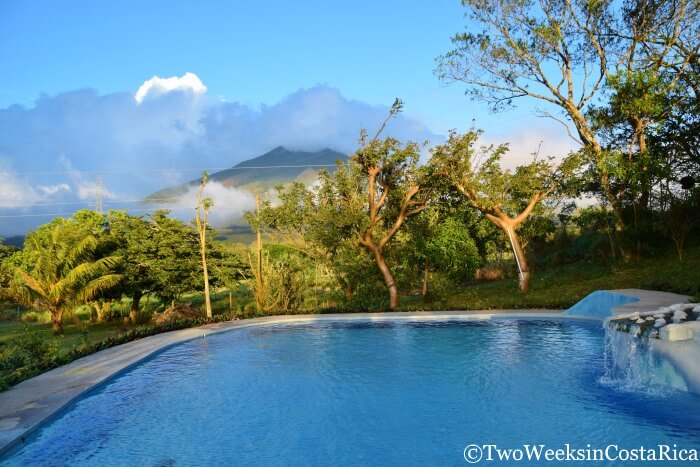
The Miravalles Volcano is located in Costa Rica’s Guanacaste Province .
Though situated inland, it is only about 1.5-2.5 hours from popular beach towns like Playa Hermosa , Playa Conchal , and Playa Tamarindo .
Two small towns, Guayabal and Fortuna, sit on the southwestern side of the volcano. These towns offer a glimpse of local culture, with mostly undeveloped land, rolling farm fields, small neighborhoods, and of course a soccer field or two.

The Miravalles Volcano itself has some interesting attributes. Towering at 6,654 feet (2,028 meters), it is the tallest volcano in the Guanacaste mountain range.
Though now considered dormant, the volcano generates an abundance of thermal energy. In fact, the Costa Rican government’s electric institute (ICE) has several industrial plants here that turn the volcano’s underground heat into geothermal electricity. You will likely see some of the steaming tubes as you drive around town. There are also many wind turbines nearby, helping to add to the country’s sustainability goals.
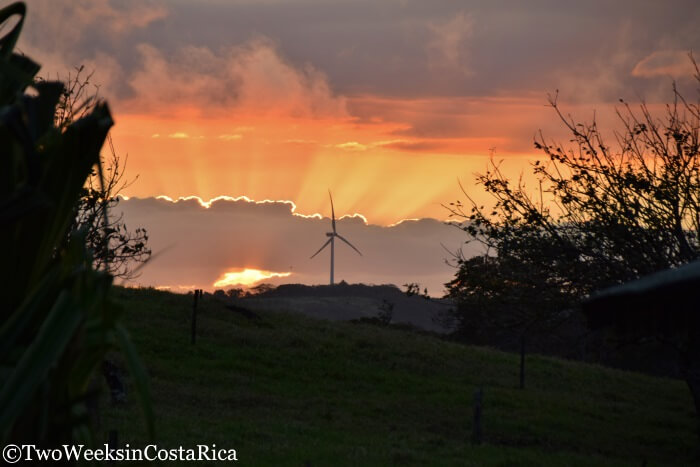
Although the Miravalles Volcano area can be visited as a day trip from many of the beach towns in Guanacaste, there are enough sights to stay for a night or two.
Thermal Hot Springs
Probably the biggest draw of Miravalles is the thermal hot springs. There are several casual hot spring options.
Yoko Termales
Yoko Te rm ales has five simple hot spring pools that reach temperatures of 100˚F (38˚C). The property is more spread out, with some shaded sitting areas, picnic tables, and a wet bar and waterslide. Many of the pools are in direct sun so a lot of people prefer going at night when it is cooler. Yoko is especially popular with local Ticos.
Admission is a bargain at ₡5000 ($10) for adults and ₡4000 ($8) for children under 10.
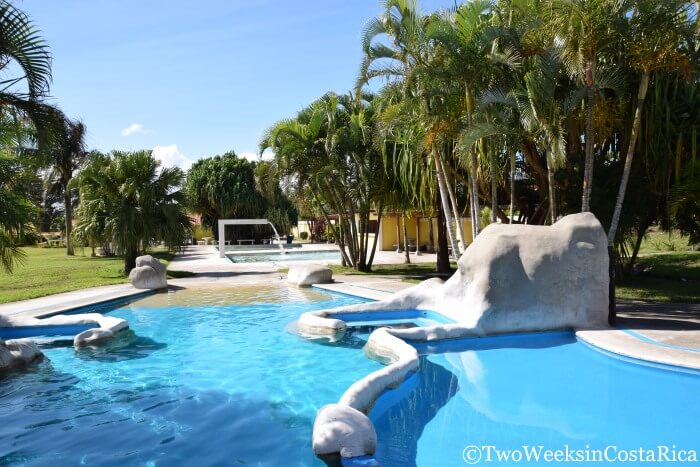
Colinas de Miravalles
Colinas de Miravalles doesn’t have as many pools, but we preferred the atmosphere.
It has one giant pool with a manmade waterfall and two smaller, more intimate, ones. (See cover photo, above, which shows the larger pool.) The springs serve the guests of the hotel, but we saw a lot of locals coming for the day. The views of the volcano are outstanding and the landscaped property is very nice as well. You can make a day of it by grabbing lunch at their restaurant, or bring a cooler with food and drinks.
Admission: ₡4,000 ($7).
Thermomania
If you have kids, Thermomania is a fun spot. This is an over-the-top waterpark with cartoon-character-inspired thermal pools, waterslides, and play structures. There is a huge onsite restaurant and bar where the adults can grab a drink. The resort is very popular with local families.
Admission: ₡5000 ($9). Open on weekends and holidays only.
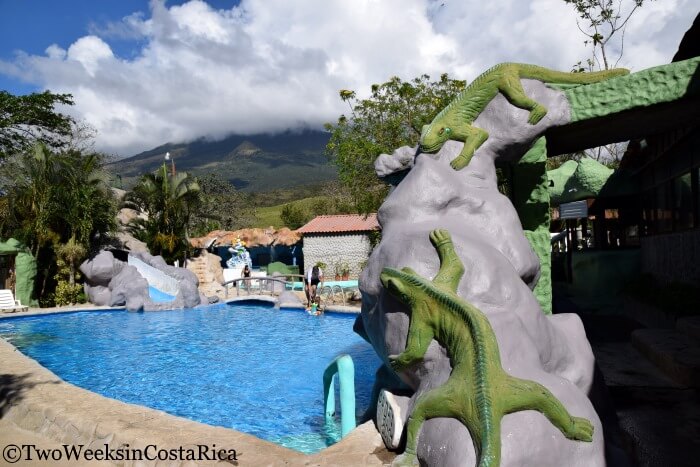
Las Hornillas Volcanic Activity Center
If you want to experience what it’s like to stand in an active volcanic crater, then head to Las Hornillas .
Carved into the side of a hill, this is an area at the base of the volcano where the energy emerges from the ground. A short trail brings you past volcanic steam vents and bubbling mud pots. The smell of sulfur fills the air but is all part of the experience. Visitors can apply mineral-rich volcanic mud to their skin and then soak in the thermal pools afterwards.
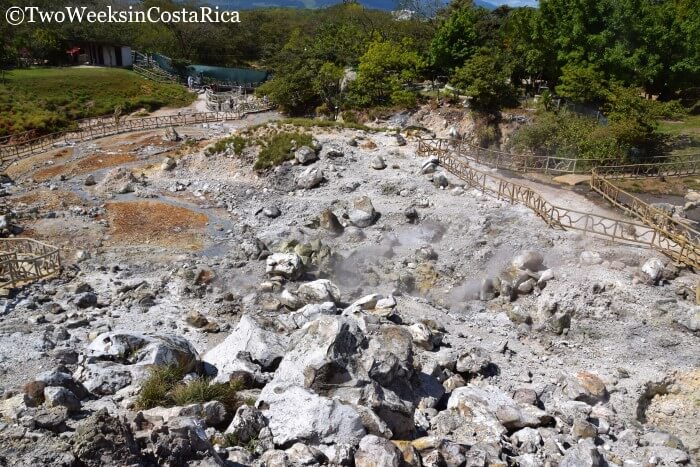
Las Hornillas also has some hiking trails, which lead to stunning waterfalls. The guided hike starts with a tractor ride and then crosses some rustic hanging bridges. From the bridges, you can see all the way to the Gulf of Nicoya (Pacific Ocean).
Llanos de Cortez Waterfall
About 35 minutes from the Miravalles Volcano is one of Guanacaste’s most stunning waterfalls.
Llanos de Cortez is located right off Highway 1 and is a popular stop for those making the trip between Miravalles and the Guanacaste coast. The beautiful waterfall, with it wide, wispy streams of water, flows year-round. Because it is only a short walk down from the parking area, this waterfall is very popular.
Read our post Llanos de Cortez Waterfall for more information.
Accommodations
Since the towns near the Miravalles Volcano are very small and rural, most of the lodging is quite simple. Below we give a couple of these options as well as the upscale Rio Perdido Resort for those looking for more amenities.
Colinas de Miravalles is a small, locally run lodge with onsite hot spring pools and five spacious cabins. In addition to its volcano views, the property itself is scenic, with tropical landscaping that attracts birds.
We have stayed here and really enjoyed it. The cabins are large and spaced out enough to provide privacy. The onsite restaurant is also very good and uses a lot of local ingredients (farm-raised chicken, cheese, and homemade jams). Since there are few restaurants in town, we ate here quite a bit. Best of all, though, was the friendly family who runs it. $100-140/night. Check Rates and Availability Here .
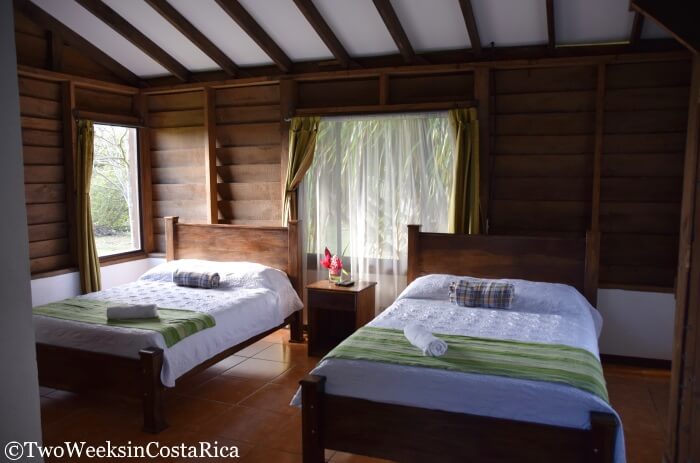
Paraiso Volcano Lodge
Paraiso Volcano Lodge consists of a handful of cabins located in Guayabal at the base of the Miravalles Volcano. The small lodge is probably best known for its owner, who makes sure that each guest receives personalized attention. Meals are fresh and cooked to order. This is great choice for budget travelers and families trying to save some money. Around $50/night (double occupancy). Check Rates and Availability Here .
Rio Perdido Resort
The Rio Perdido is a destination in and of itself. Located near the town of Fortuna in a remote and seemingly untouched area, this high-end resort has 20 modern bungalows set in the thick forest. Guests can enjoy the 26 km (16 miles) of hiking and mountain biking trails, as well as the zip line for some adventure.
There is also ample opportunity to just relax with a soak in the natural hot springs, a rejuvenating yoga session, or some pampering at the spa. For those looking to disconnect from it all, the Rio Perdido is the perfect place to do so. $200-400/night. Check Rates and Availability Here .
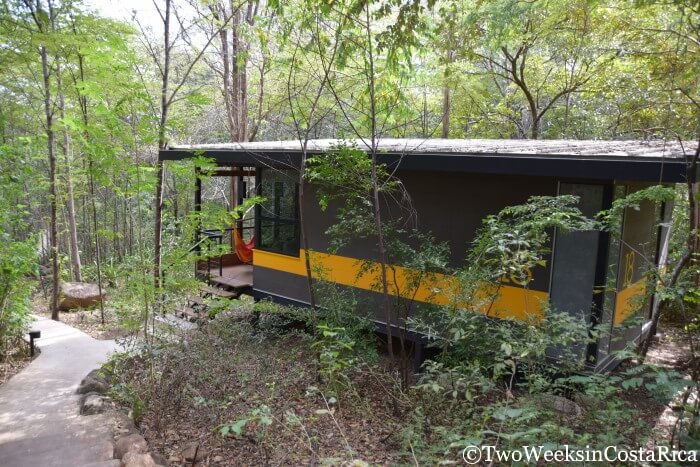
Miravalles is a little-known destination in Costa Rica with a lot to offer. If you prefer off-the-beaten-path travel, but still want to experience volcanic hot springs, this area offers the perfect mixture of both.
Have a question about visiting the Miravalles region? Ask it below.
Some of the links in this post are affiliate links. If you book a hotel using one of the links, we receive a small commission at no extra cost to you. Read our Privacy Policy for more information.
Looking for more information to help plan the perfect Costa Rica vacation? Check out these articles:
Bijagua: A Gateway to the Rio Celeste – Less than 1.5 hours from Miravalles, this is another rural town that offers some stunning attractions and a bit of culture. The nearby Rio Celeste Waterfall is one of Costa Rica’s most beautiful.
Rental Car Discount – If you’re visiting Costa Rica’s lesser known towns, you will probably want a rental car. Use our discount to save 10% or more and get other perks.
Playa Hermosa (Guanacaste): Costa Rica’s Northern Beauty – Translating to Beautiful Beach, Playa Hermosa lives up to its name with a gorgeous cove. This is one of the closest beach towns to Liberia Airport, and its location allows for easy day trips to places like the Miravalles Volcano.
Related Posts
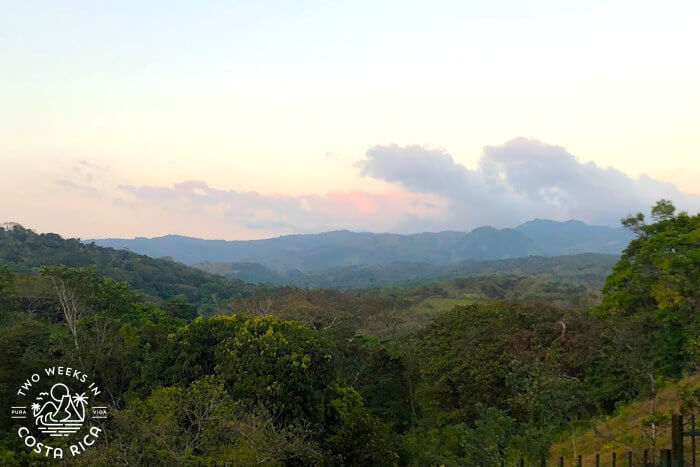
Add Trees to Your Order
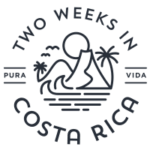
Become a Subscriber!
Receive our newest articles by email. It’s free.
Dave's Travel Corner
Seeing the World One Step at a Time
Visitor submitted travel journals. Submission guidelines
Where to see active volcanoes in costa rica.
March 8, 2019 by The Agape Co. 2 Comments
Home to over 200 volcanic structures and 6 active volcanoes, it’s difficult to visit Costa Rica and not see one! Not all of the volcanoes in Costa Rica are the conic shaped ones you see at science fairs, but all are just as mesmerizing as those baking soda experiments. Your trip to Costa Rica isn’t complete without visiting at least one of these famous active volcanoes!
Some of the best volcanoes in Costa Rica are easier to get to than others, but this guide examines them from a different standpoint… how cool they are! Be sure to check for activity and park closures before planning your trip, they are active remember. If you’re feeling extra incredible, please shoot this post a like and a share and, as always, enjoy! One last thing before you get too far, remember to…
Pin our guide on Where to See Active Volcanoes in Costa Rica!
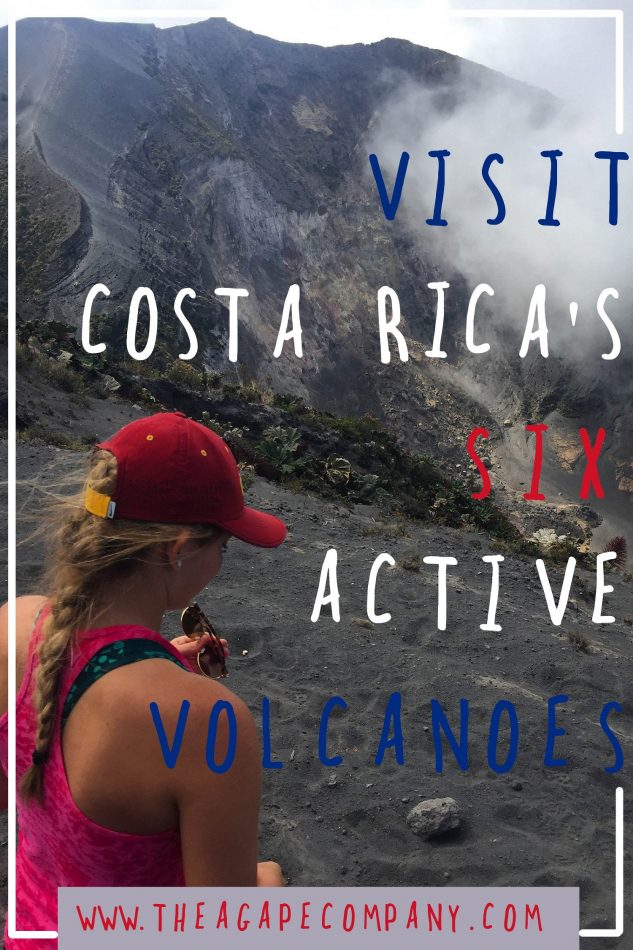
Arenal Volcano
Located 84 miles northwest of San José in the Guanacaste Volcanic Range, Arenal is one of the most photographed volcanoes in Costa Rica due to its natural conic shape. Although it hasn’t erupted since 2010, its base city, La Fortuna, is still a popular tourist spot because of its quaint downtown and proximity to La Fortuna Waterfalls. And one can stay at the Springs Resort & Spa .
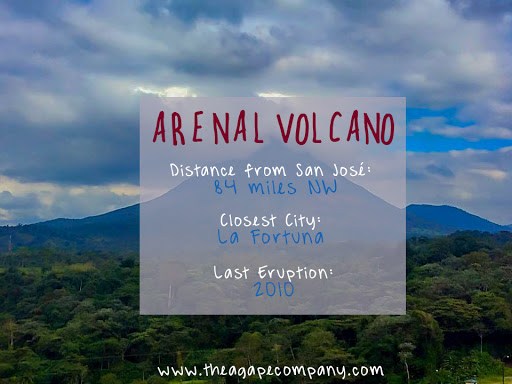
Poás Volcano
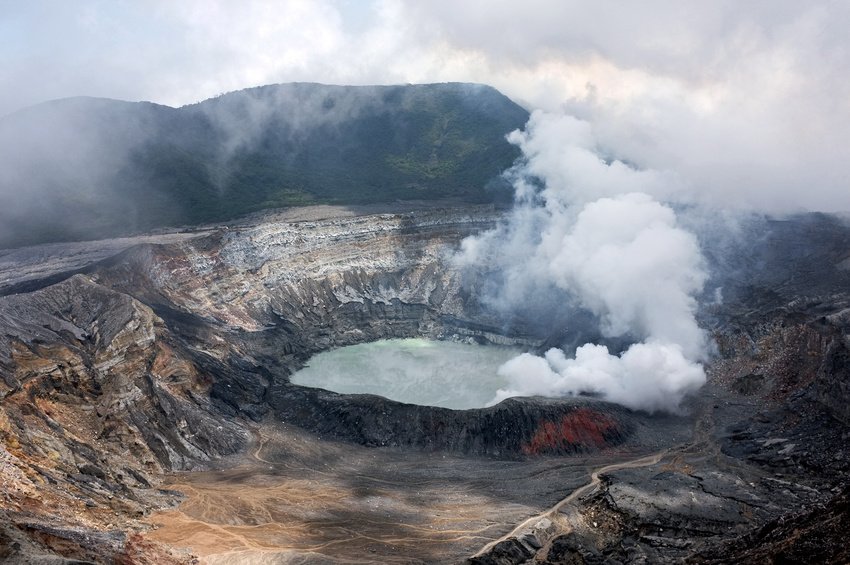
Irazú Volcano

Rincón de la Vieja Volcano
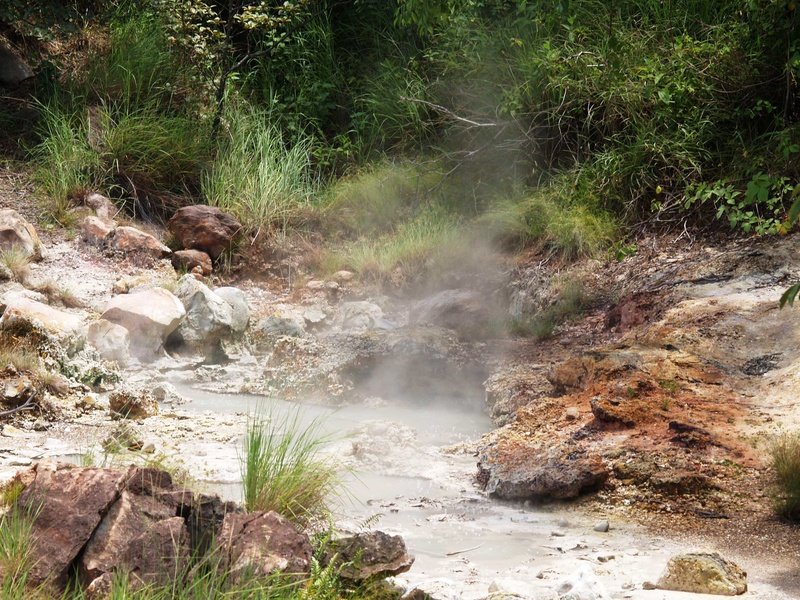
Turrialba Volcano
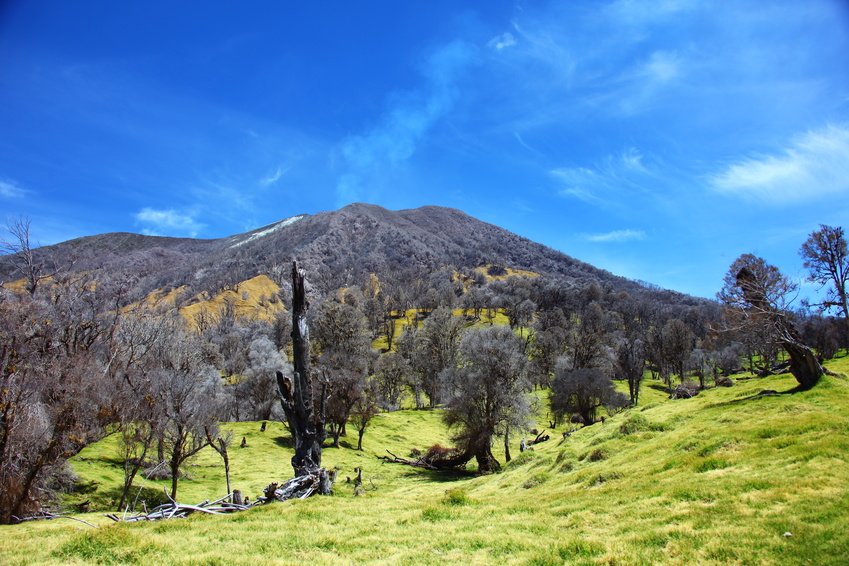
Tenorio Volcano
Located 130 miles northwest of San José, this volcano was closed for a couple of days in early 2018 due to activity, but is now back open. Always make sure to check before you visit as conditions change daily! Boasting four volcanic peaks (one of them earned its own name– Montezuma Volcano), the Tenorio Volcano is located in the Tenorio Volcano National Park. While you’re there, you can also see the infamous Río Celeste Waterfall!
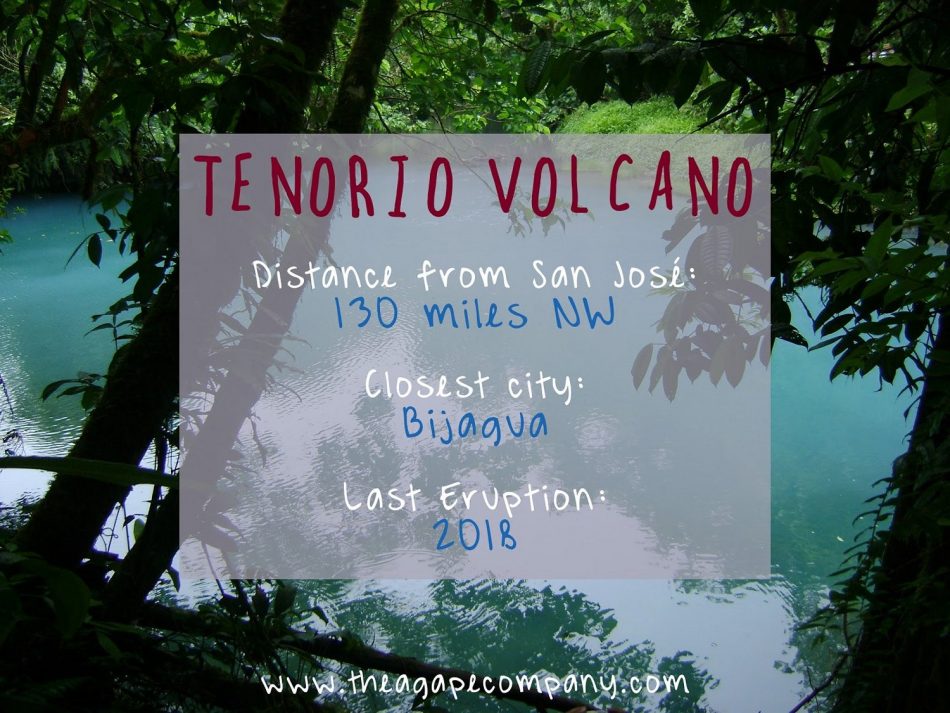
That’s that! A summary of all six active volcanoes in Costa Rica. Of course there are dozens of other volcanoes you can visit in the country, but doesn’t the thought of hiking on or near an active volcano get your blood pumping!? Have you visited any of these volcanoes in Costa Rica? If not, which one would you like to visit? Will you be stopping at any on your next trip to Costa Rica? Let us know in the comments below!
Related posts:
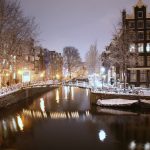
March 15, 2019 at 4:07 pm
Thanks for all the info and fantastic photos, The Agape Co. We’ve never been to Costa Rica – it’s on our list. Your article is very encouraging for a trip that hopefully we can make later this year. M&G NYC
March 16, 2019 at 5:52 am
I want to go back to the coffee plantation in sight of Arenal!
Leave a Reply
Your email address will not be published. Required fields are marked *
Save my name, email, and website in this browser for the next time I comment.
This site uses Akismet to reduce spam. Learn how your comment data is processed .
- Above the Clouds
- Highlight of the Month
- Press Releases
- Book Reviews
- Quiz: Geography
- Quiz: Travel
- Tour Booking
- Travel Insurance
- Travel Products
- Contributors
- Media Coverage

- Newly Listed
- Remote Work Friendly
- Large Groups
- Hacienda Pinilla
- Playa Conchal
- Playa Grande
- Private Chef
- Water Sports
- Land Adventures
- Full Day Tours
- Sport Fishing
- Accomodations
- Pangas Beach Club
- Transportation
- Property Management
- Sustainable stay
- Toll Free Phone Number + (506) 2653 1561
- Phone Number +1 (754) 223 0031

A Guide to Costa Rica's Active Volcanoes: They're Dynamite!
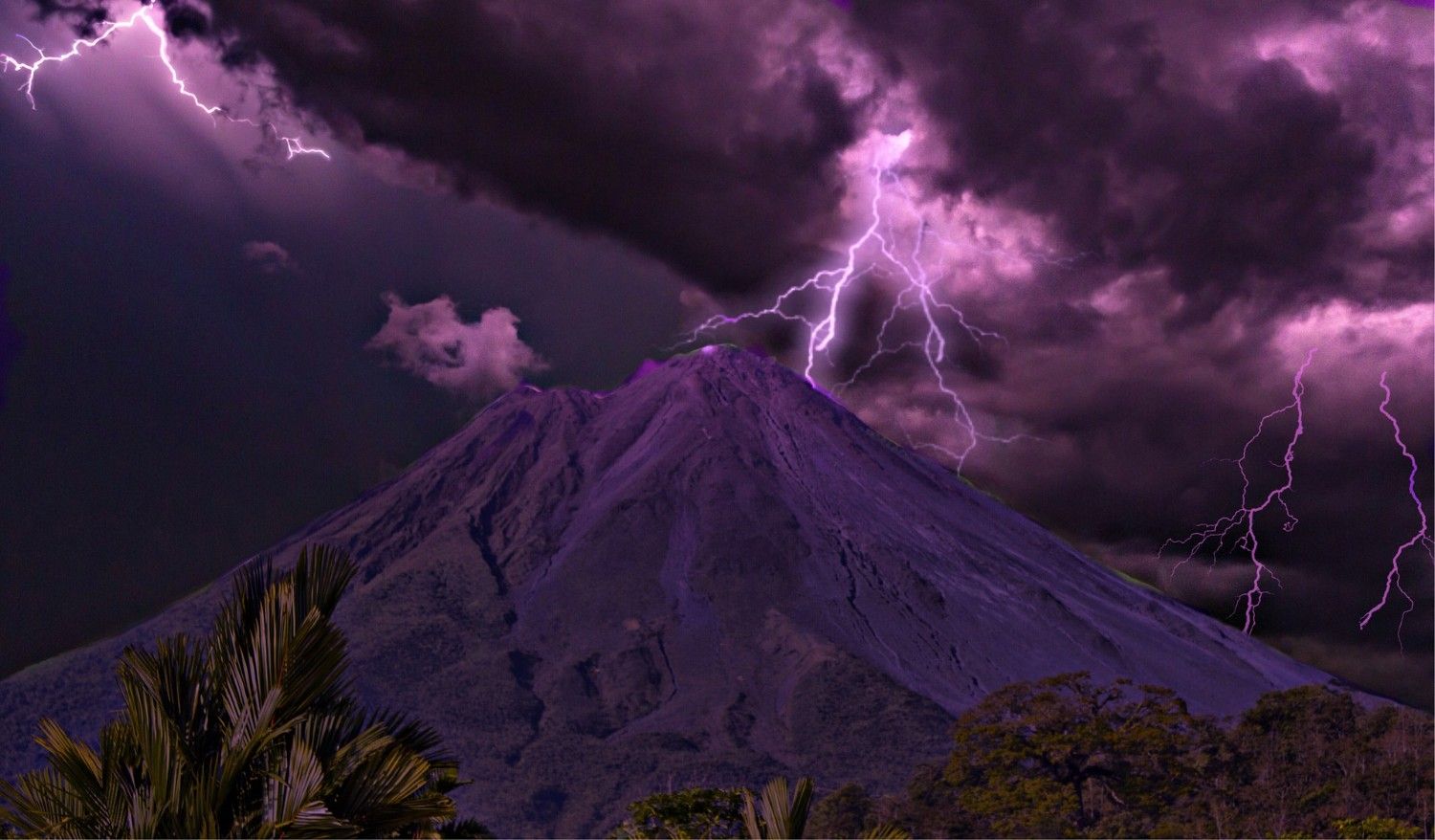
Three Erupting Volcanoes – and Counting!
Rincón de la vieja volcano.
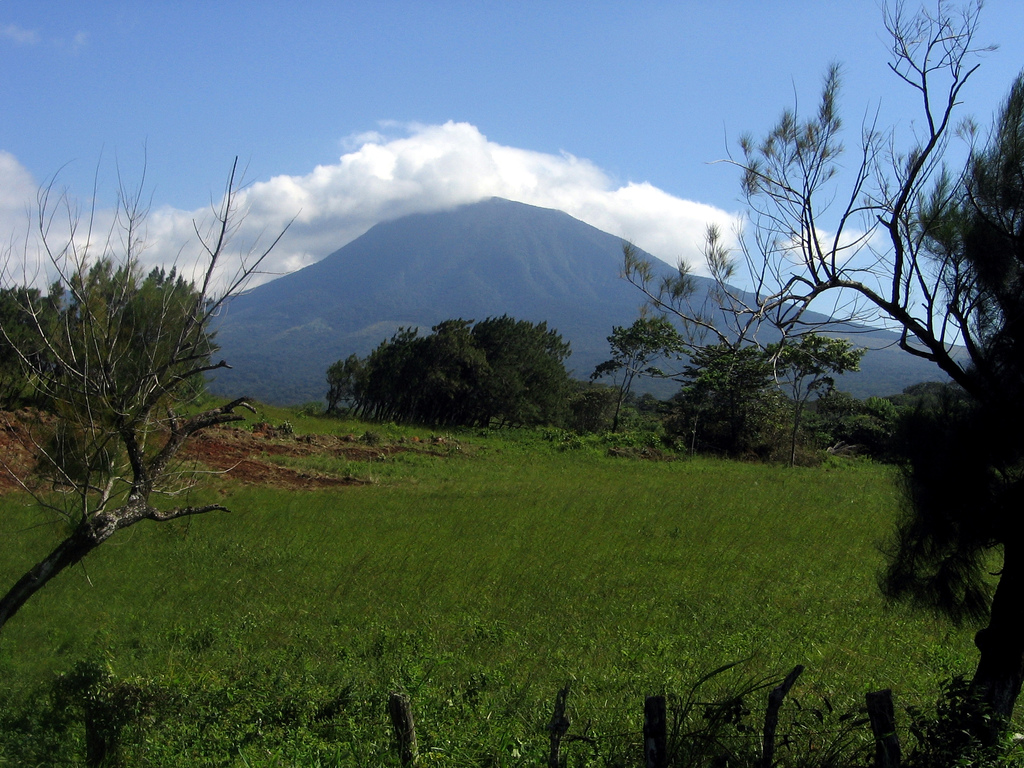
Poás Volcano
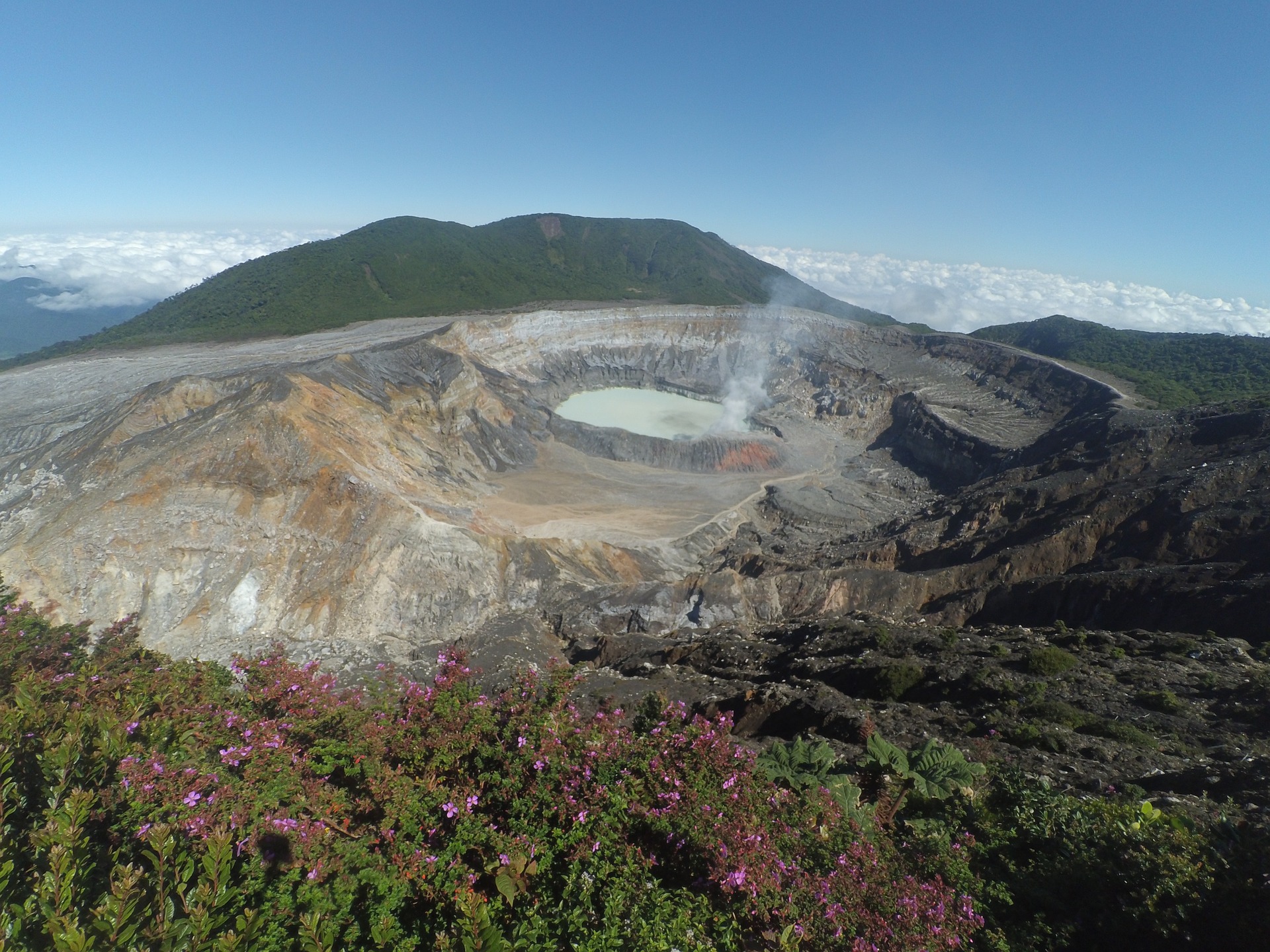
Arenal Volcano
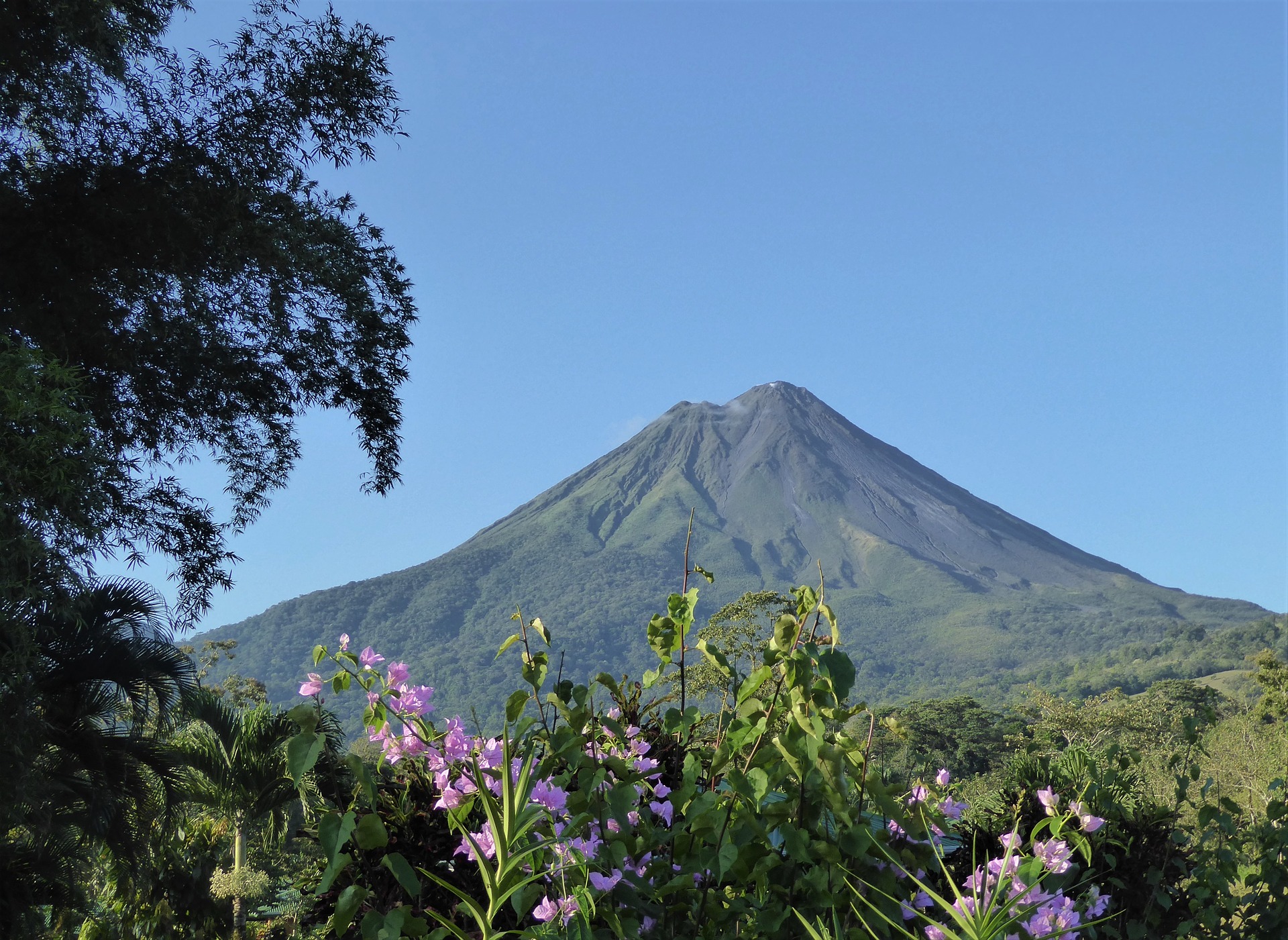
Irazú Volcano
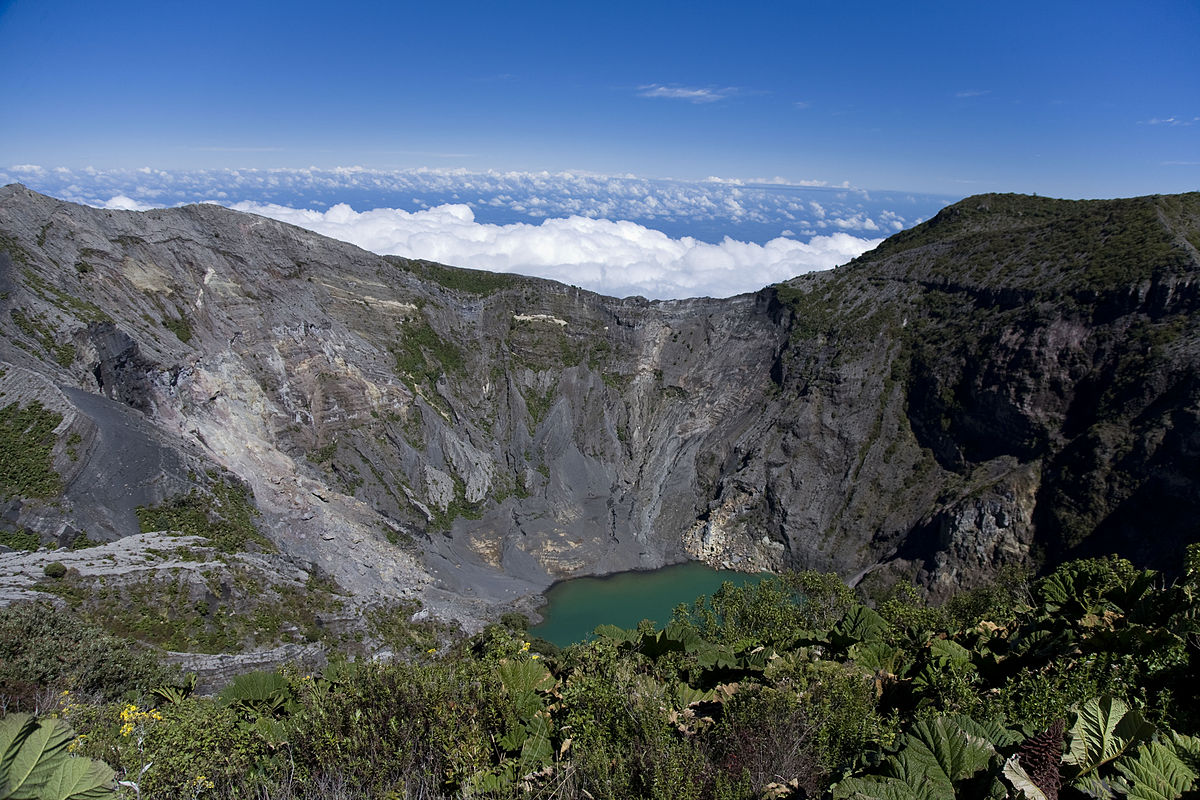
Turrialba Volcano
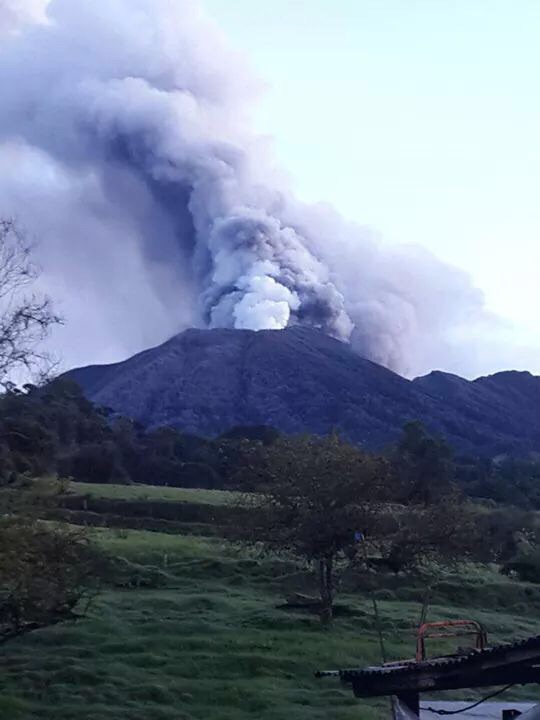
Tenorio Volcano
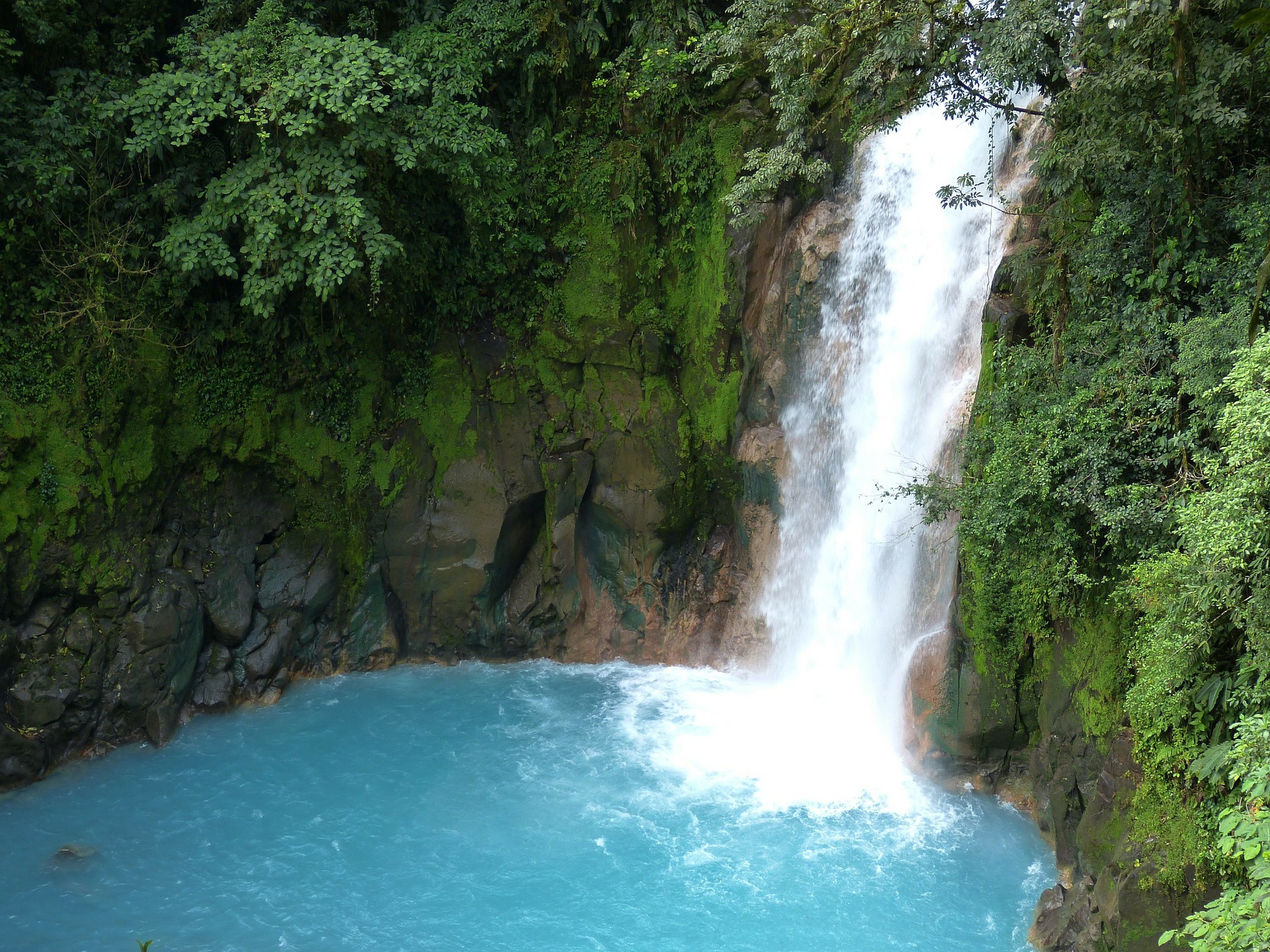
- Corporate Retreats (8)
- Costa Rica (75)
- Costa Rica Travel Costs (3)
- Deals & Promotions (3)
- Family Travel (15)
- Group Travel (10)
- Nature & Wildlife (18)
- Tamarindo (12)
- Tamarindo Daytrips (20)
- Tamarindo Honeymoons (3)
- Tamarindo Lifestyle (24)
- Tamarindo Nightlife (15)
- Tamarindo Retreats (16)
- Tamarindo Reunions (6)
- Tamarindo Travel Guide (130)
- Tamarindo Wedding Guide (27)
- Things to Do (38)
- Vacation Rentals in Tamarindo (42)
- active volcanoes in costa rica (1)
- beaches (2)
- book now and help community (1)
- coronavirus (1)
- costa rica (1)
- costa rica coronavirus (1)
- costa rica covid (1)
- Costa Rica honeymoon (1)
- costa rica new years (3)
- costa rica turtles (1)
- costa rica volcano (1)
- entertainment (1)
- Hacienda Pinilla (1)
- holidays (2)
- most active volcano in costa rica (1)
- sea turtle nesting (1)
- surfing (3)
- Tamarindo (1)
- tamarindo nightlife (1)
- Tamarindo restaurants (3)
- travel costa rica (1)
- vacation planning (3)
- waterfalls in guanacaste costa rica (1)
Recent Posts
- Costa Rica Easter Week: Traditions, Activities, Attractions & Accommodations 3/21/2024
- Insider Tips, Packing & Luxury Rentals in Costa Rica: Plan Your Trip 2/27/2024
- Spotlight On Playa Langosta: Rentals, Things to Do, Travel Tips and More 1/15/2024
- Holiday Vacay: The Best Holidays to Visit Costa Rica, What to Do & Where to Stay 12/14/2023
- Bring in the New Year in Costa Rica - Our Top Events & Things to Do 11/17/2023

- Vacation Rentals
- Luxury Villas Pinilla
- Luxury Villas Costa Rica
- Vacation Rentals of Tamarindo
Copyright © 2024 Stay in Tamarindo. All Rights Reserved. Web Design by InterCoastal Net Designs
Volcanoes in Costa Rica
Visit the fiery peaks of costa rica.
Costa Rica blessed with a rich volcanic landscape, offering awe-inspiring sights and unforgettable experiences for adventurers and nature enthusiasts. In this article, we will guide you through the best volcanoes to visit in Costa Rica, where you can witness breathtaking views and immerse yourself in the powerful forces of nature. From the majestic Arenal Volcano to the stunning Poás Volcano, each volcanic destination showcases the unique beauty and geological wonders that define Costa Rica.
Table of Contents
Arenal volcano, rincón de la vieja volcano, irazú volcano, poás volcano.
- Activities Around The Voncanoes
- Costa Rica’s volcanic history
- Ecosystems surrounding CostaRica’s volcanoes
- How to safetly visit volcanoes in Costa Rica
- FAQ: Volcanoes in Costa Rica
Must Visit Volcanoes in Costa Rica
Exploring Costa Rica’s volcanoes is a thrilling and awe-inspiring adventure that allows you to witness the raw power and natural beauty of these majestic geological formations. With its remarkable volcanic landscape, Costa Rica offers a unique opportunity to delve into the heart of these volcanic wonders.
One of the top destinations for volcano enthusiasts is the iconic Arenal Volcano . Rising majestically above the surrounding rainforests and the city of La Fortuna, Arenal provides a mesmerizing view of a perfectly conical volcano. From 1968 to 2010, Arenal Volcano was characterized by continuous lava flows and hot rock emissions. However, in 2010, this activity abruptly ceased, leading Arenal into a dormant state where it has remained since.
Trekking through the lush trails surrounding the volcano offers a chance to witness its mighty presence up close. Additionally, you can indulge in soothing hot springs near Arenal, immersing yourself in warm mineral-rich waters while enjoying panoramic views of the volcano.
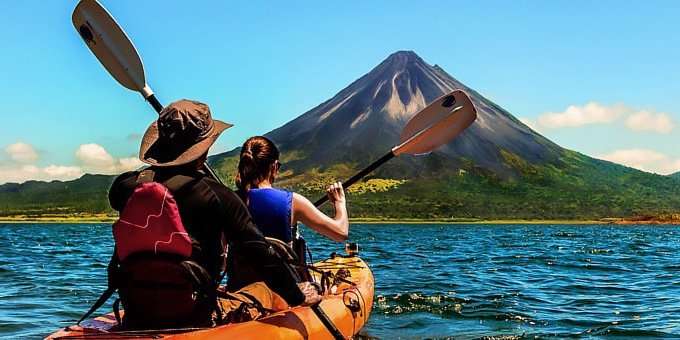
Turrialba Volcano
The Turrialba Volcano showcases a different aspect of Costa Rica’s volcanic wonders. Though its summit is restricted due to ongoing volcanic activity, the surrounding national park offers trails that lead through scenic cloud forests and captivating views of the volcanic peak. This surrounding park attracts fewer visitors compared to others in the country, offering more rustic and challenging trails. This area is renowned for its rich birdlife, making it a paradise for birdwatchers seeking to spot various avian species.
For a unique experience, head to Rincón de la Vieja Volcano , located in the namesake national park. This active volcano offers not only spectacular views but also the chance to explore volcanic phenomena such as fumaroles and bubbling mud pots. The park’s more than 40 kilometers (25 miles )trails lead you through fascinating landscapes of steam vents and pristine waterfalls, immersing you in the volcanic wonders and the rich biodiversity that thrives in this unique environment.
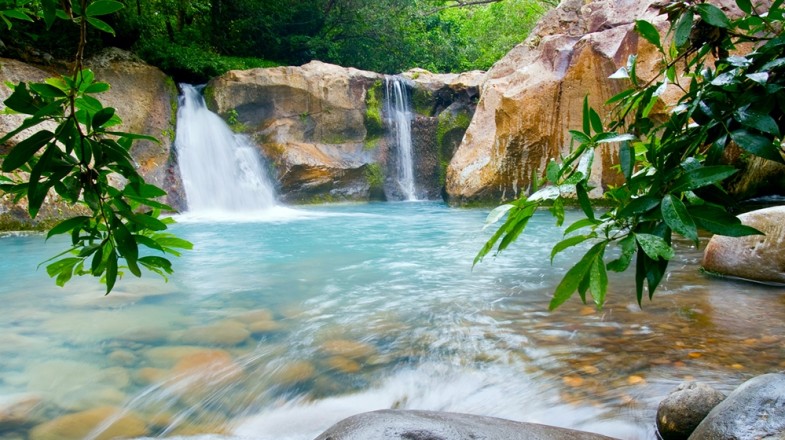
Irazú Volcano is the tallest volcano in Costa Rica, stretching 3,432 meters (11,260 feet) above sea level. It it situated in Irazú National Parkm 14 km (8.7 miles) northeast of Cartago.
Visitors are rewarded with stunning panoramic views from its summit. On clear days, you can witness the breathtaking sight of both the Caribbean and Pacific coasts from this vantage point. The volcano’s immense crater, adorned with a greenish-yellow acid lake, creates a captivating contrast against the surrounding landscapes. The journey to the summit offers an unforgettable experience as you traverse through otherworldly landscapes of volcanic ash and lush vegetation.
Another must-visit volcano is Poás Volcano , which boasts one of the largest active craters in the world. The breathtaking view from the edge of the crater is an unforgettable sight. The surrounding national park is Costa Rica´s most popular, drawing over 300,000 visitors anually,much due to its proximity to San José — just 45 km (28 miles). The park offers hiking trails that wind through cloud forests, leading to stunning viewpoints and diverse ecosystems.
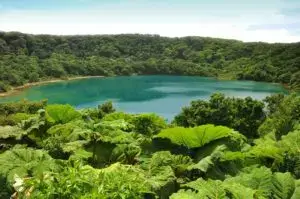
Activities Around The Volcanoes
The volcanoes of Costa Ricay provide a thrilling backdrop for a range of adrenaline-pumping adventures that will leave adventure seekers in awe. From exhilarating hikes to breathtaking views, there is no shortage of activities to enjoy at Costa Rica’s volcanic sites.
One of the top activities for adventurers is hiking along the trails that wind through the volcanic landscapes. Ascending the slopes of a volcano allows you to witness the raw power and beauty of these natural wonders up close. The rewarding views from the summit, overlooking vast expanses of lush greenery or peering into the depths of a volcanic crater, are nothing short of awe-inspiring. The challenging yet fulfilling experience of hiking a volcano in Costa Rica is an adventure that every outdoor enthusiast should embark upon.
For those seeking a different perspective, zip-lining across the volcanic forests is an exhilarating option. Suspended high above the treetops, you can soar through the air and marvel at the panoramic views of the surrounding volcanoes and the diverse Costa Rican landscapes.
The adrenaline rush and the unique vantage point make zip-lining an unforgettable experience that combines adventure and natural beauty.
Another activity that offers a captivating blend of adventure and relaxation is indulging in the soothing thermal baths and hot springs that are often found near volcanic areas. These natural hot springs are fed by geothermal activity, creating warm and mineral-rich pools where you can soak and unwind while taking in the stunning vistas. It’s the perfect way to rejuvenate after a day of exploration and immerse yourself in the tranquil ambiance of the volcanic surroundings.
For those with a passion for photography, capturing the beauty of Costa Rica’s volcanoes is an adventure in itself. The ever-changing light, dramatic landscapes, and unique geological formations provide endless opportunities for capturing stunning images. From sunrise and sunset views to the interplay of clouds and volcanic peaks, the photography possibilities are boundless. Whether you’re a professional or an amateur photographer, Costa Rica’s volcanoes offer an incredible canvas to unleash your creativity and capture moments of natural grandeur.
Read more: Top 5 Hot Springs In Costa Rica
Costa Rica's Volcanic History
Costa Rica’s Volcanic History is a fascinating tale of fire and earth, spanning millions of years. This small Central American country is home to over 200 volcanic formations, with five active volcanoes that draw adventurers from all corners of the globe.
The geological story begins with the formation of Costa Rica itself, as tectonic plates collided and shaped the land we see today. The country sits along the Pacific Ring of Fire, a region known for its seismic activity and volcanic eruptions. Over time, these powerful forces have sculpted an awe-inspiring landscape dotted with majestic peaks. One of the most renowned volcanoes in Costa Rica is Arenal Volcano. Its last major eruption occurred in 2010, leaving a lasting impact on the surrounding region. This event served as a stark reminder of the dynamic nature of these volcanoes and the powerful forces at work beneath the Earth’s surface.
Another notable date in Costa Rica’s volcanic history is the eruption of Poás Volcano in 1910. This eruption marked a significant event, shaping the landscape and leaving behind a stunning crater lake that is now a focal point of the Poás Volcano National Park. Visitors can marvel at the turquoise waters and steam vents, offering a captivating glimpse into the volcano’s powerful past.
Costa Rica’s volcanic history is a continuous process of creation and transformation. The volcanic activity has not only shaped the physical features of the country but also contributed to its incredible biodiversity. Volcanic soil enriches the land, creating fertile grounds for lush rainforests to thrive, supporting a wide array of flora and fauna.
Ecosystems Surrounding Costa Rica's Volcanoes
The volcanoes of Costa Rica are not only magnificent geological formations but also serve as focal points for diverse ecosystems that thrive in their surroundings. These ecosystems are a testament to the resilience of life and the interconnectedness of nature.
Each volcano in Costa Rica boasts its own unique ecosystem, offering visitors a glimpse into the remarkable biodiversity that flourishes amidst volcanic landscapes.
As you explore the volcanoes, you’ll encounter a rich tapestry of plant and animal life. The lush rainforests surrounding these volcanoes are home to an incredible variety of species, including numerous birds, mammals, reptiles, and insects. Colorful toucans and vibrant hummingbirds dart through the forest canopy, while howler monkeys swing from tree to tree, filling the air with their distinctive calls.
In the vicinity of the volcanoes, you may also come across fascinating creatures such as sloths, known for their slow and deliberate movements. These arboreal mammals are well adapted to the dense vegetation and can often be spotted high in the trees, peacefully grazing on leaves.
Another iconic resident of these volcanic ecosystems is the resplendent quetzal , a stunning bird with vibrant plumage and an elegant tail. The quetzal is highly regarded in Costa Rican culture and is considered a symbol of beauty and freedom. Spotting this magnificent bird in its natural habitat is a true delight and a cherished moment for wildlife enthusiasts.
The volcanic landscapes of Costa Rica also provide ideal conditions for amphibians, including the brightly colored poison dart frogs. These tiny but vibrant creatures, with their distinct patterns and vivid hues, add a touch of wonder to the forest floor. While their vibrant colors serve as a warning to potential predators, they are also a visual spectacle for visitors fortunate enough to encounter them.
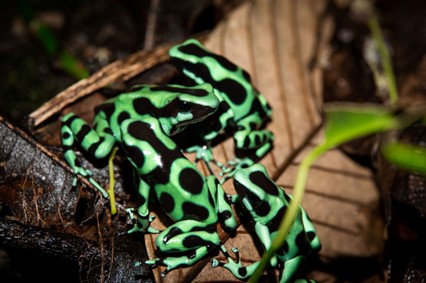
How to Safely Visit Volcanoes in Costa Rica
When planning a visit to the volcanoes in Costa Rica, it’s crucial to prioritize safety to ensure a memorable and secure experience. While these natural wonders offer breathtaking views and opportunities for exploration, it’s important to be aware of potential hazards and take necessary precautions.
Research and prepare : Before visiting any volcano, gather information about the specific volcano’s current activity, accessibility, and any safety advisories. Check with local authorities, park websites, or visitor centers for the latest updates. It’s also essential to familiarize yourself with the trail conditions and the necessary equipment or permits required for hiking or accessing certain areas.
Follow official guidelines : Always adhere to the guidelines and instructions provided by park authorities and signage. Respect any restricted areas or closures for public safety. These regulations are in place to protect both visitors and the fragile ecosystems surrounding the volcanoes.
Stay on designated paths : Stick to established trails and designated viewing areas. Venturing off-trail can pose risks, including exposure to unstable terrain or potential encounters with hazardous gasses. By staying on marked paths, you can enjoy the volcano’s beauty while minimizing environmental impact.
Be prepared for changing weather conditions : Costa Rica’s volcanoes are often located at higher elevations, where weather conditions can be unpredictable. Bring appropriate clothing, including layers, rain gear, and sturdy footwear. Protect yourself from sun exposure by wearing a hat, sunglasses, and sunscreen.
Stay updated on volcanic activity : Monitor the volcano’s activity before and during your visit. Volcanic conditions can change rapidly, so it’s important to stay informed about any new developments. Pay attention to any updates or warnings issued by authorities and adjust your plans accordingly.
Respect natural hazards : Volcanoes are dynamic geological features with inherent risks. Be aware of potential hazards such as landslides, falling rocks, or volcanic gasses. Stay away from steep cliffs or unstable areas. If you encounter hazardous conditions or signs of volcanic unrest, it’s best to retreat to a safe distance.
Travel with a knowledgeable guide : Consider hiring a certified guide who is experienced in volcano visits. They can provide valuable insights, ensure your safety, and enhance your understanding of the volcano’s geology and natural history.
By following these safety guidelines, you can enjoy the remarkable experience of visiting volcanoes in Costa Rica while minimizing risks. Remember, safety should always be the top priority when exploring these magnificent natural wonders. Soak in the breathtaking views, appreciate the geological marvels, and relish the awe-inspiring landscapes that only Costa Rica’s volcanoes can offer
Yes, Costa Rica has several active volcanoes, including Arenal, Poás, Rincon de la Vieja, Turrialba, and Irazú.
The volcanoes in Costa Rica are generally safe to visit, but it's important to follow any safety guidelines and instructions provided by authorities
Some volcanoes in Costa Rica offer hiking opportunities, but access to certain areas may be restricted depending on the volcanic activity. Check with local authorities and park rangers for up-to-date information.
Yes, there are guided tours available that offer visits to the volcanoes in Costa Rica. These tours often provide valuable insights and ensure your safety during the exploration.
Yes, there are usually entry fees to visit the national parks or protected areas where the volcanoes are located. The fees contribute to the maintenance and conservation of these natural sites.
The visibility of flowing lava varies depending on the specific volcano and its activity at the time of your visit. It's best to check the current volcanic conditions beforehand.
When visiting volcanoes, it's important to follow safety guidelines, wear appropriate clothing and footwear, stay on designated trails, and listen to instructions from park rangers or guides.
Yes, some volcanoes are located within a reasonable distance from major cities like San Jose, making it possible to visit them as day trips. Plan your itinerary accordingly
Many of the volcanoes in Costa Rica have visitor centers or educational exhibits nearby, providing valuable information about the volcanoes, their history, and the surrounding ecosystems.
Camping may be available in certain areas near the volcanoes, but it's essential to check with park authorities for permits, regulations, and safety considerations.
Drone usage near volcanoes in Costa Rica is typically regulated, and there may be restrictions in place for safety and environmental reasons. Check with local authorities for specific guidelines.
Yes, some volcanoes in Costa Rica have natural hot springs nearby, which offer relaxing and therapeutic experiences. These hot springs are heated by geothermal activity.
Yes, Costa Rica has a volcano monitoring system that includes seismographs, gas emission measurements, and visual inspections to monitor volcanic activity and issue warnings if necessary.
Volcanic eruptions are relatively rare, and witnessing one can be unpredictable and potentially dangerous. It's advisable to prioritize safety and follow instructions from authorities in such situations.
After a volcanic eruption, certain areas may be covered in volcanic ash. It's important to follow any instructions or restrictions given by authorities regarding access to these areas.
Get a free Quote & expert advice
Let us help you create, your dream vacation.
- Explore Packages
- Build My Own
- Destinations
- Reviews & Testimonials
- Groups & Incentive Travel - Tulu DMC
- Why choose Tulu Travel?
- For Travel Agencies
- How do I book & Pay my trip?
- Why the name Tulu?
- Sustainability
- Terms & Conditions
A proven track record
- Email: [email protected]
- Call: +506 6201 8282
- Address: Sabana Oeste, avenida 12 calle 90 10108 San José, Costa Rica
Let us help you create your dream vacation.
Get in contact with one of our Local Travel Experts and get a FREE proposal Today
We Know Costa Rica 👍

Call us Now
Schedule a call.

Let us help you create the perfect Fishing vacation
Get in contact with one of our Local Fishing Experts and get a FREE proposal Today
Contact us for the best wedding proposal in Costa Rica
- Latin America
- Expat Living
- Art and Culture
- Science and Tech
- Classifieds
- Advertise with Us

COSTA RICA'S LEADING ENGLISH LANGUAGE NEWSPAPER
Costa Rica Invests in La Radial de Alajuela to Enhance Tourism and Reduce Traffic
Precious honeyglow: costa rica’s personal-sized pineapple, imn warns of heavy rains as costa rica enters rainy season, u.s. launches coalition for climate entrepreneurship hub in costa rica, actor matt damon’s tale of rescuing a cat in costa rica, norway declines costa rica’s request for oil and gas exploration studies.

The Ministry of Environment and Energy ( MINAE ) informed that Norway rejected the government’s request to support studies on the exploration and exploitation of oil and natural gas.
The Chancellor of the Republic, Arnoldo André, and the Minister of Environment, Franz Tattenbach, held a meeting with the Norwegian Ambassador, Ragnhild Imerslund, the First Secretary for Political Affairs, Line Hammeren, and the Special Ambassador for Climate and Forests, Karine Hertzberg.
Ambassador Ragnhild Imerslund stated that in Norway, the resource is state-owned, but the exploration and exploitation of oil and natural gas are in the hands of the private sector.
The Norwegian Delegation informed them that these studies are very expensive, and that the “Oil for Development program” was discontinued as of 2024.
“They extended an invitation to visit that country to learn more about how production operates in all its stages,” the Costa Rican government informed.
Franz Tattenbach thanked the Norwegian government for the invitation but clarified that “we do not consider that a field visit by Costa Rican representatives is sufficient to obtain all the information and knowledge that is required in the analysis of such a vital issue for the country.”
Regarding the bill to prohibit the exploitation and exploration of oil and natural gas in the country, Tattenbach recalled that the government’s position has not changed and reiterated that it would be a shame to bury this proposal without a serious national discussion on the subject.
“It’s unfortunate that we couldn’t get help from a country like Norway, which is an ally in environmental conservation, to conduct the essential desktop studies needed to update our data. This update is crucial for sparking a national discussion, as the President has stressed.”
During the meeting, various environmental topics were also discussed. For instance, both nations reviewed the carbon credits and the resources granted to Costa Rica for Forest Emissions Reduction, the importance of the High-Level Ocean Event, called “Immersed in Change,” to be held on June 7 and 8 in Costa Rica, among other relevant matters. Norway confirmed that a high-level delegation will attend the event.
During the meeting, both nations reinforced their commitment to favor marine governance and ocean protection.

Weekly Recap
Costa rica weekly news recap april 7, 2024: poas volcano, reforestation and the disabled.

Latest Articles
U.s. and costa rica forge strategic alliance in technology and telecommunications, poas volcano national park temporarily closed due to increased volcanic activity, spanish football federation interim president pedro rocha under investigation in graft scandal, costa rica’s film industry gains momentum with $10 million reality show.


IMAGES
VIDEO
COMMENTS
There are five active volcanoes in Costa Rica: Turrialba Volcano, Poas Volcano, Arenal Volcano, Rincon de la Vieja Volcano, and Irazu Volcano. To be categorized as active, volcanoes must have erupted in the last 10,000 years. Why does Costa Rica have so many volcanoes?
The Rincon de la Vieja Volcano is 1,916 meters (6,286 feet) tall and is one of the most-visited volcanoes in Costa Rica. It is located within the Rincon de la Vieja National Park, an hour's drive from the city of Liberia in the province of Guanacaste.This national park is interestingly also home to another volcano, the dormant Santa Maria Volcano.
Irazu is the tallest volcano in Costa Rica, reaching around 11, 260 ft (3, 432 m). The national park is almost 6000 acres and is full of wildlife and interesting plants to see. There are so many options for food, drinks, picnic locations and excellent hiking trails in the park! Elevation: 3,432 m (11,260 ft)
Best Volcanoes to Visit in Costa Rica. 1. Arenal Volcano. Arenal is the most famous volcano in Costa Rica. That's because, between 1968 and 2010, it ejected a steady stream of lava and hot rocks. This delighted visitors, who watched the glowing eruptions safely from afar, then relaxed in natural hot springs nearby.
The 5 active volcanos in Costa Rica. In Costa Rica, a volcano is considered active if it has erupted in the last 10,000 years. Currently, there are 5 active volcanos in Costa Rica, and they're popular for their steaming craters and sometimes lava flows. The big names here are Arenal, Poás, Rincón de la Vieja, Irazú, and Turrialba, which ...
Further south in Guanacaste lies the iconic Arenal Volcano, towering at an elevation of 1,657 meters and historically one of the most active volcanoes in Costa Rica. Although its eruptive phase has paused since 2010, Arenal's symmetrical cone shape still dominates the local skyline, offering a majestic backdrop to the surrounding rainforest ...
Written by Nikki Solano. Nikki is the CEO of Pura Vida! eh?Inc. (Costa Rica Discounts), and the author of the guidebooks Moon Costa Rica (2019, 2021, 2023, and 2025 editions) and Moon Best of Costa Rica (2022 edition) from Moon Travel Guides.Together with her Costa Rican husband, Ricky, she operates the Costa Rica Travel Blog, created the online community DIY Costa Rica, built the Costa Rica ...
The iconic Arenal Volcano is located in the northwestern part of Costa Rica, towering beautifully over the town La Fortuna. The most well-known active volcano in Costa Rica is surrounded by the Arenal Volcano National Park and Lake Arenal. The Arenal Volcano is still considered active, but there hasn't been an eruption since 2010.
Arenal Volcano. Arenal, at 1,670 meters above sea level, is undoubtedly the most well-known of Costa Rica's volcanic giants since it is one of the world's top ten most active volcanoes. It is in the nation's northern region and towers above the lush surroundings, where the best coffee globally is grown on plantations.
Irazú Volcano. Although the highest active volcano in Costa Rica, at 11,260ft (3,432m), Irazú is one of the easiest to visit, sitting within proximity of the capital, San José. It even has a road leading right up to the summit traversed by a weekly bus service. Between 1963 and 1965, a major eruption showered the nearby capital with ash and ...
The 7 Best Volcanoes to See in Costa Rica. 1. Irazu Volcano. Volcan Irazu, or simply Irazu, is an active volcano located on the Cordillera mountain range in central Costa Rica, near the city of Cartago. Its name is thought to have been a combination of "ara", or point, and "tzu", or thunder. Others believe the name came from an ...
Arenal is an exemplary volcanic cone and perhaps the most famous volcano in Costa Rica for many reasons. Until 2010, it was the most active in Costa Rica, as smoke and lava frequently rose from its peak and steamed up the hot springs. Although Arenal Volcano has been calm since it is still considered active and can erupt at any time.
Drive up Crater. At times Costa Rica has had three drive up volcanoes. Currently Poás and Irazú are open. Visits to Irazú tripled in 2017 after the closure of Poás and Turrialba. Although the colossus dominates the eastern skyline and appears close enough to touch from downtown San José it takes over an hour and a half to wind up the paved ...
Arenal. Arenal Volcano is probably the most renowned volcano in Costa Rica because of its multiple eruptions between 1968 and 2010. It is located 3 hours from San Jose and stands at 5,436 ft (1,657 m). It is illegal to climb to the top of Arenal, but many people still make the 10 to 11-hour hike.
The volcanoes of Costa Rica can be divided into 3 volcanic range systems. The Guanacaste Range is home to the Ricon de la Vieja, Orosi Volcano, Miravalles Volcano, Tenorio Volcano & Arenal Volcano. The Central Volcanic Range is made up of the Poás Volcano, Barva Volcano, Irazú Volcano, & Turrialba Volcano.
Popular Volcanoes to Visit in Costa Rica Arenal Volcano. Located inland between the two major international airports is a very popular area call Arenal. This area is known for the volcano (Volcan Arenal), which until very recently one could see lava flowing down the sides of it on a clear evening. This area of the country is known for the ...
The Miravalles Volcano is located in Costa Rica's Guanacaste Province. Though situated inland, it is only about 1.5-2.5 hours from popular beach towns like Playa Hermosa, Playa Conchal, and Playa Tamarindo. Two small towns, Guayabal and Fortuna, sit on the southwestern side of the volcano. These towns offer a glimpse of local culture, with ...
The Irazu Volcano National Park is one of the easiest volcanoes to reach in Costa Rica next to its brother, Poas. It is located at only 30 kilometers from Cartago and 50 kilometers from San Jose. The name Irazu is derived from indigenous word meaning thunder" or "place that shakes". It certainly has been doing that in the past!
There are hundreds of volcanoes in Costa Rica so finding Costa Rica's best volcanoes may seem impossible. That's why we made this amazing Costa Rica travel guide- Costa Rica Volcanoes- so they aren't hard to find anymore! If you're looking for things to do in Costa Rica, planning a trip to Costa Rica, or just love looking at Costa Rica ...
Standing tall over the Central Valley, this stratovolcano and its parent Poás Volcano National Park was Costa Rica's most-visited national park until 2017, when it roared to life with an ashy fury. Though Poás had registered 40 eruptions since 1828, the 2017 ash cloud evacuated towns and caused the park to close indefinitely; as of 2018, Poás Volcano is still actively active and Poás ...
Irazú Volcano, the tallest volcano in Costa Rica, rewards visitors with stunning panoramic views from its summit.On clear days, you can witness the breathtaking sight of both the Caribbean and Pacific coasts from this vantage point. The volcano's immense crater, adorned with a greenish-yellow acid lake, creates a captivating contrast against the surrounding landscapes.
The Irazú Volcano hike is a short but breathtakingly scenic trail that gives visitors the chance to stand atop of Costa Rica's highest, not to mention one of its most active volcanoes.The flat trail within Irazú Volcano National Park can be covered in less than an hour, with incredible views in every direction. Hiking Irazú Volcano in Costa Rica is a great half-day trip.
The stunning Miravalles Volcano is located in the Guanacaste province where there is tropical yet dry climate. This beautiful volcano stands 1969ft (600m) above sea level raising a total height of 6654ft (2028m). The National Park makes up around 10,850 hectares of land. The Miravalles Volcano is an andesitic stratovolcano - a successive ...
Arenal Volcano, mentioned above, is Costa Rica's most well-known and active volcano, though it is far from the only one. There are dozens of dormant or extinct volcanoes, as well as five other ...
The Ministry of Environment and Energy informed that Norway rejected the government's request to support studies on the exploration and exploitation of oil and natural gas.The Chancellor of the Republic, Arnoldo André, and the Minister of Environment, Franz Tattenbach, held a meeting with the Norwegian Ambassador, Ragnhild Imerslund, the First Secretary for Political Affairs, Line Hammeren ...
Students and faculty members in the Robbins Healthcare MBA Program examined Costa Rica's healthcare system during the program's first global heath immersion Oct. 15-20, 2022. The entire MBA Cohort of 46 students and four faculty members journeyed to San Jose to explore the country's public, private and governmental healthcare services, along ...